When it comes to designing a classy-looking scooter->ke2250, it's hard to go wrong with old-school European influences and the Buddy family at Genuine Scooters has that Euro panache in spades. The range boasts a 50 cc, 125 cc and freeway-legal, 170 cc mill, so you can size your ride according to your budget and riding needs. Inexpensive to buy and cheap to operate, the Buddy range is meant to serve the demand for efficient, basic transportation while treating the rider to looks that you normally only see in Italian models or one of their knockoffs. I was impressed with Genuine's Venture model, even if the modernistic looks weren't quite my cup o' tea, so it is with great interest that I dig into the cute little Buddy family that definitely has a bit more in the curb-appeal department.
Continue reading for my review of the Genuine Scooters Buddy 50, Buddy 125, and Buddy 170i.
2017 Genuine Scooters Buddy 50 / 125 / 170i
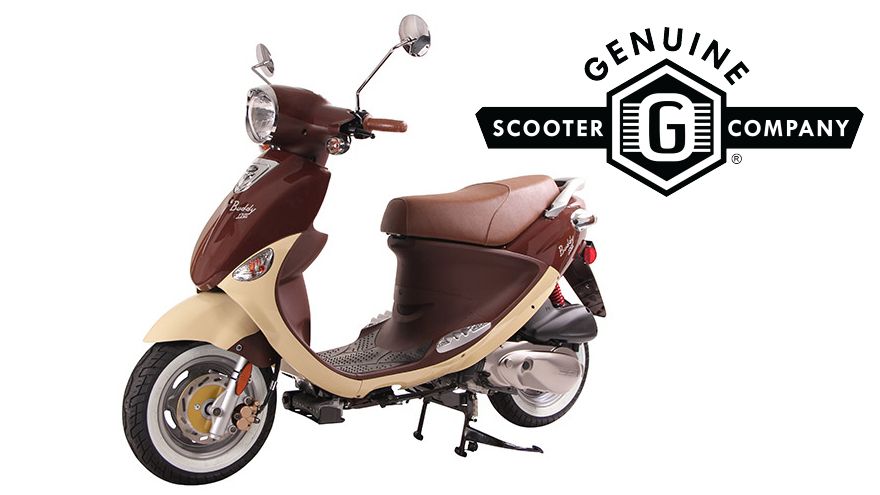

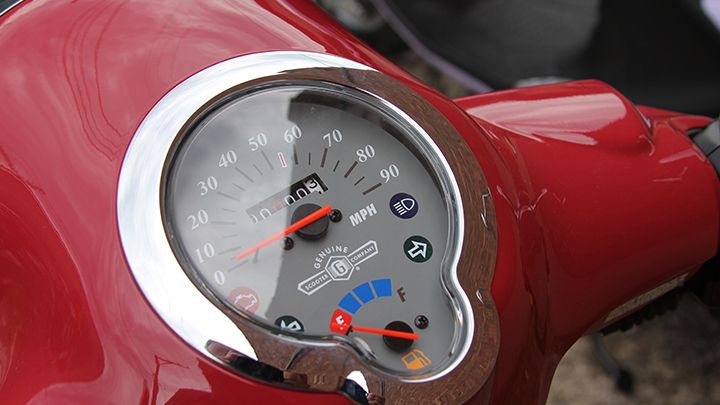
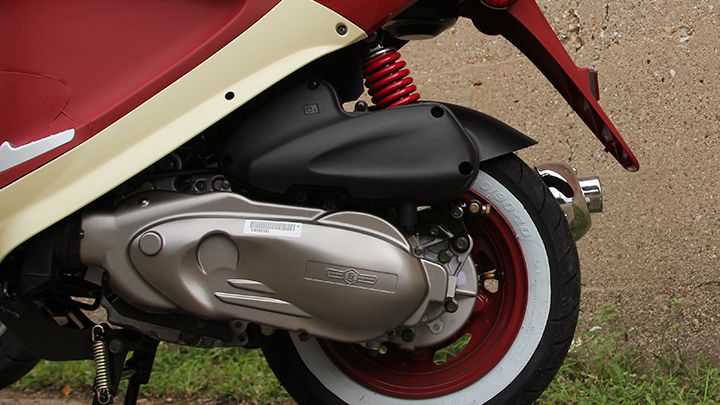
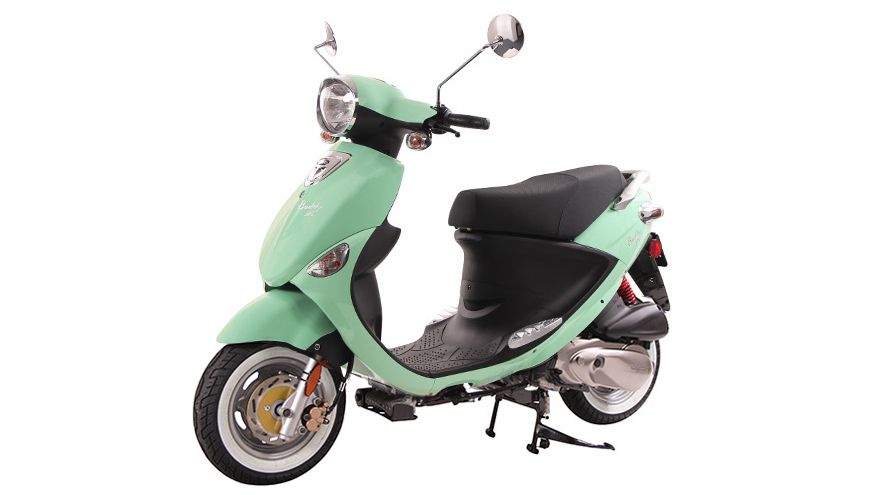
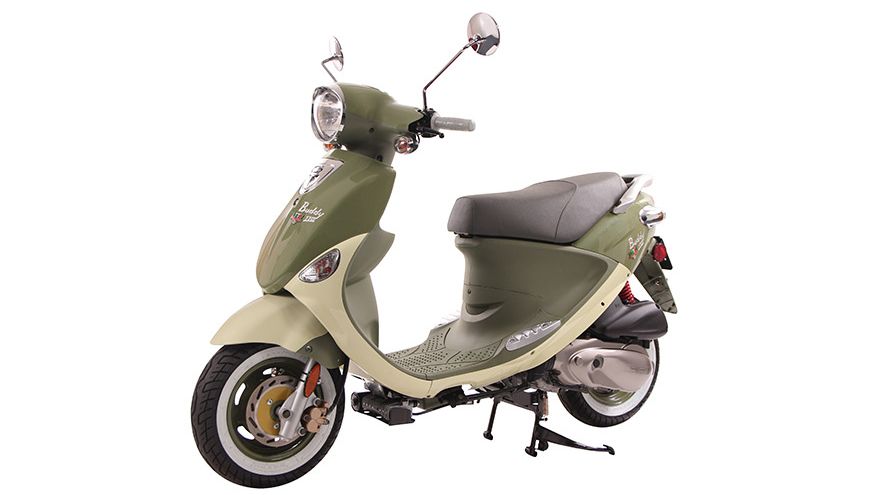
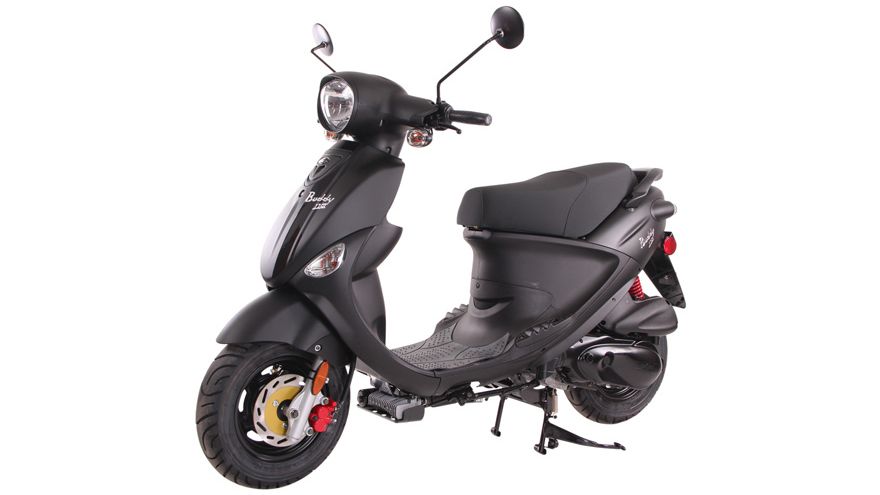
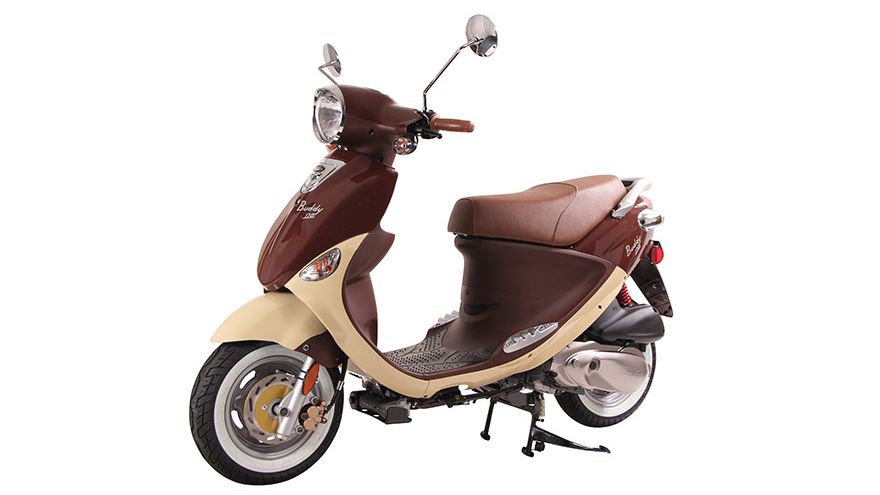
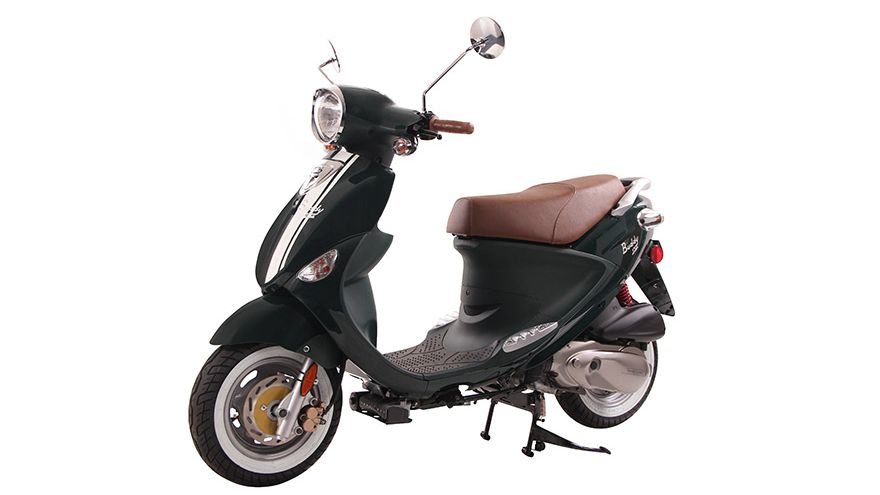
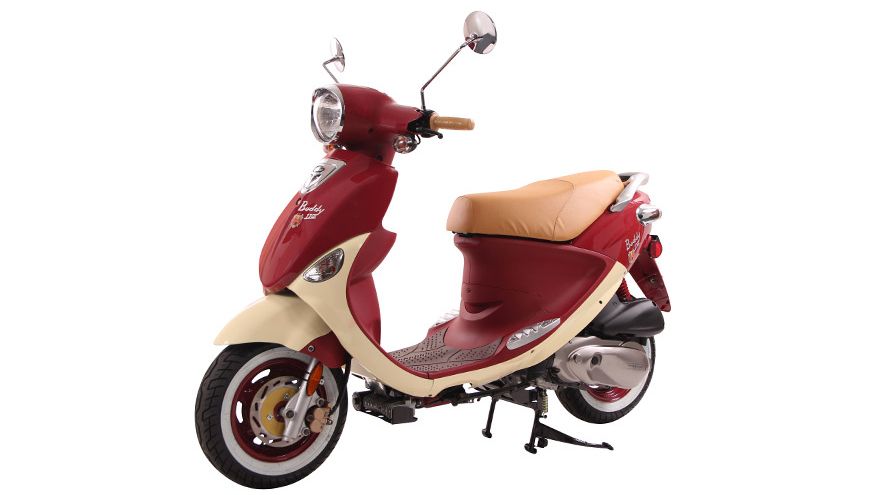
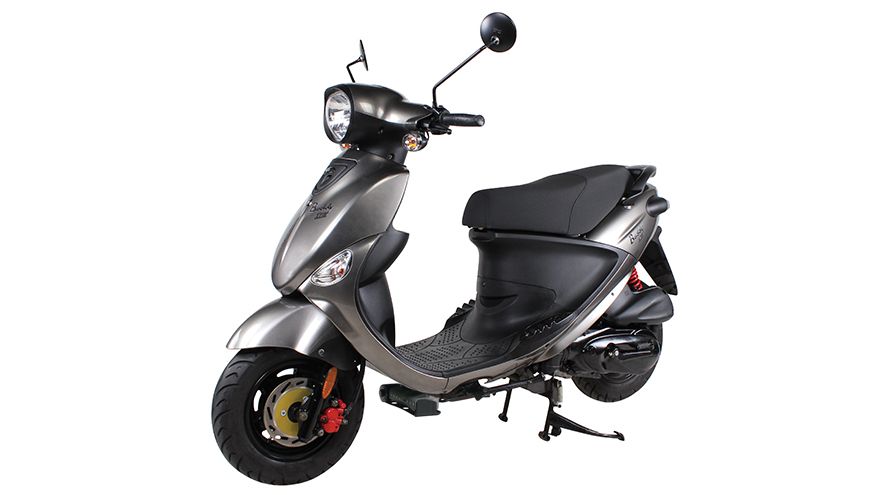
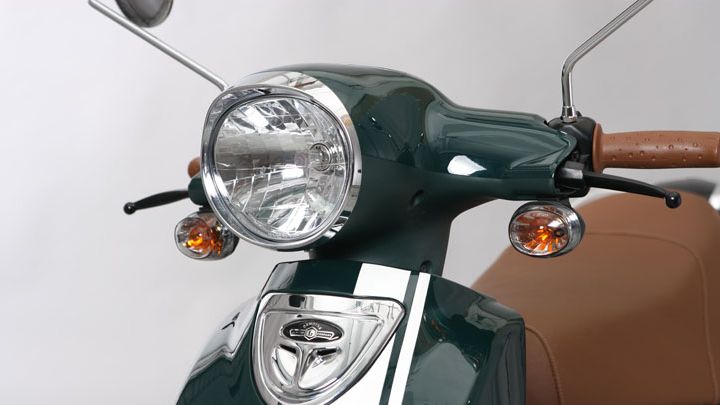
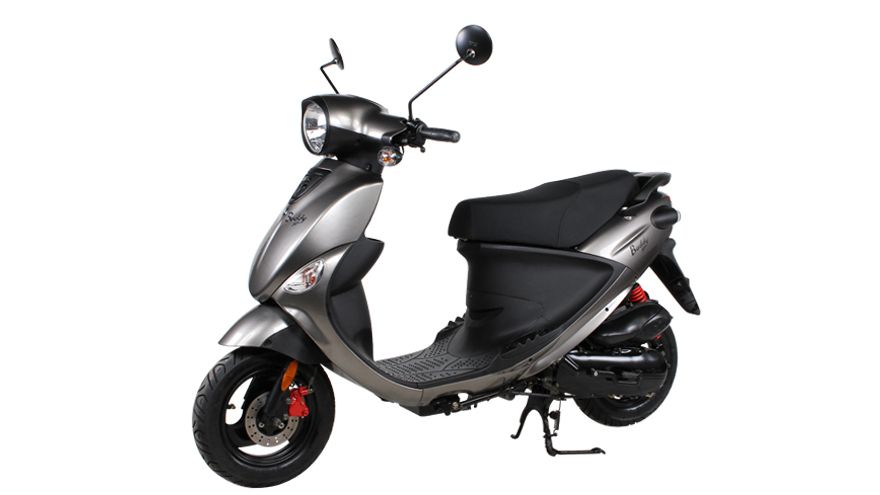
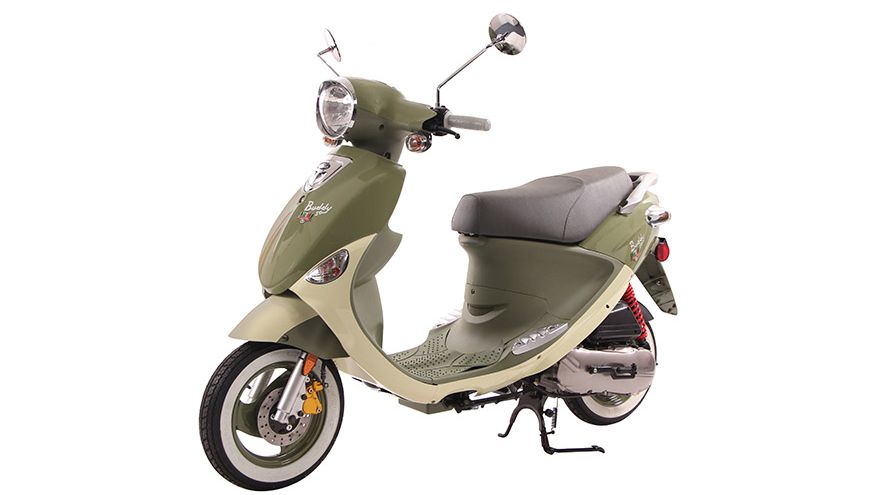
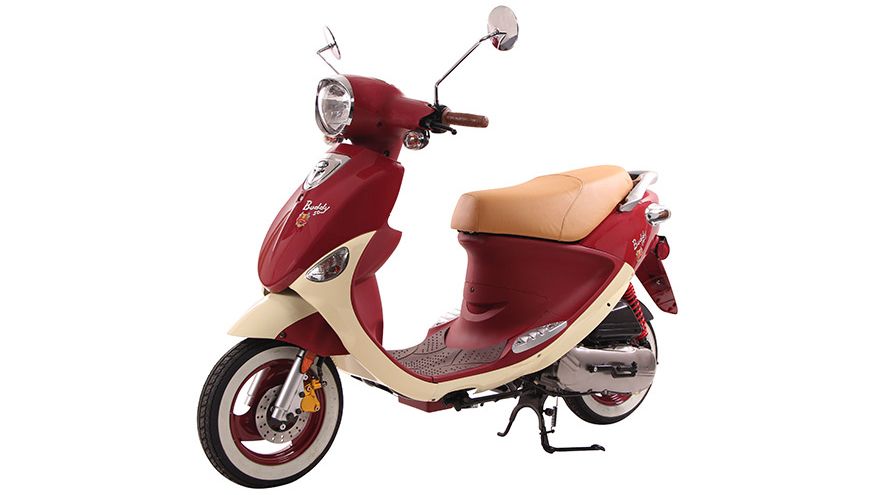
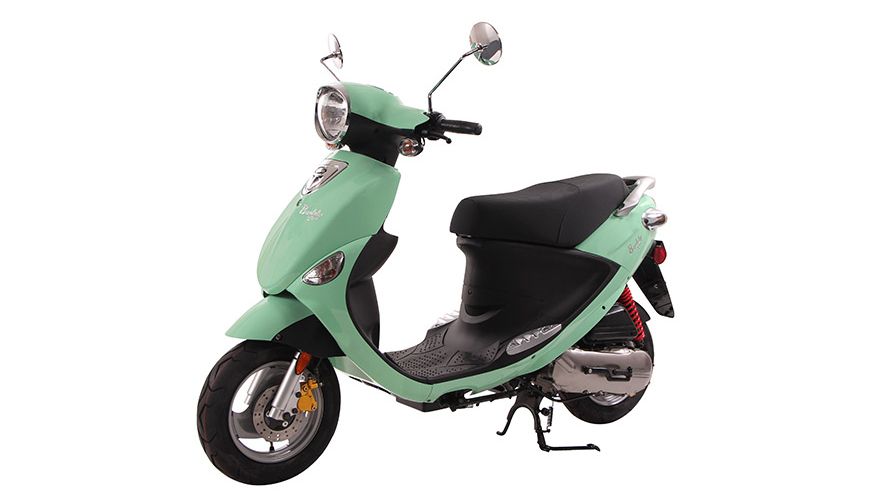
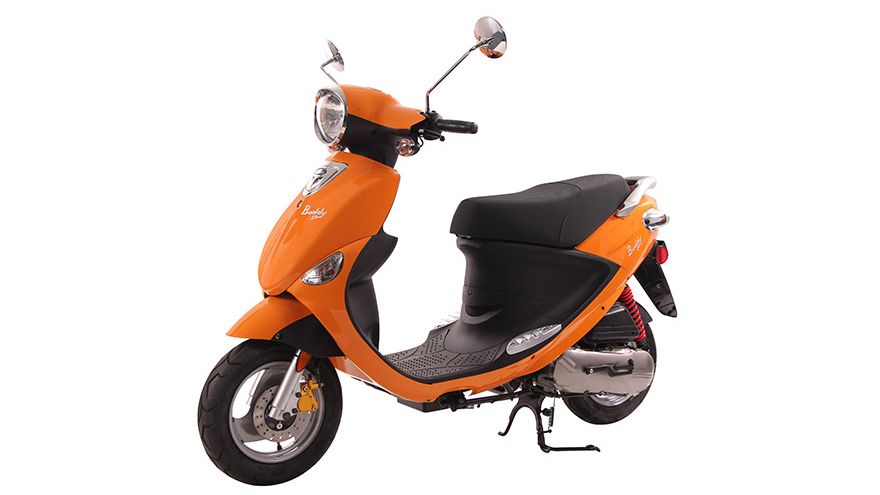
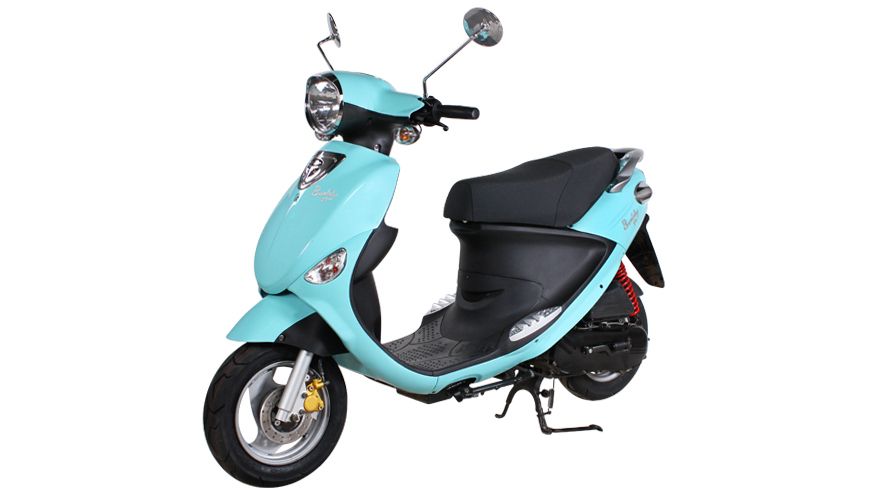
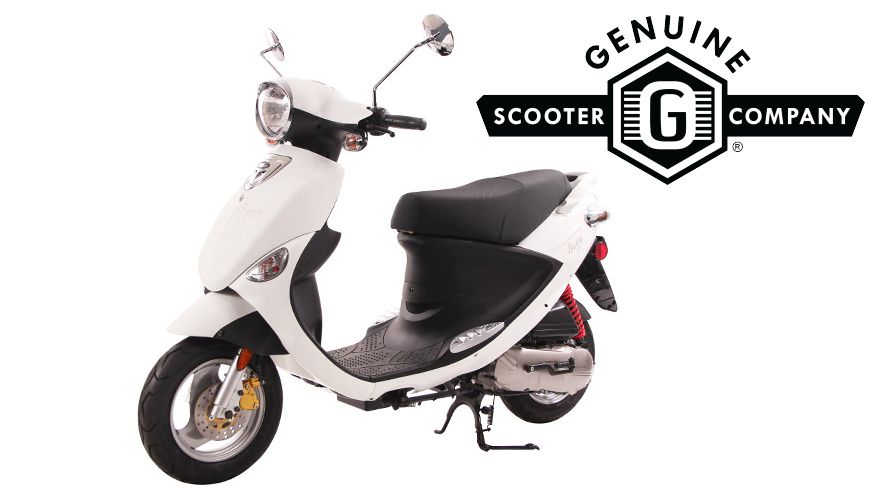
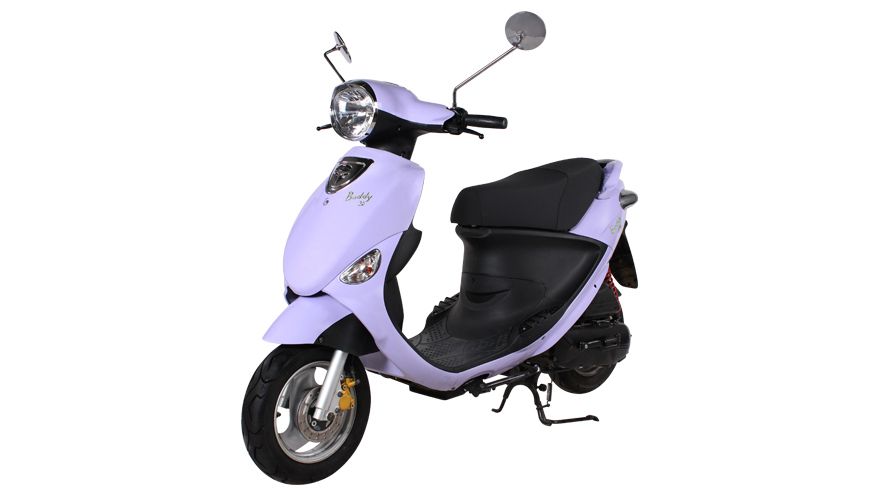
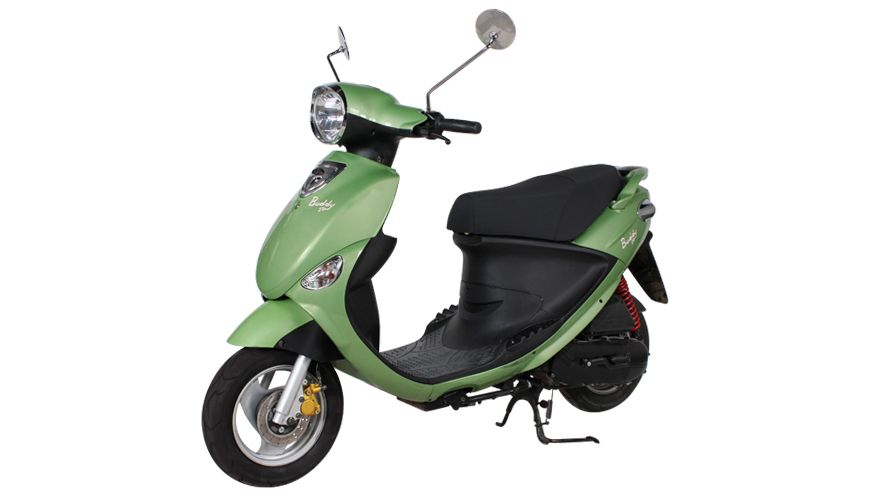
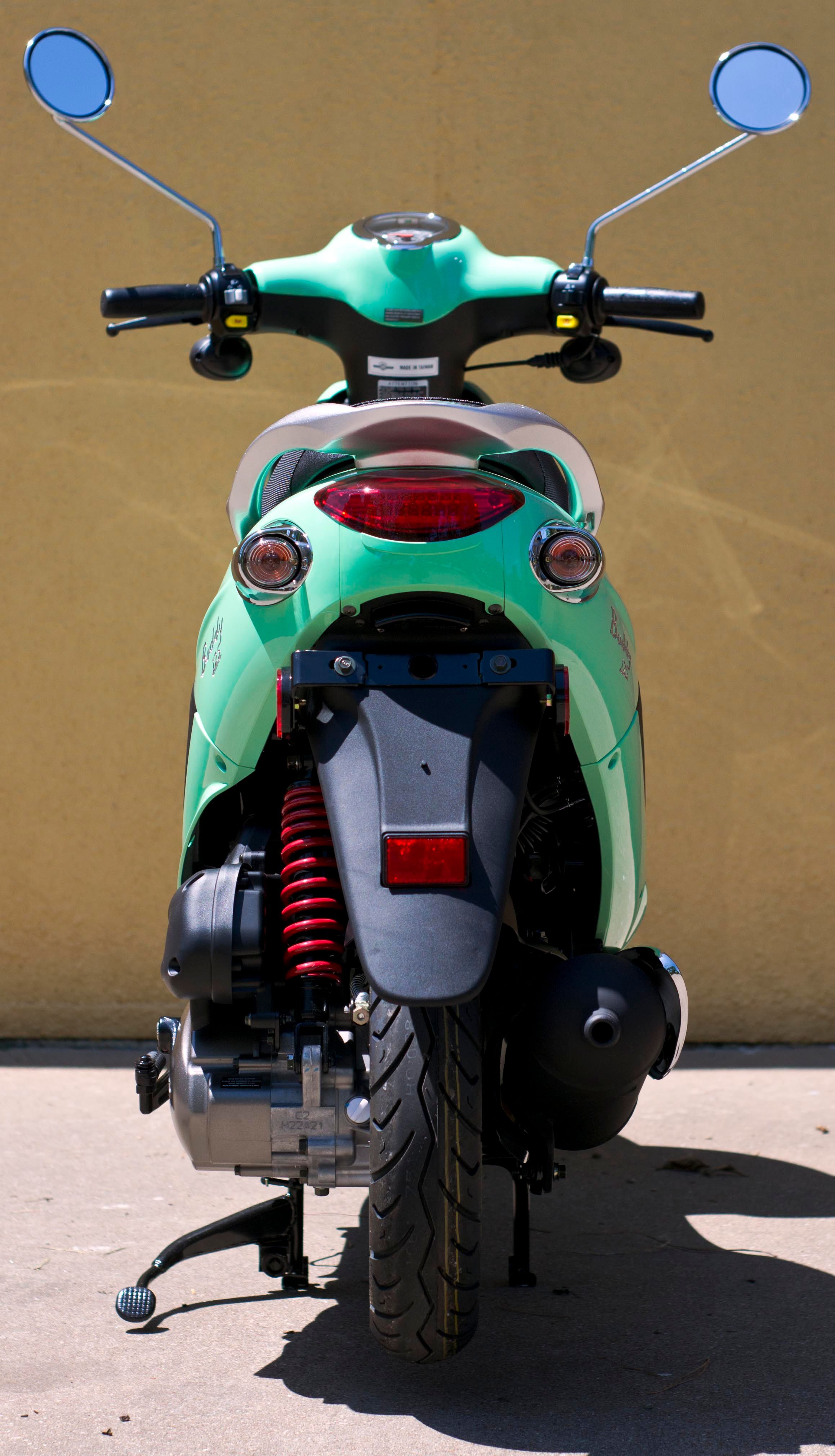
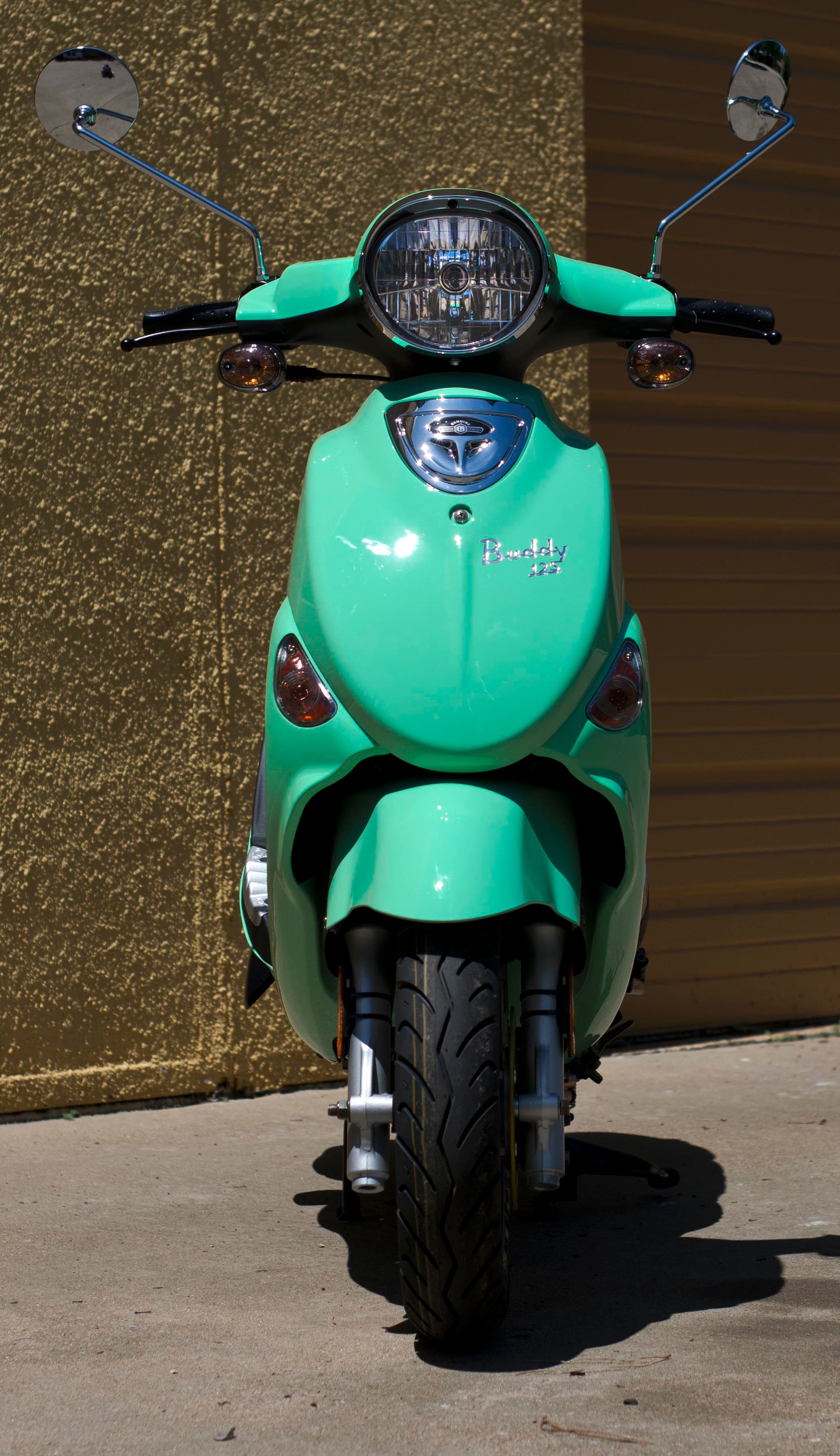
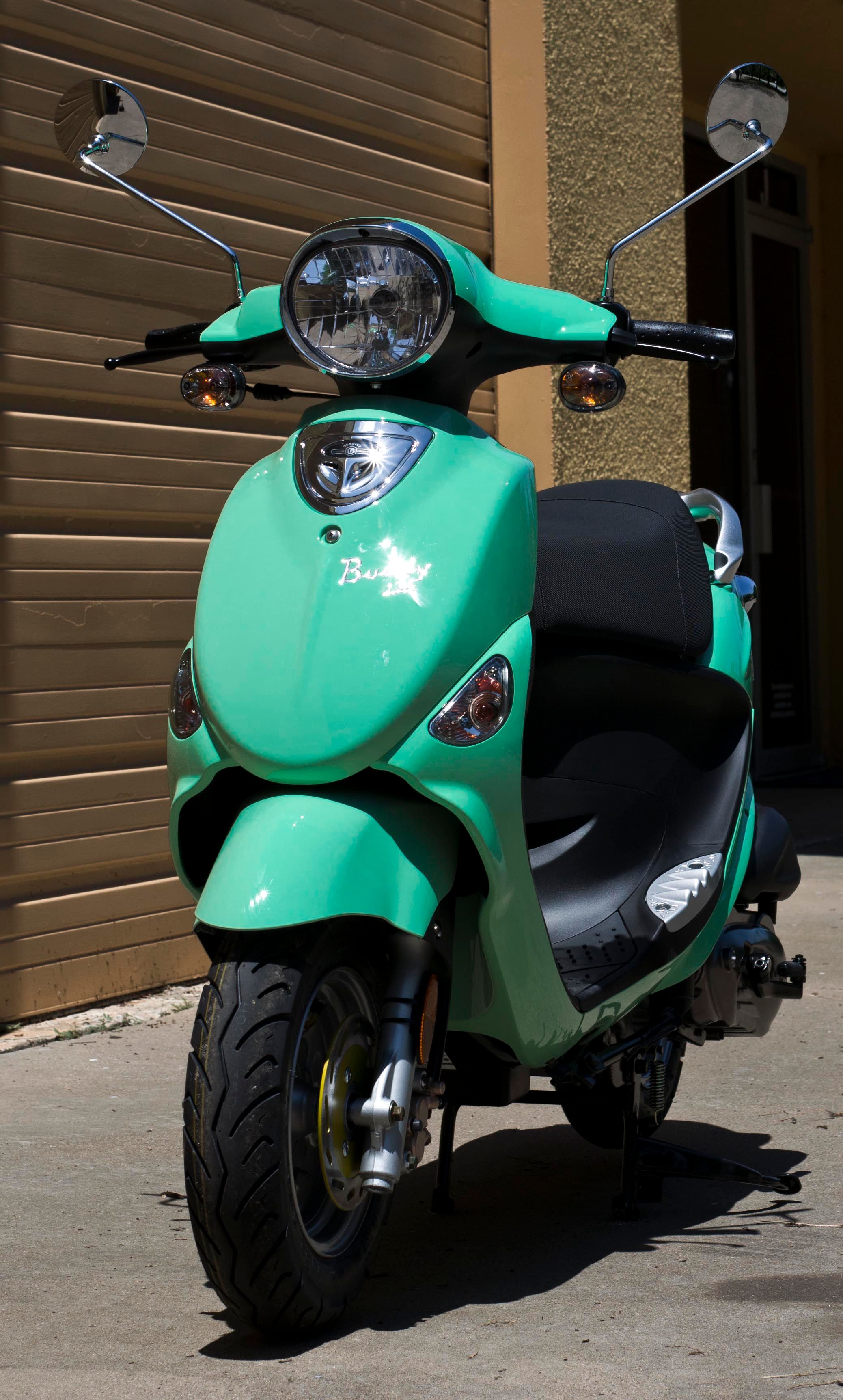
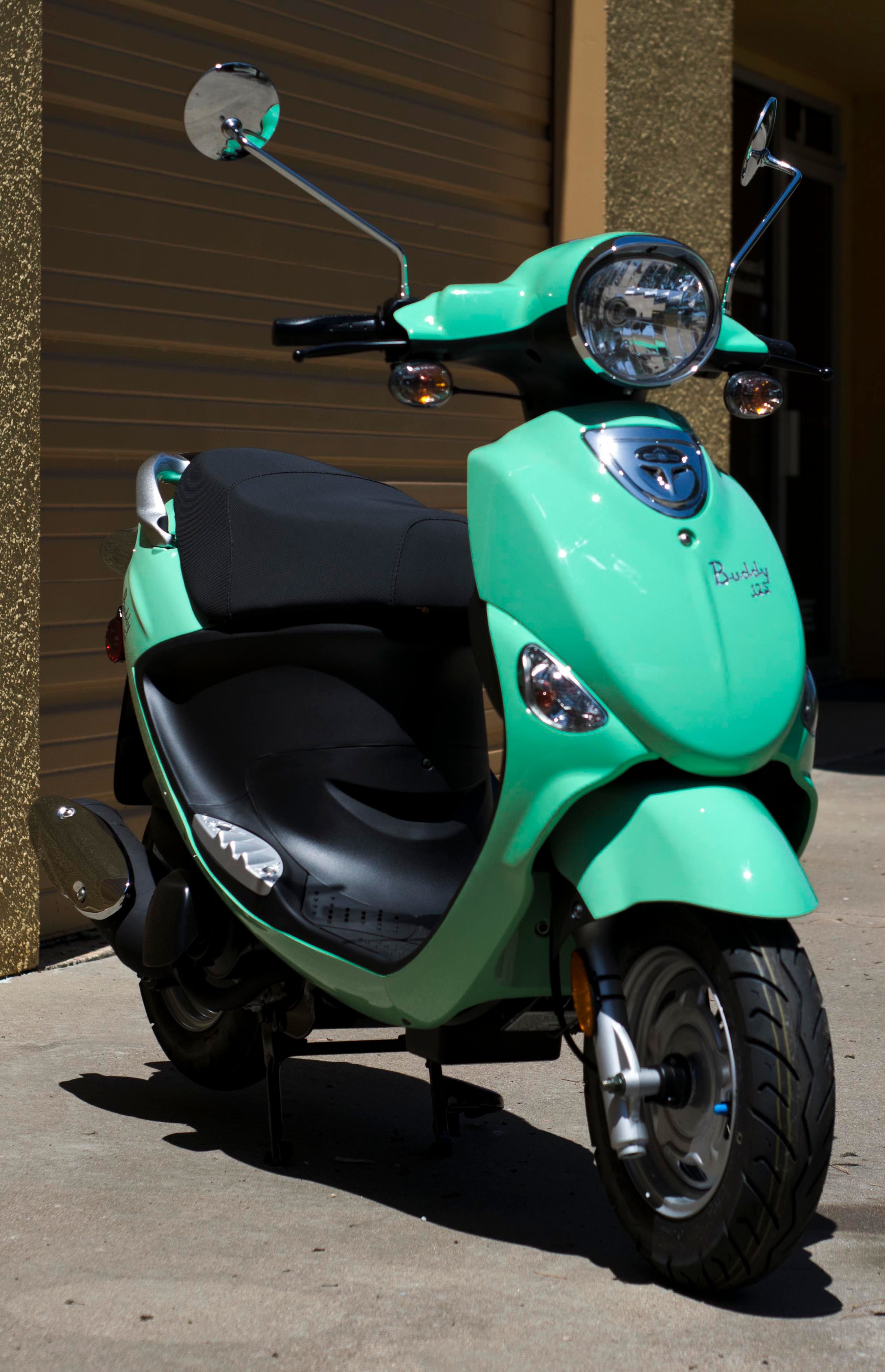
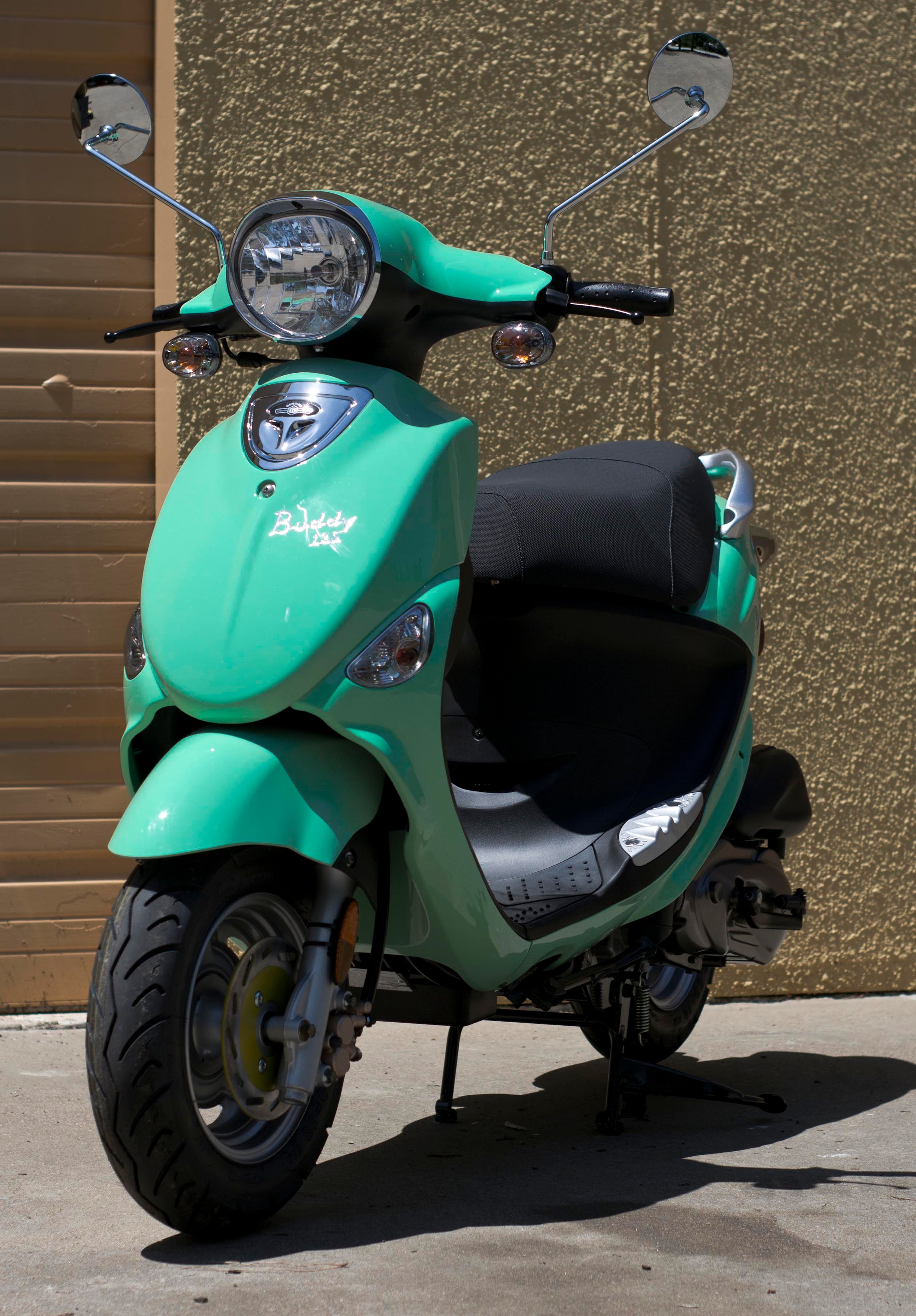
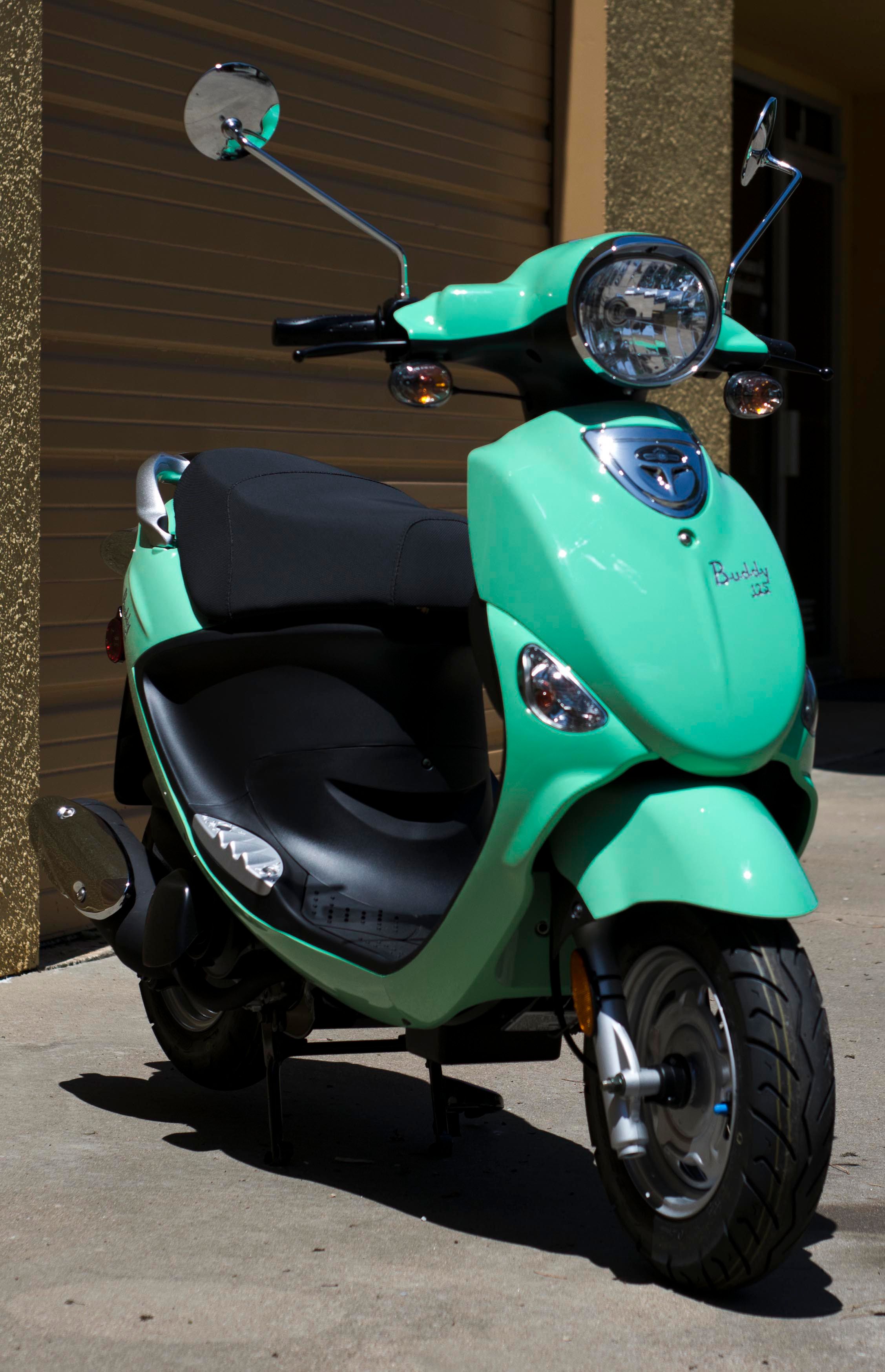
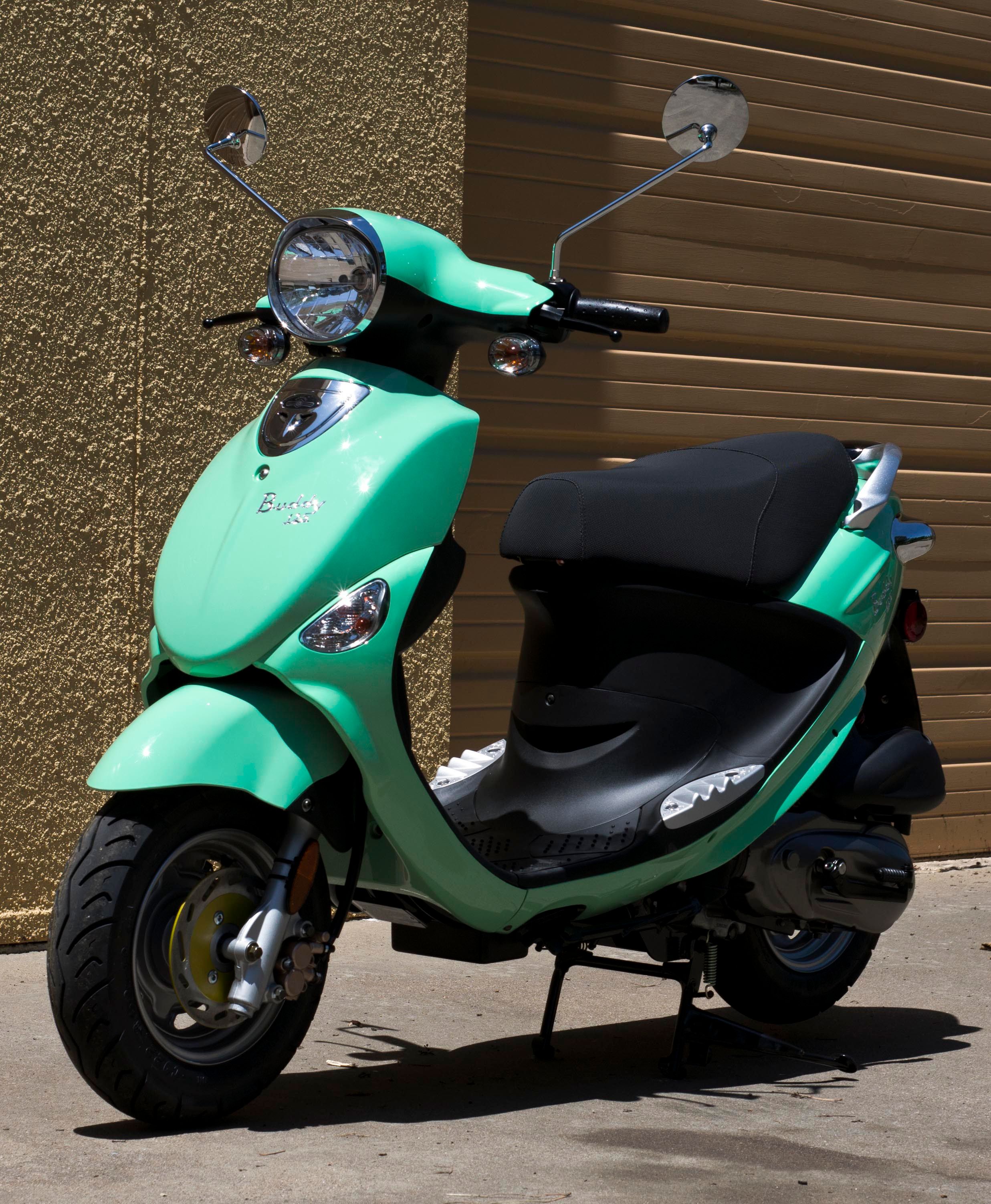

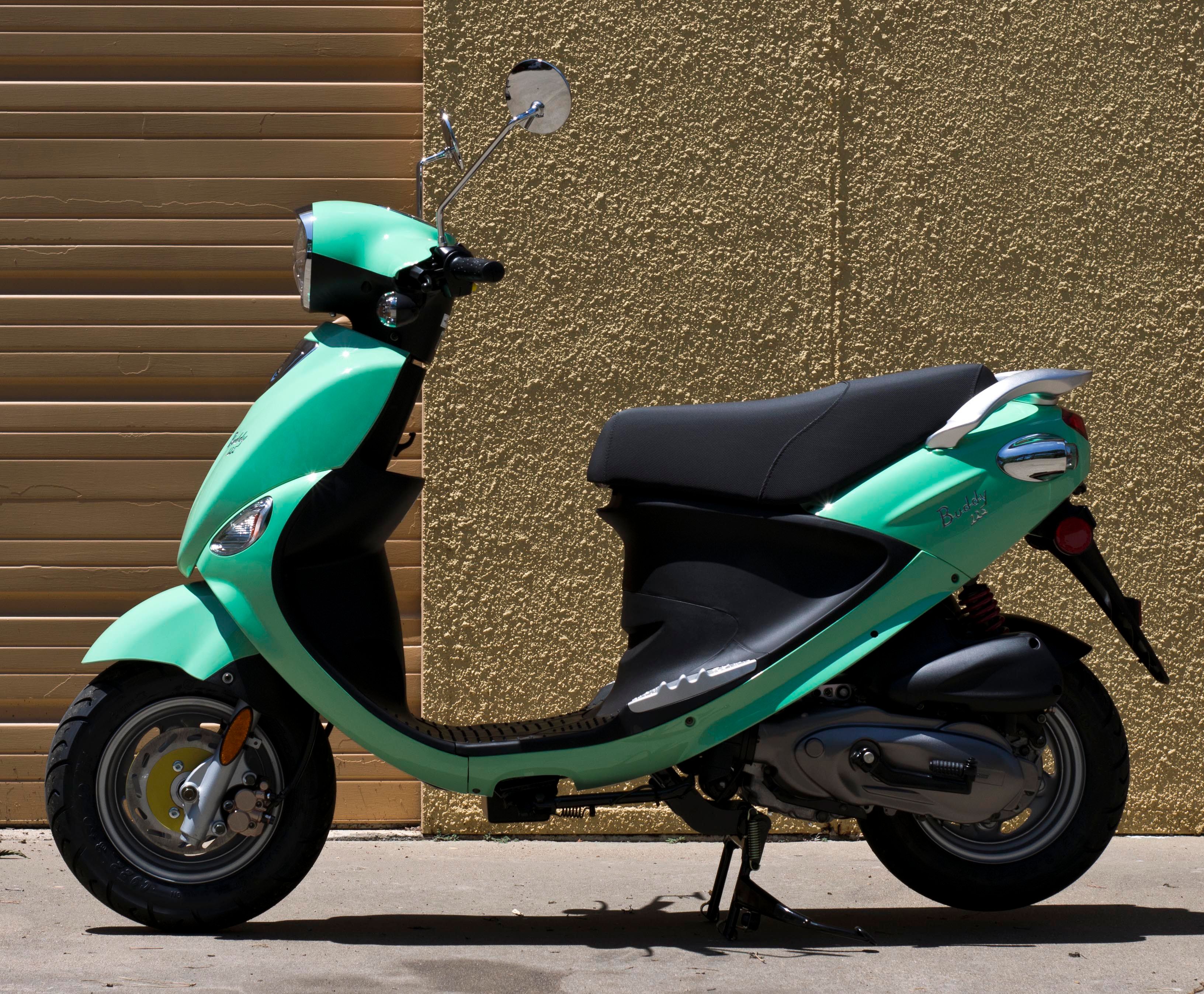
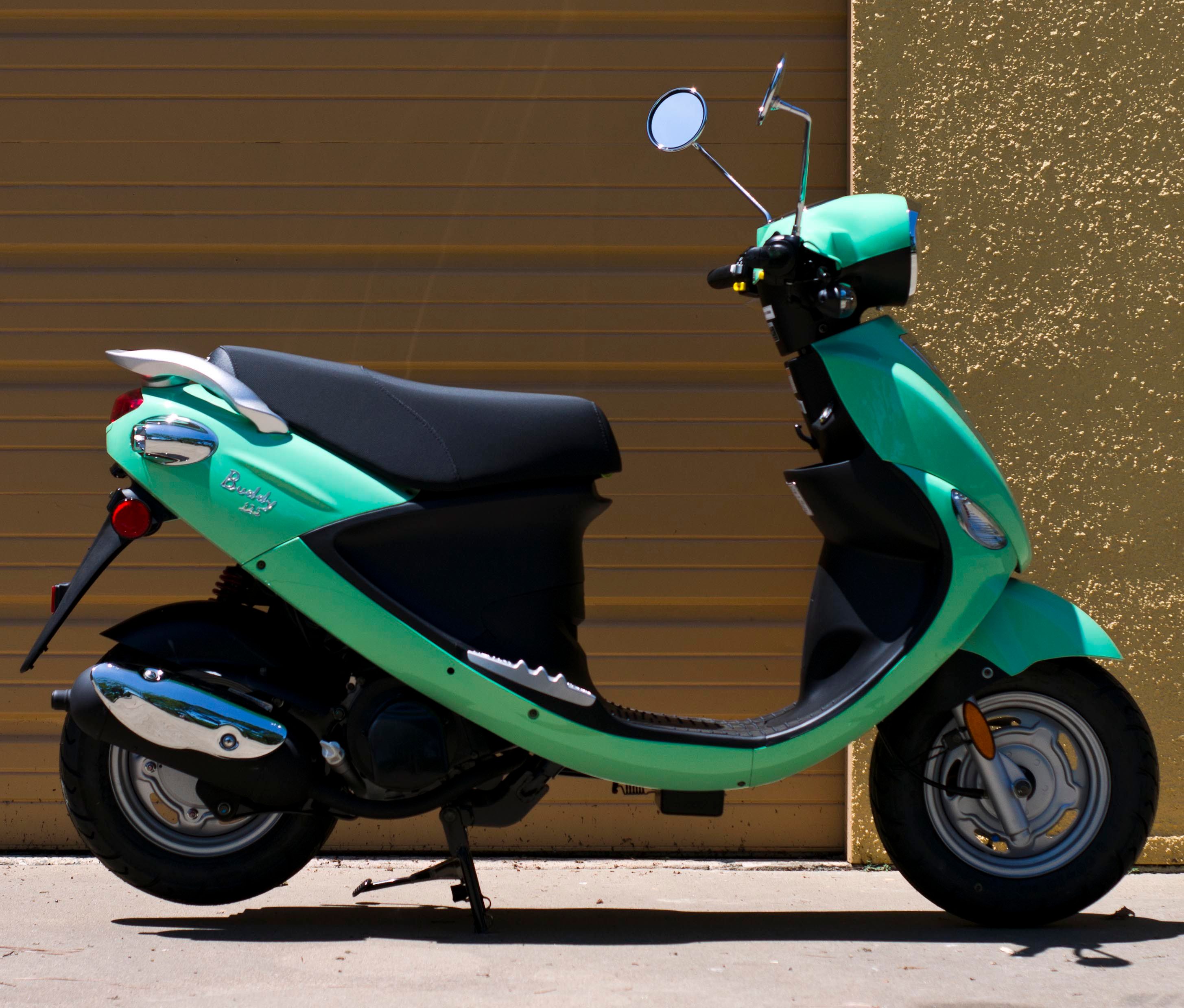
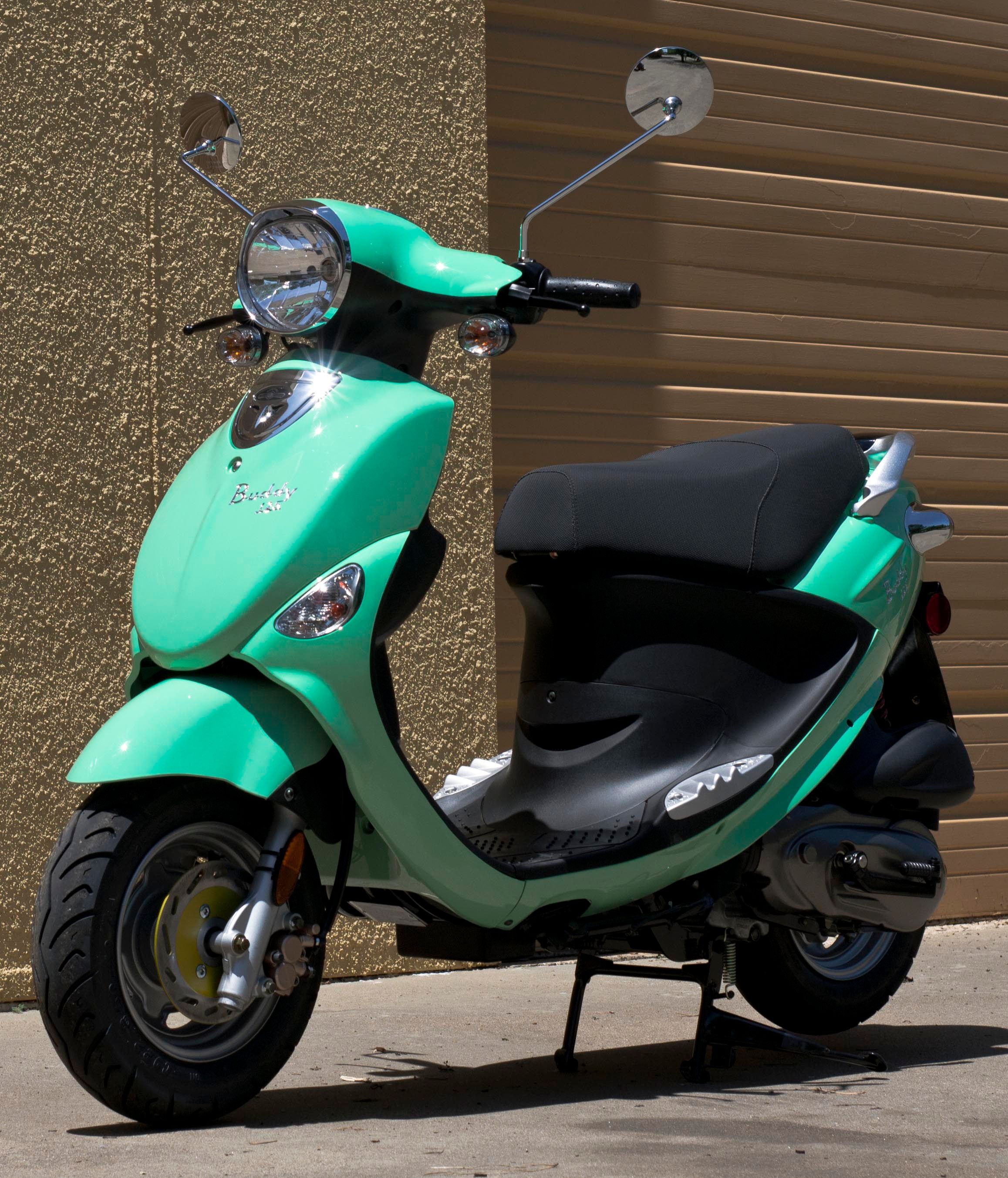
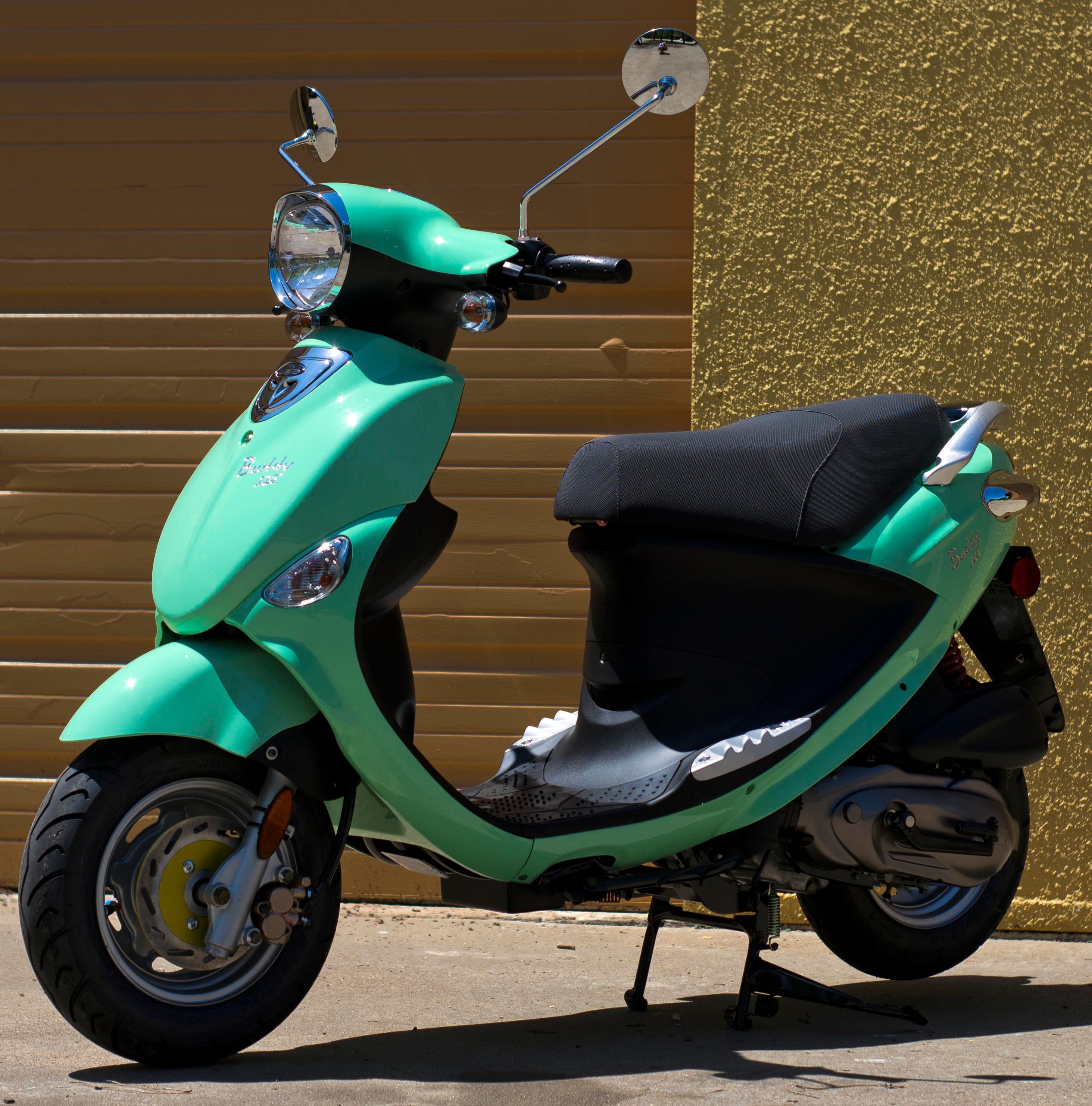
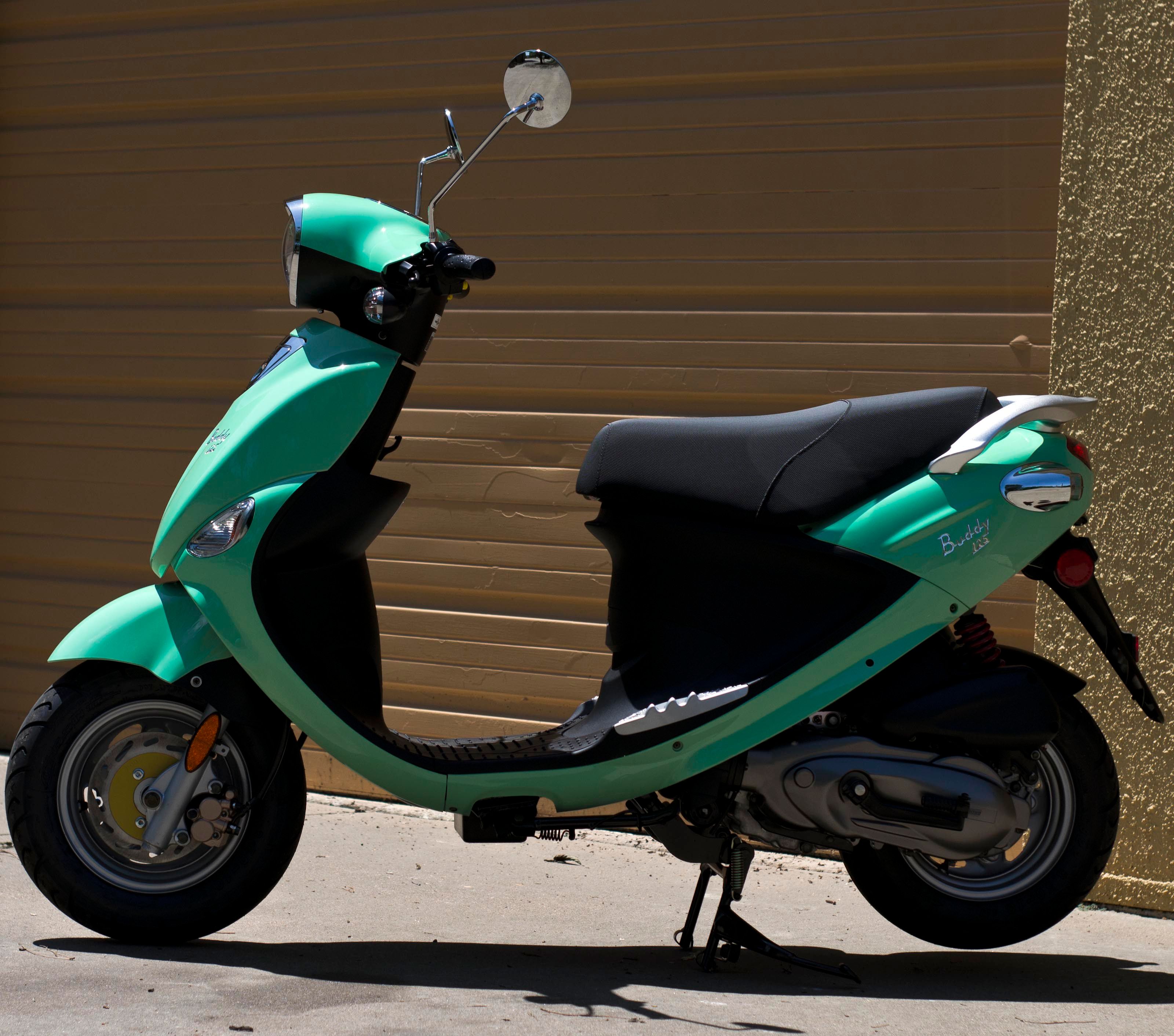
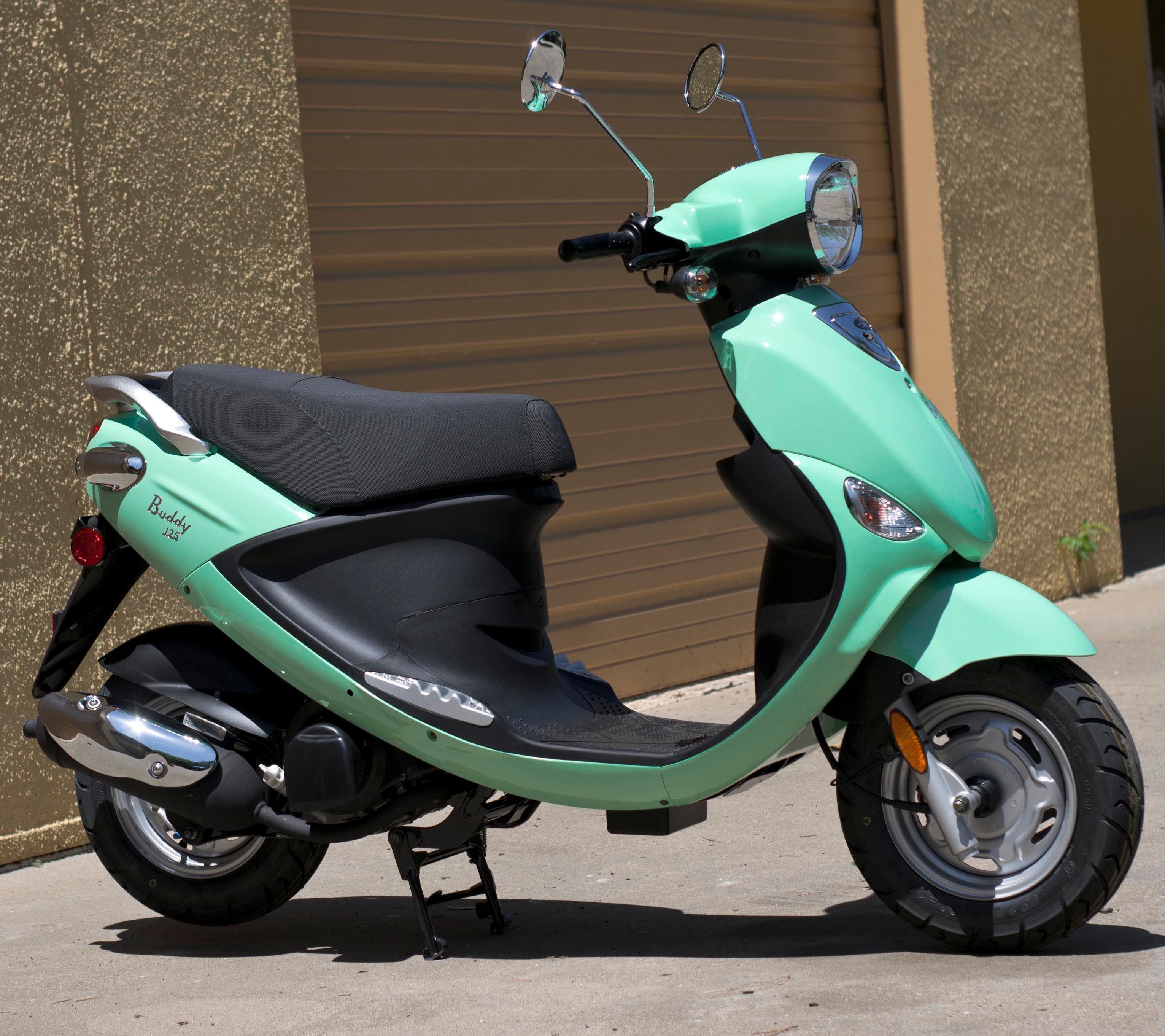
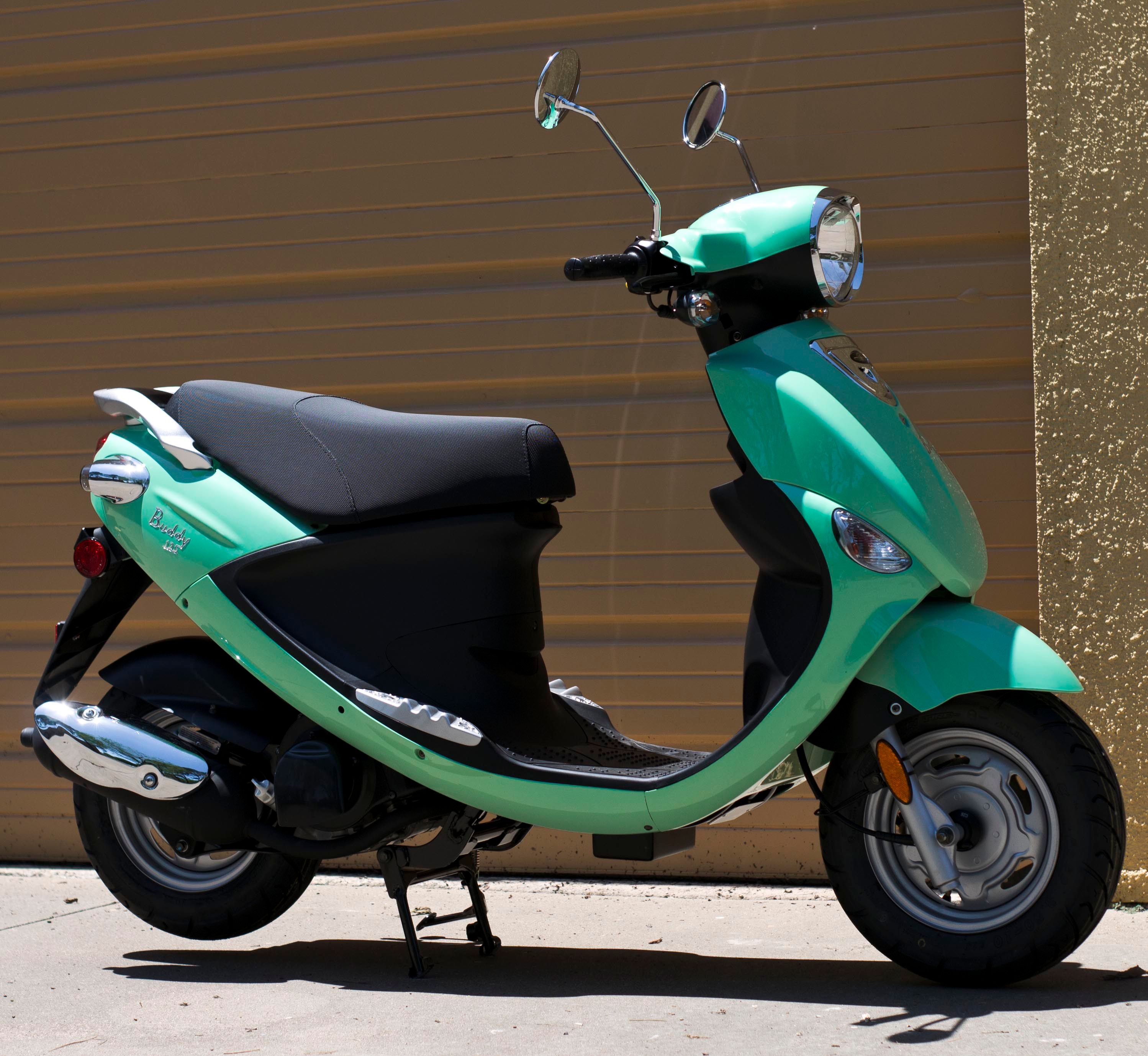
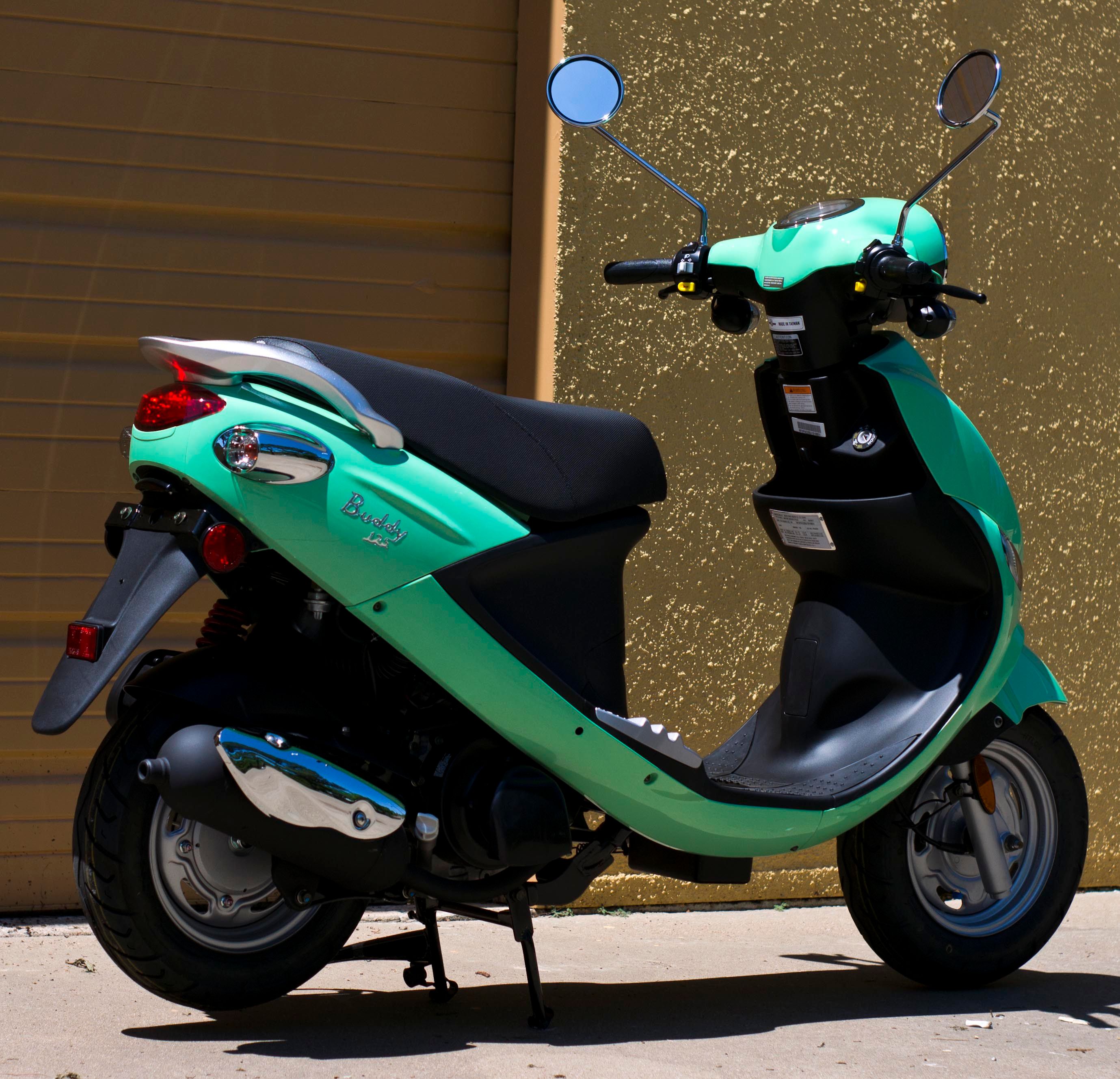
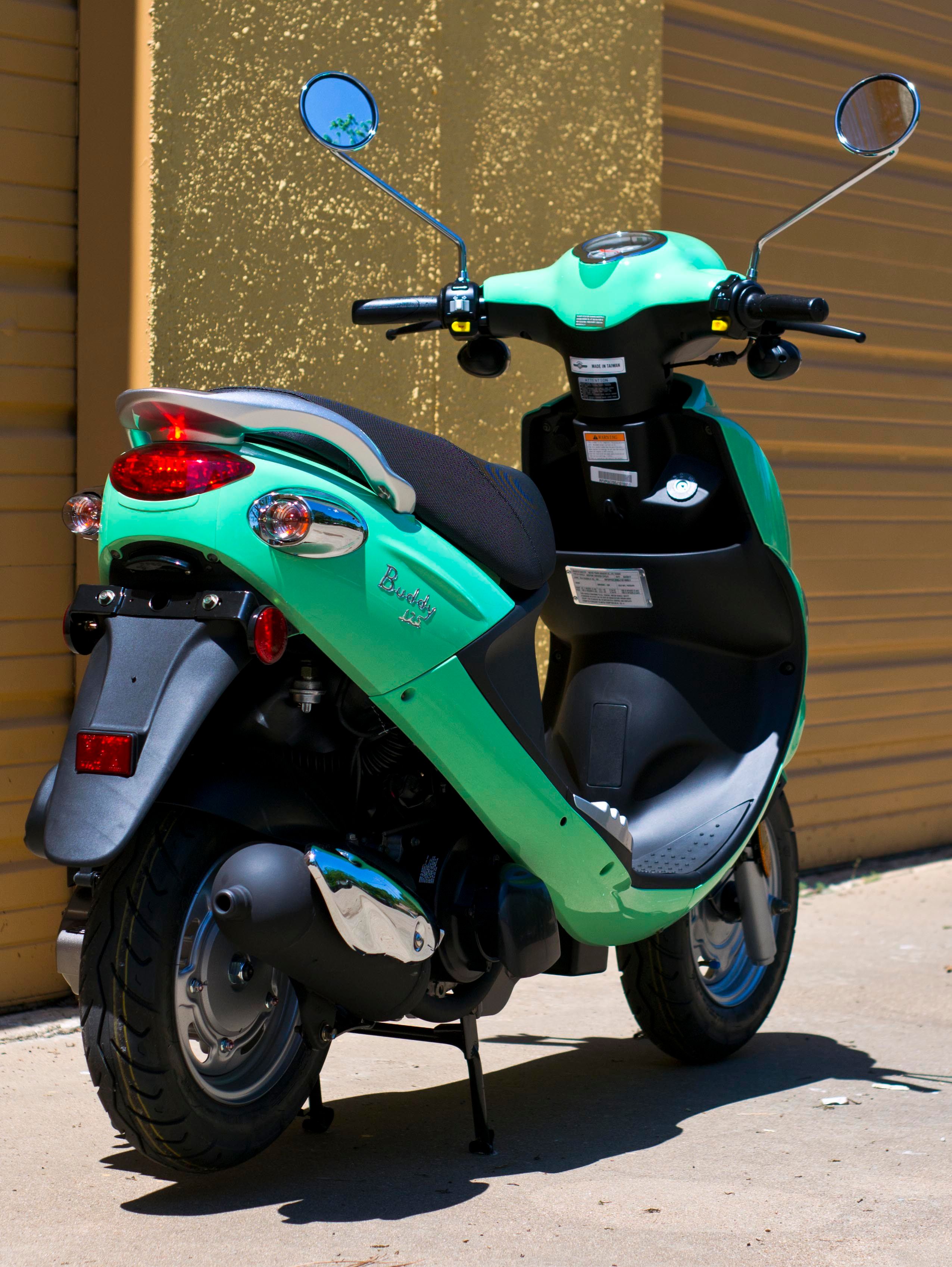
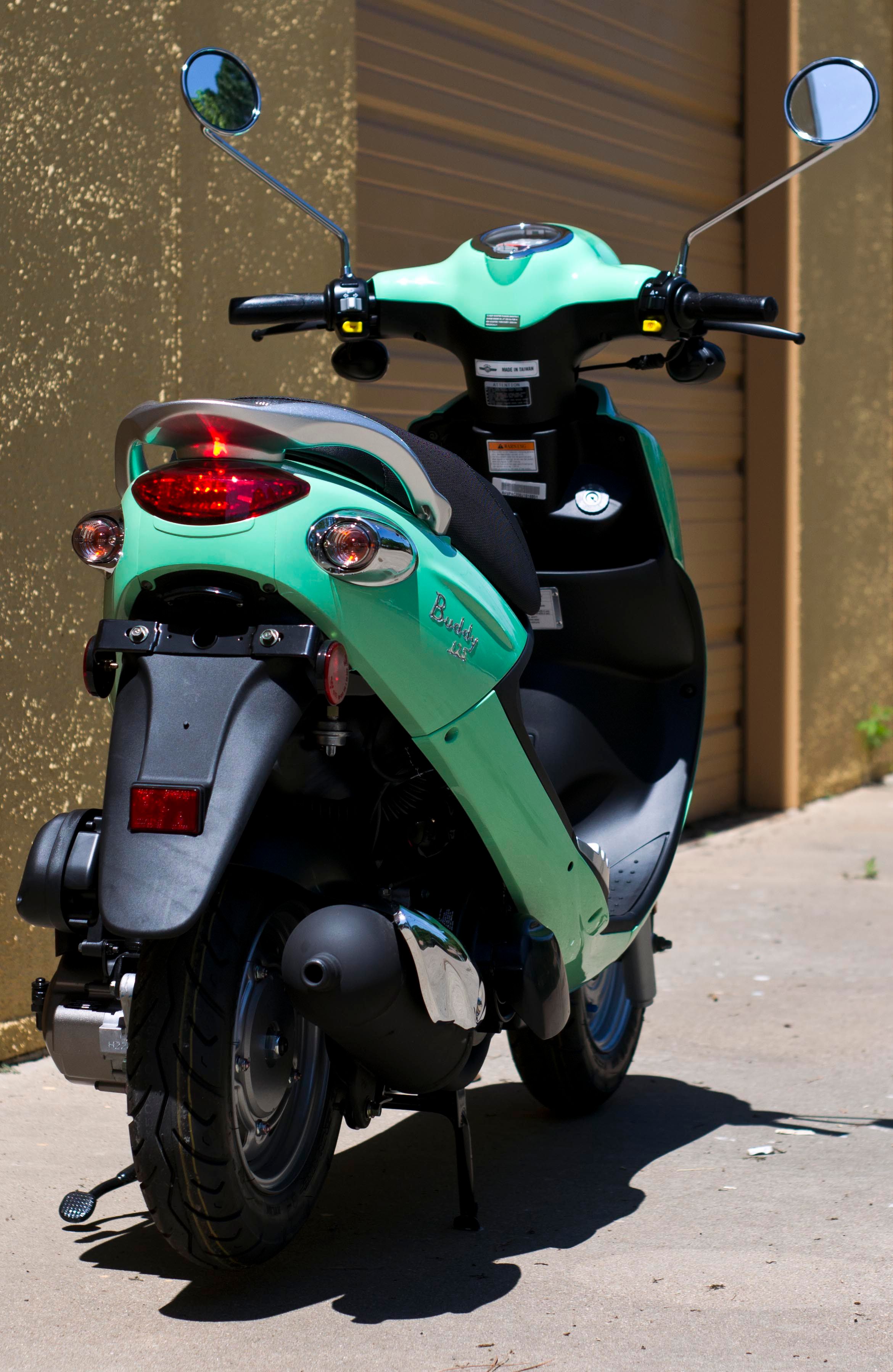
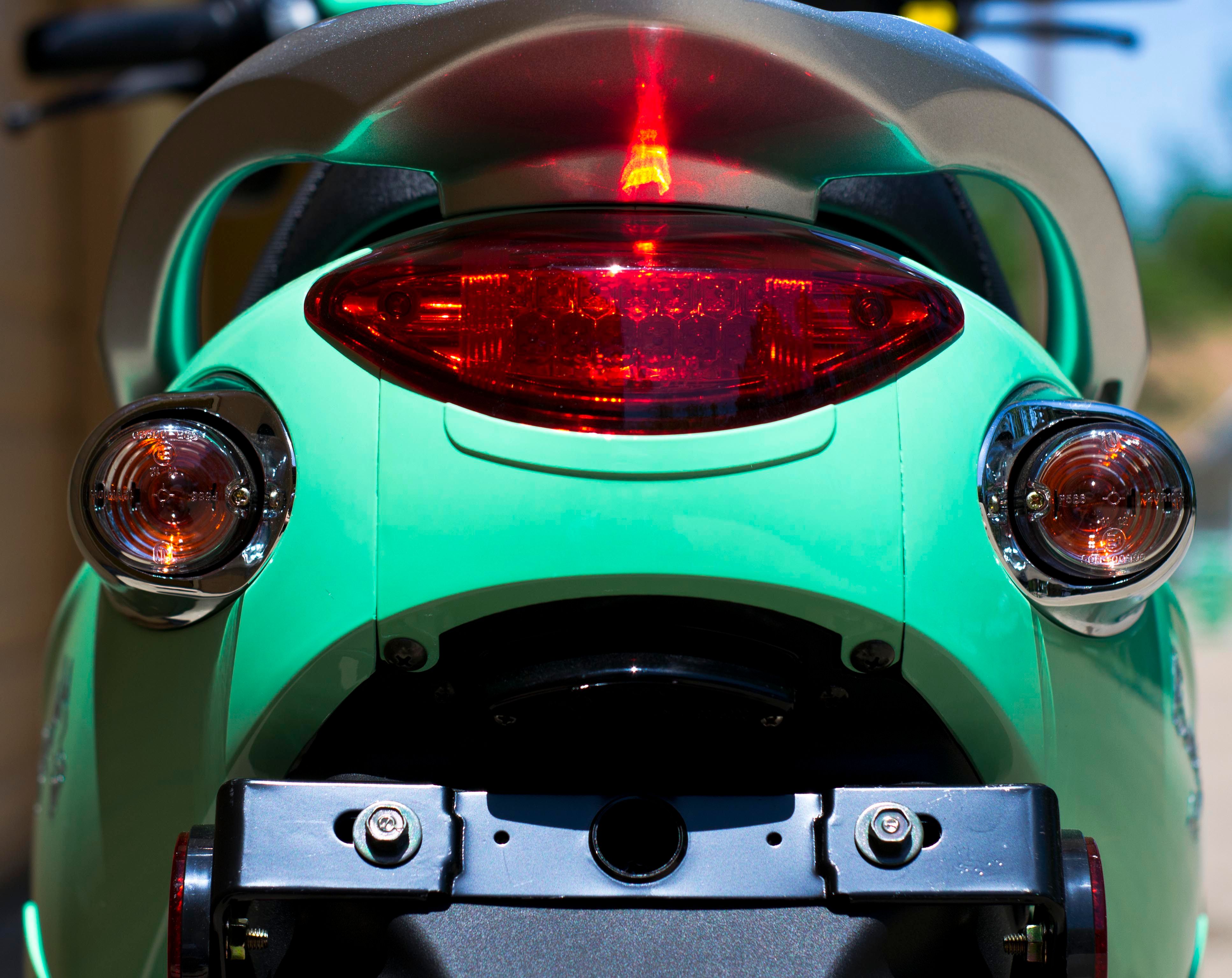
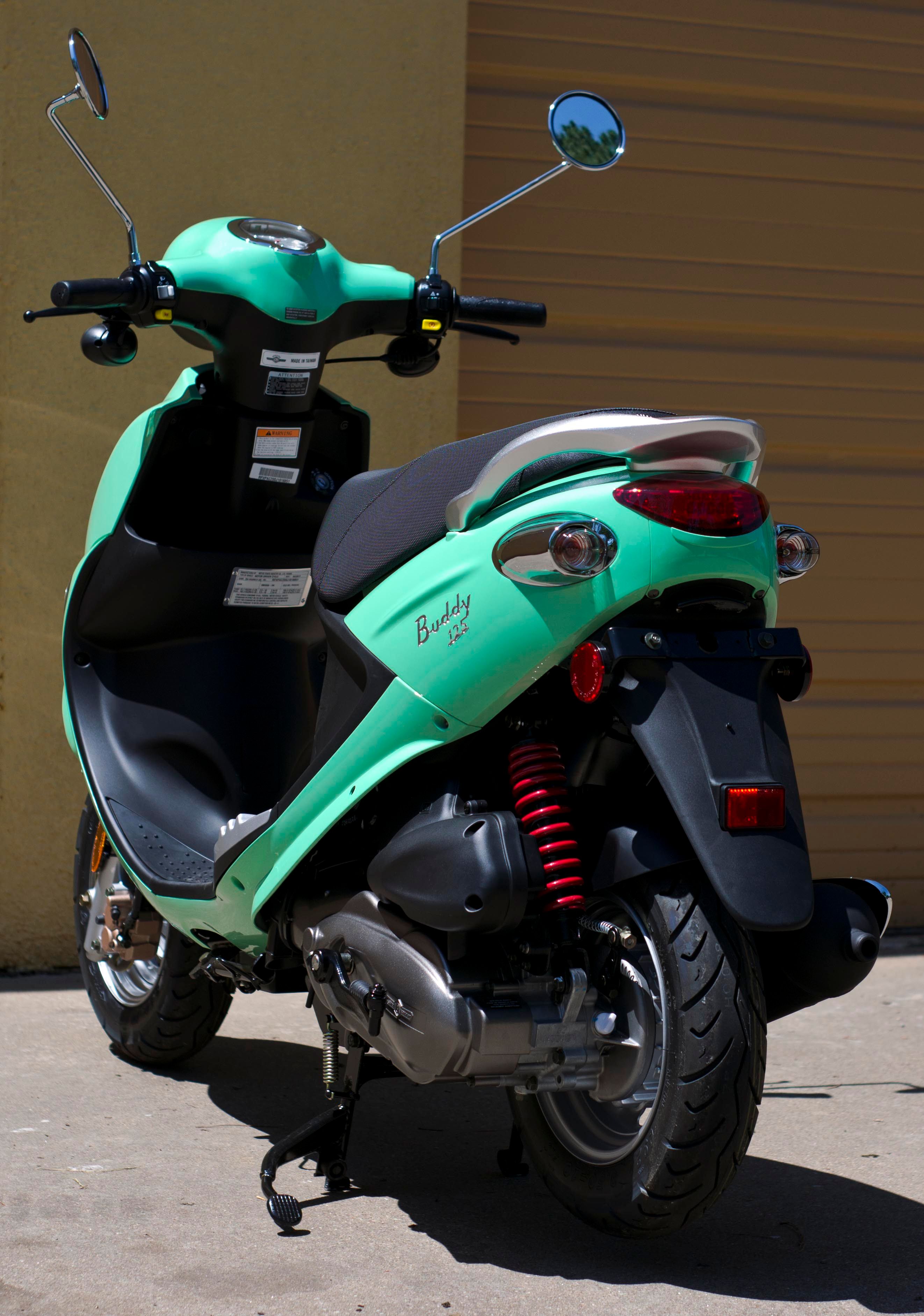
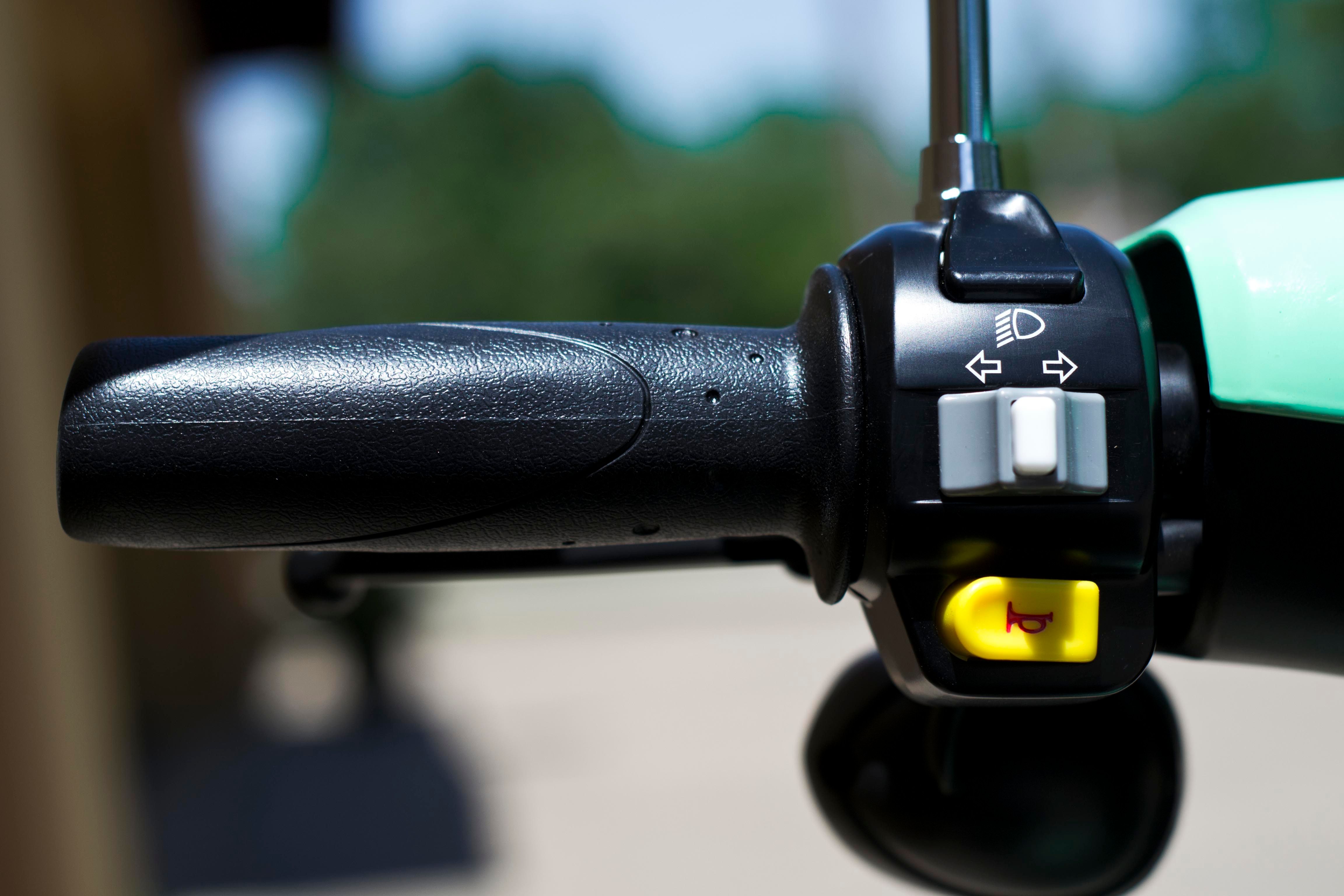
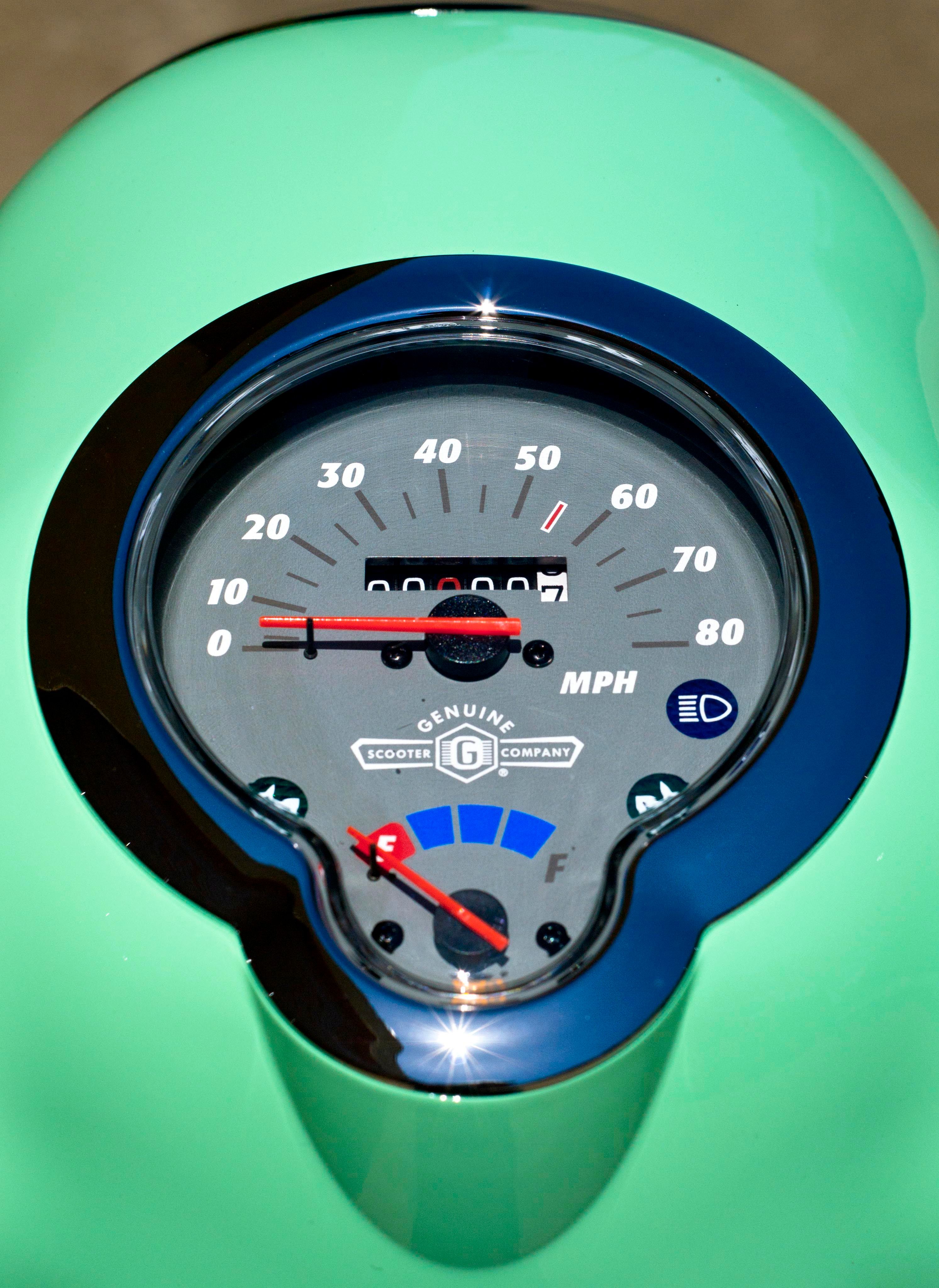
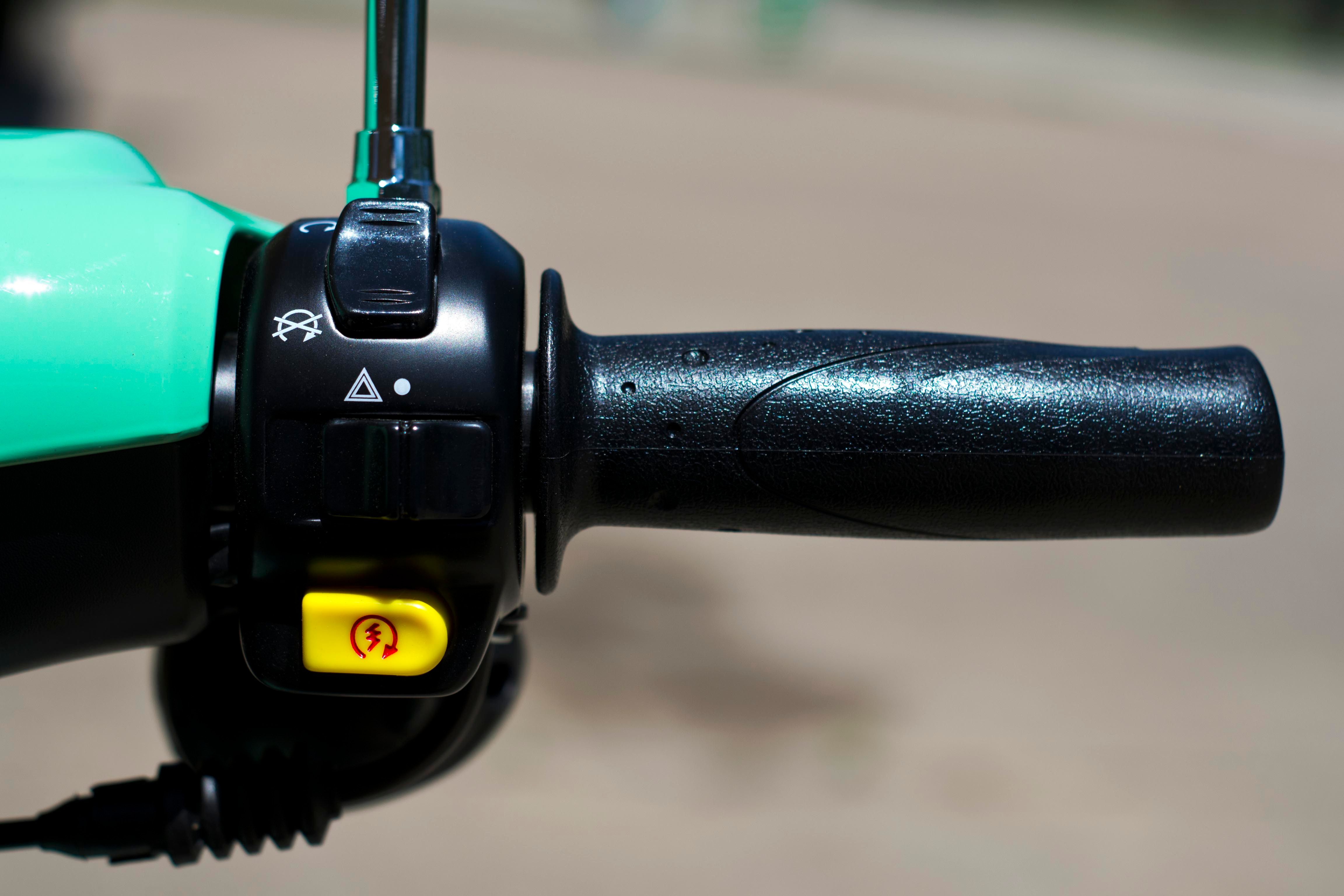
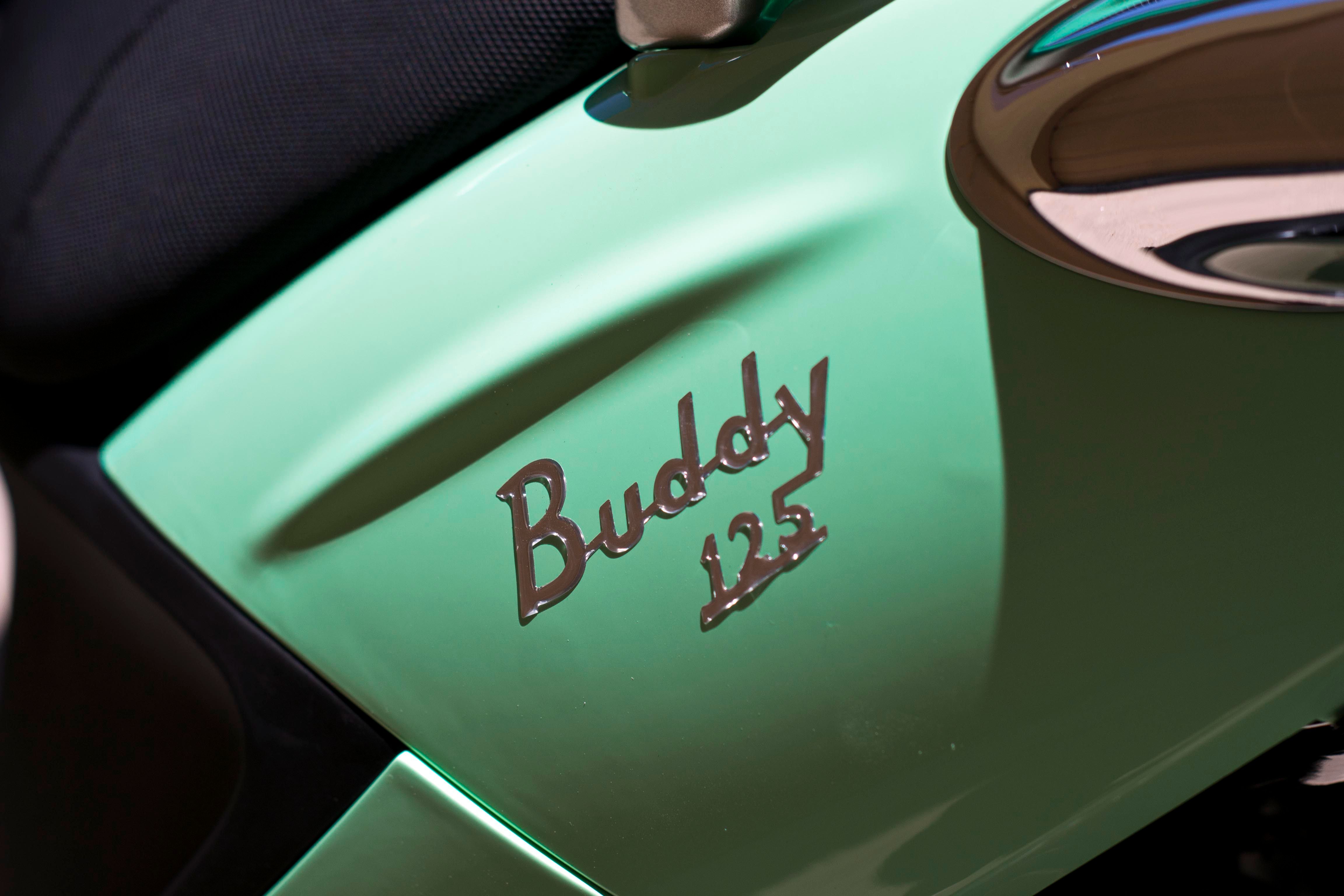
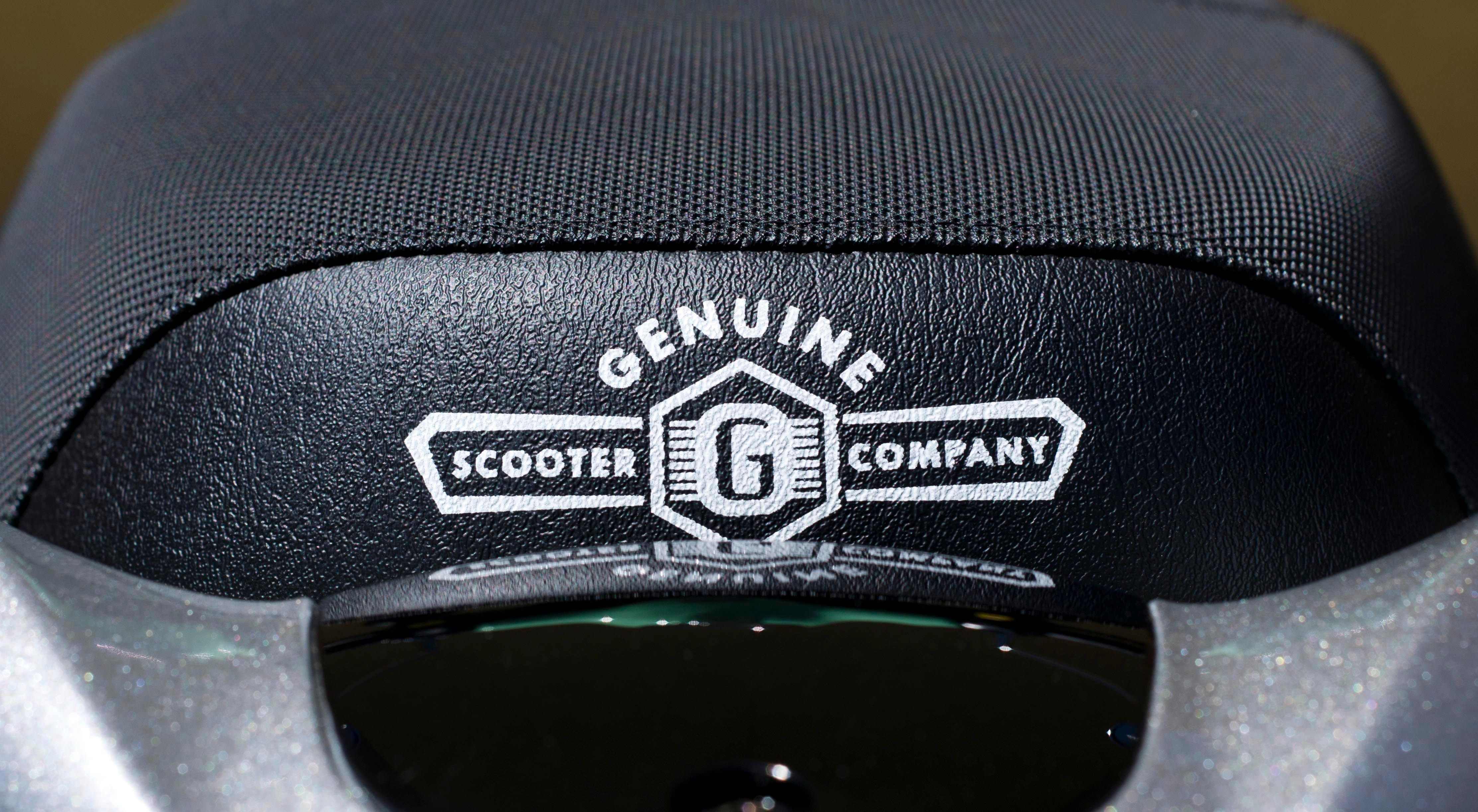
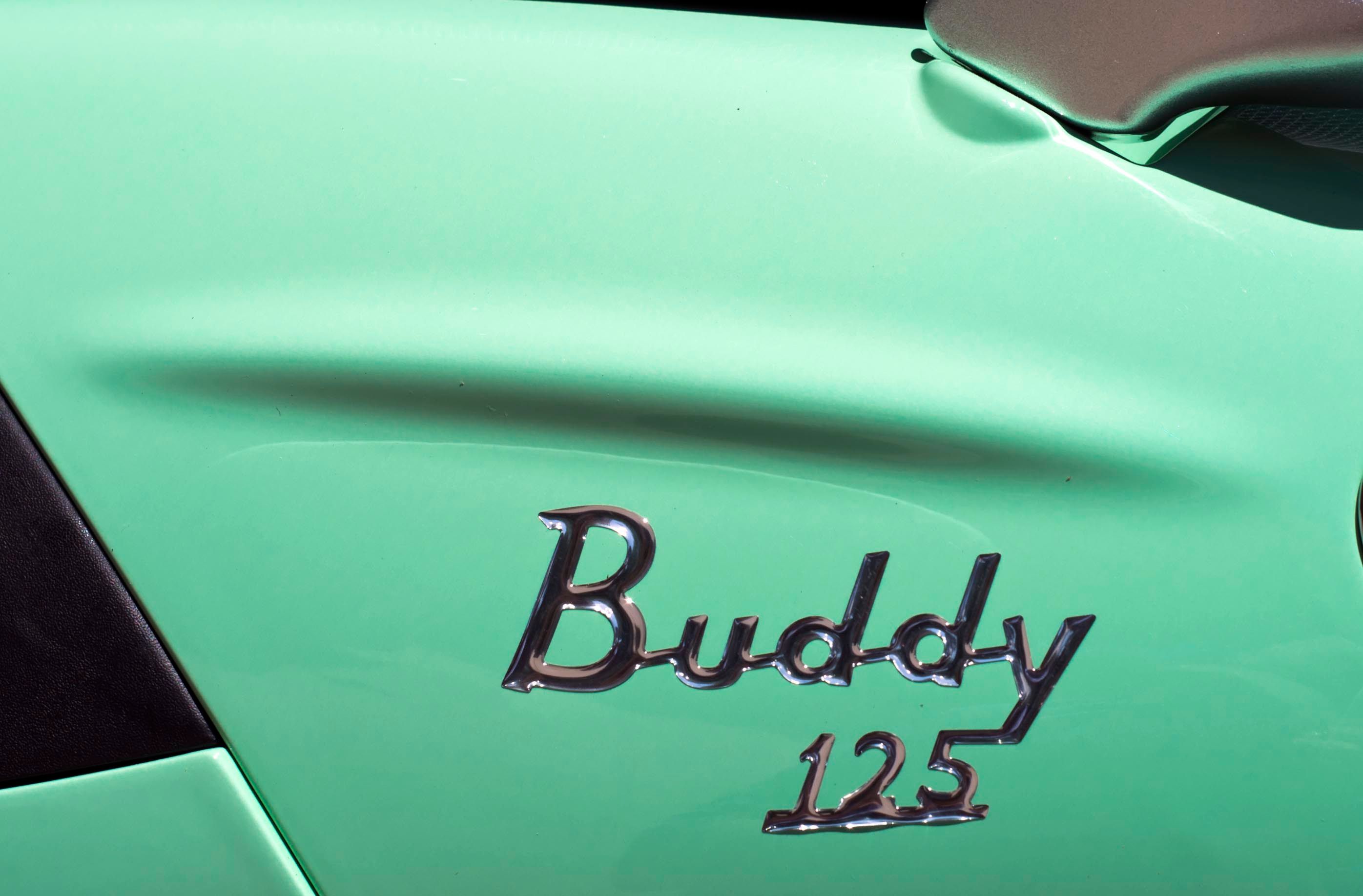
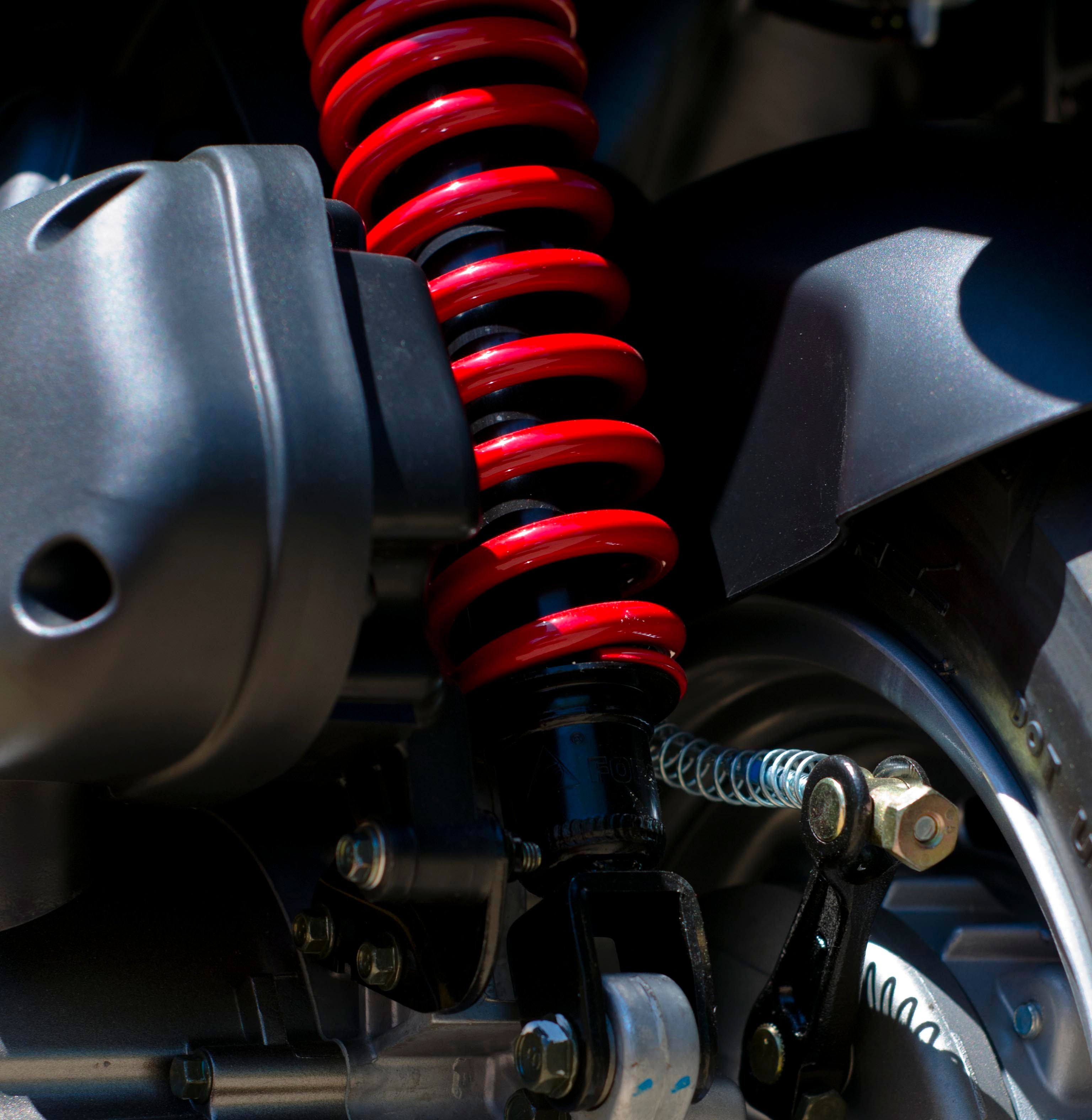
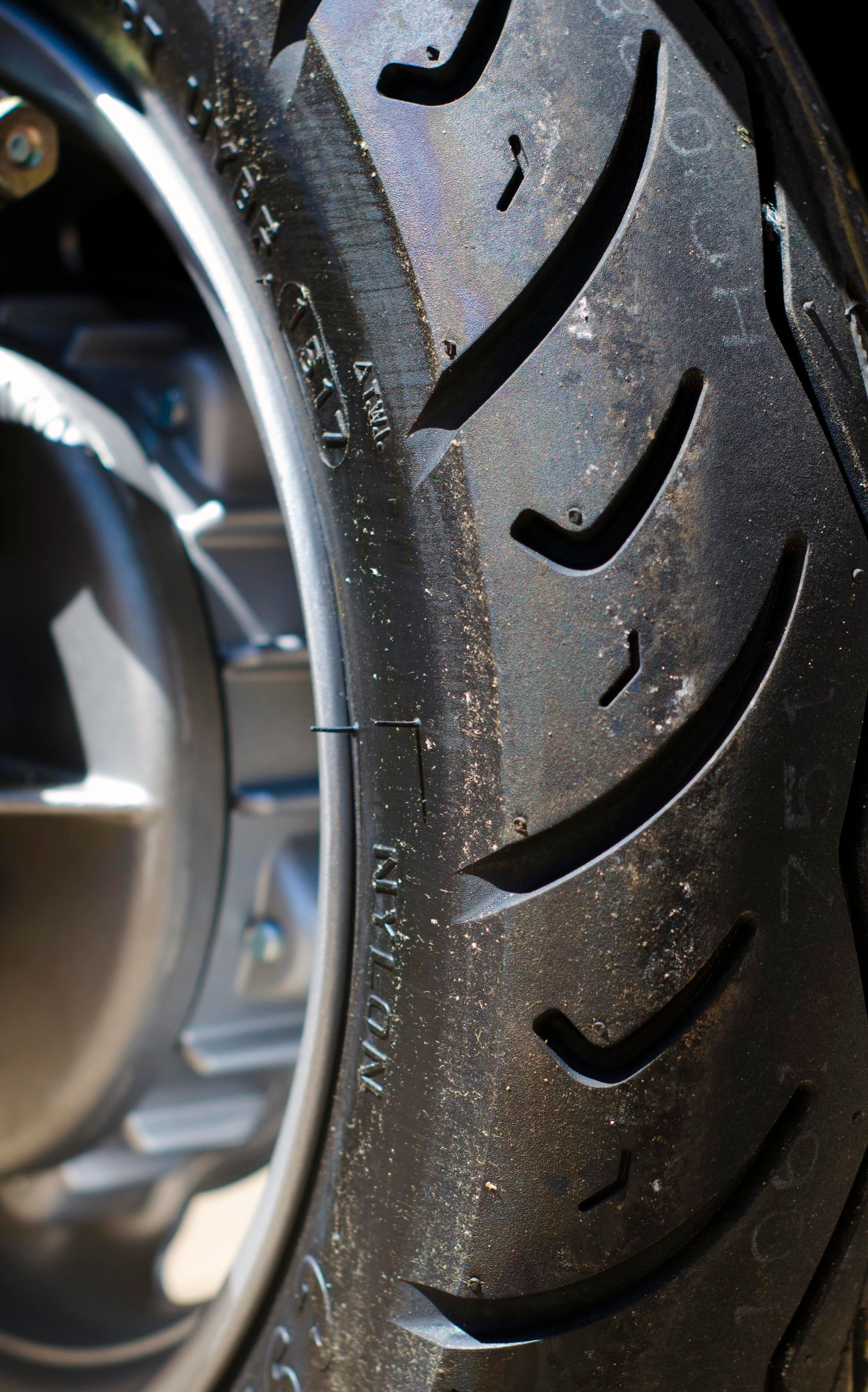
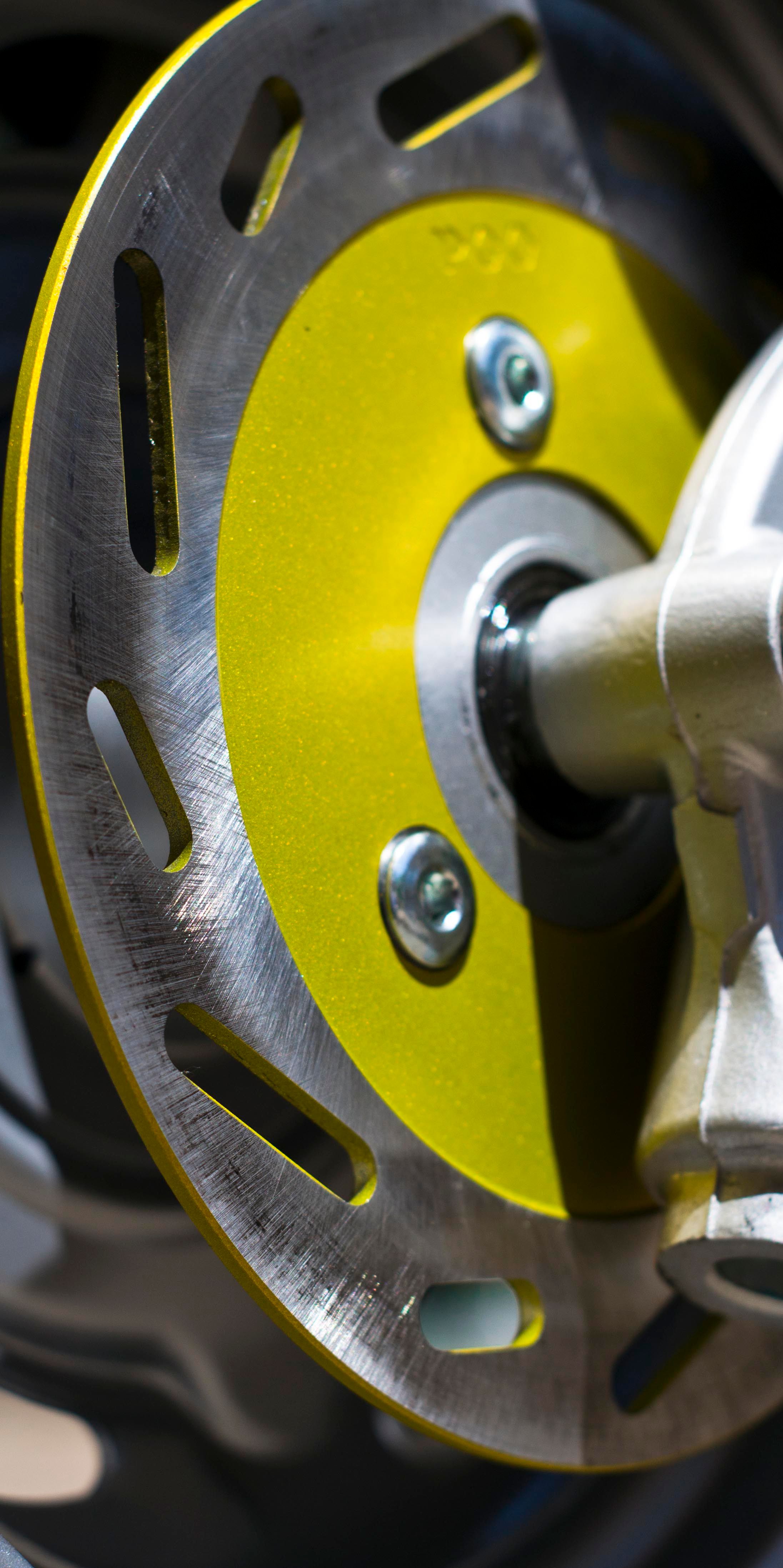
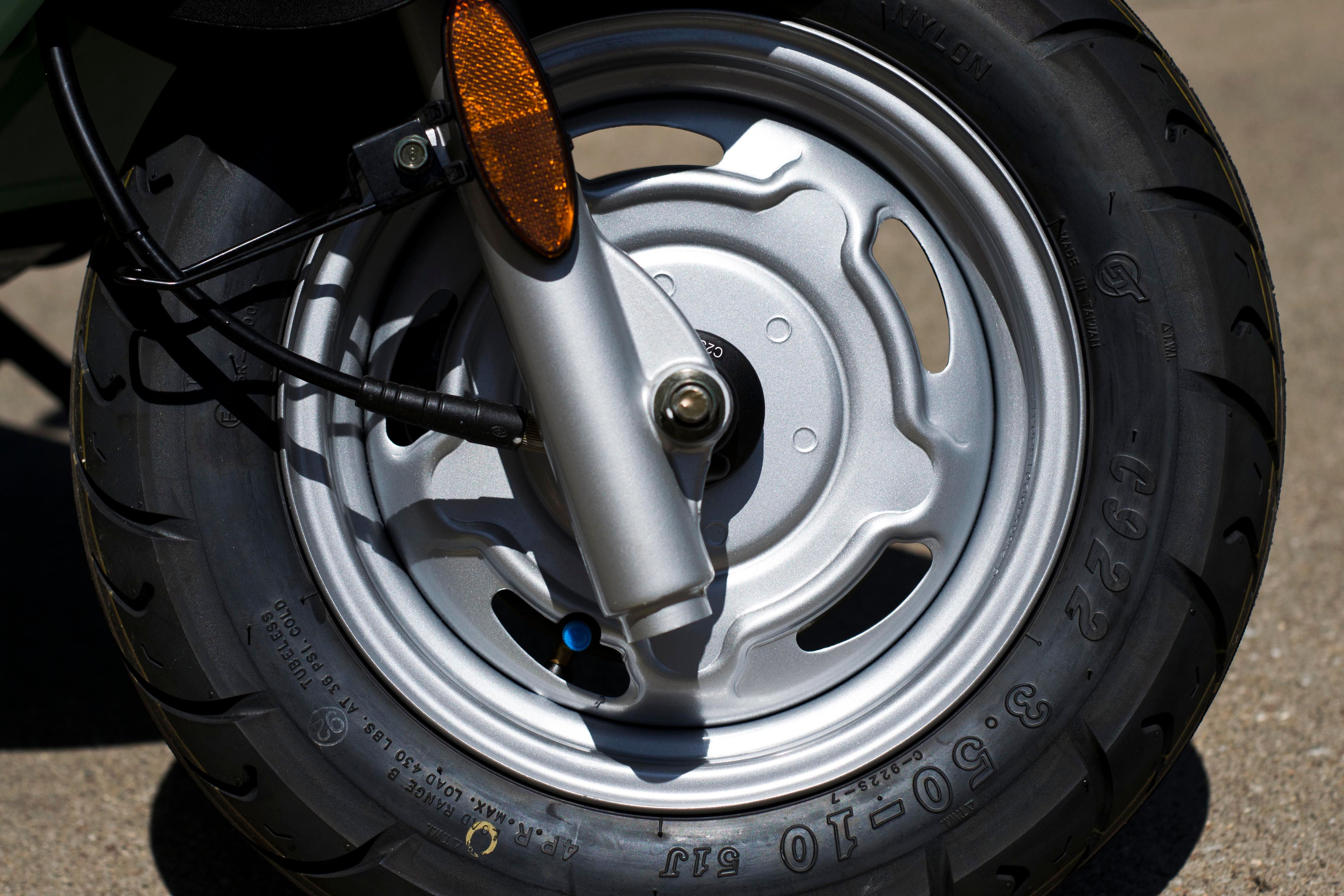
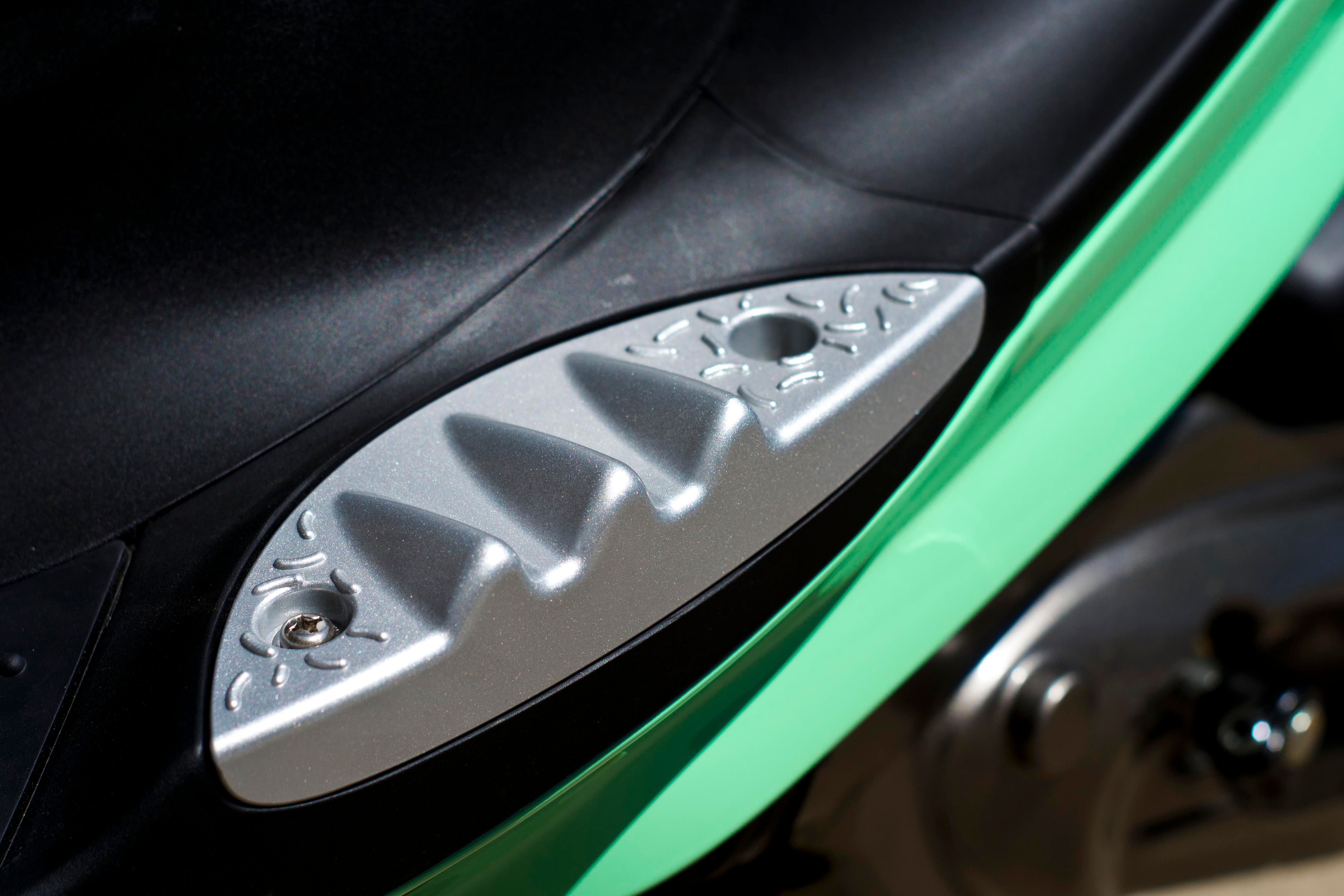
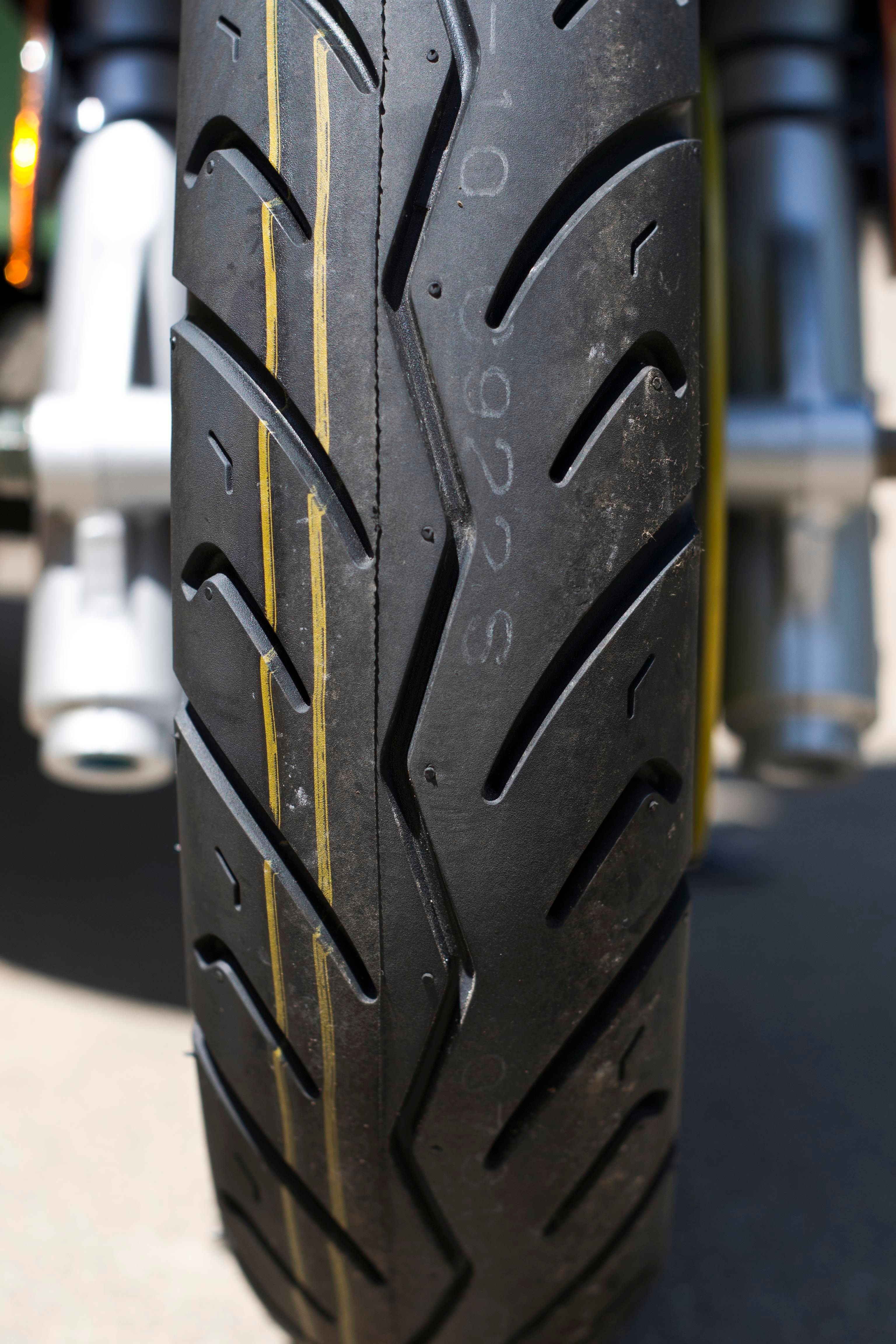
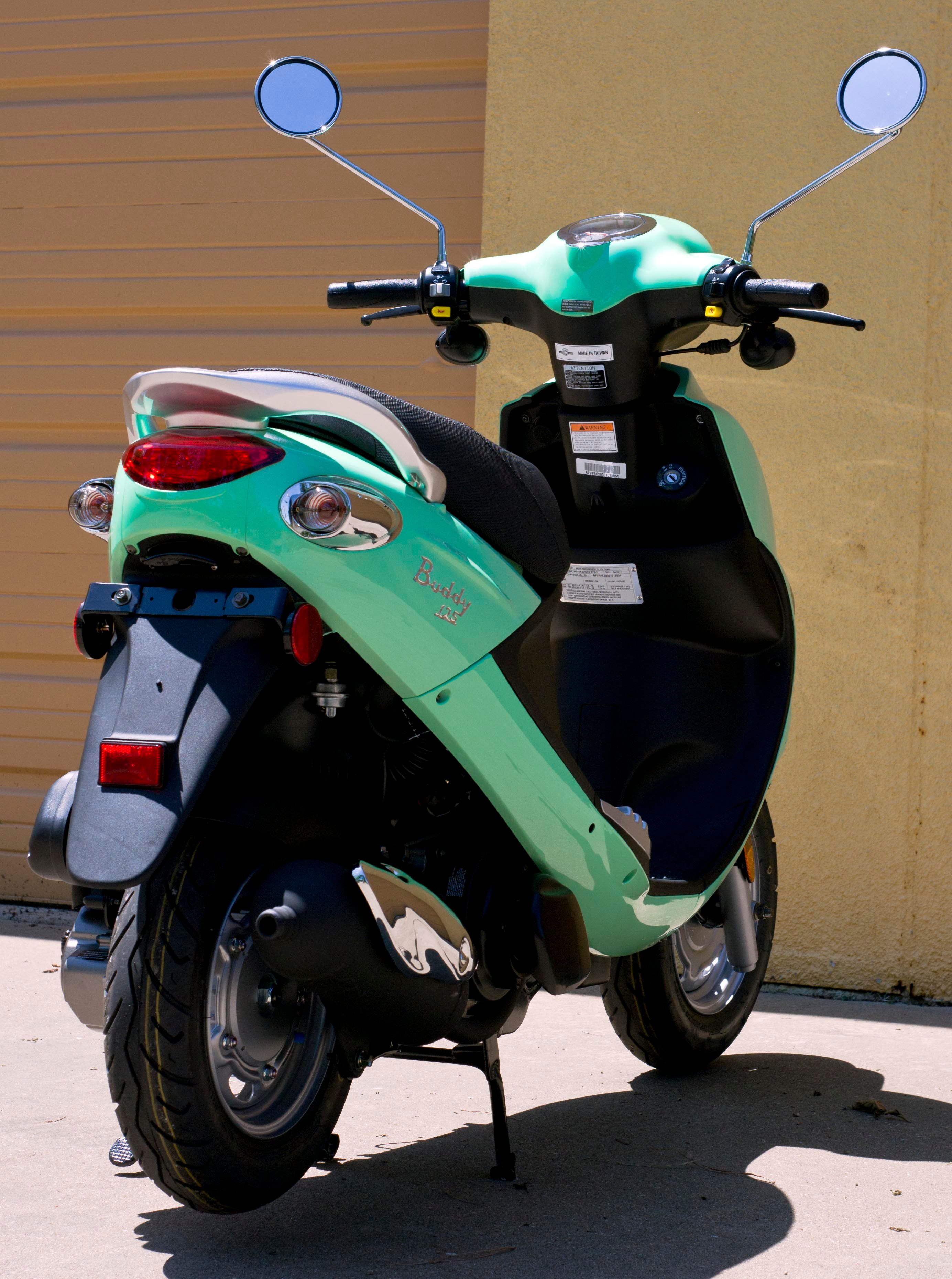
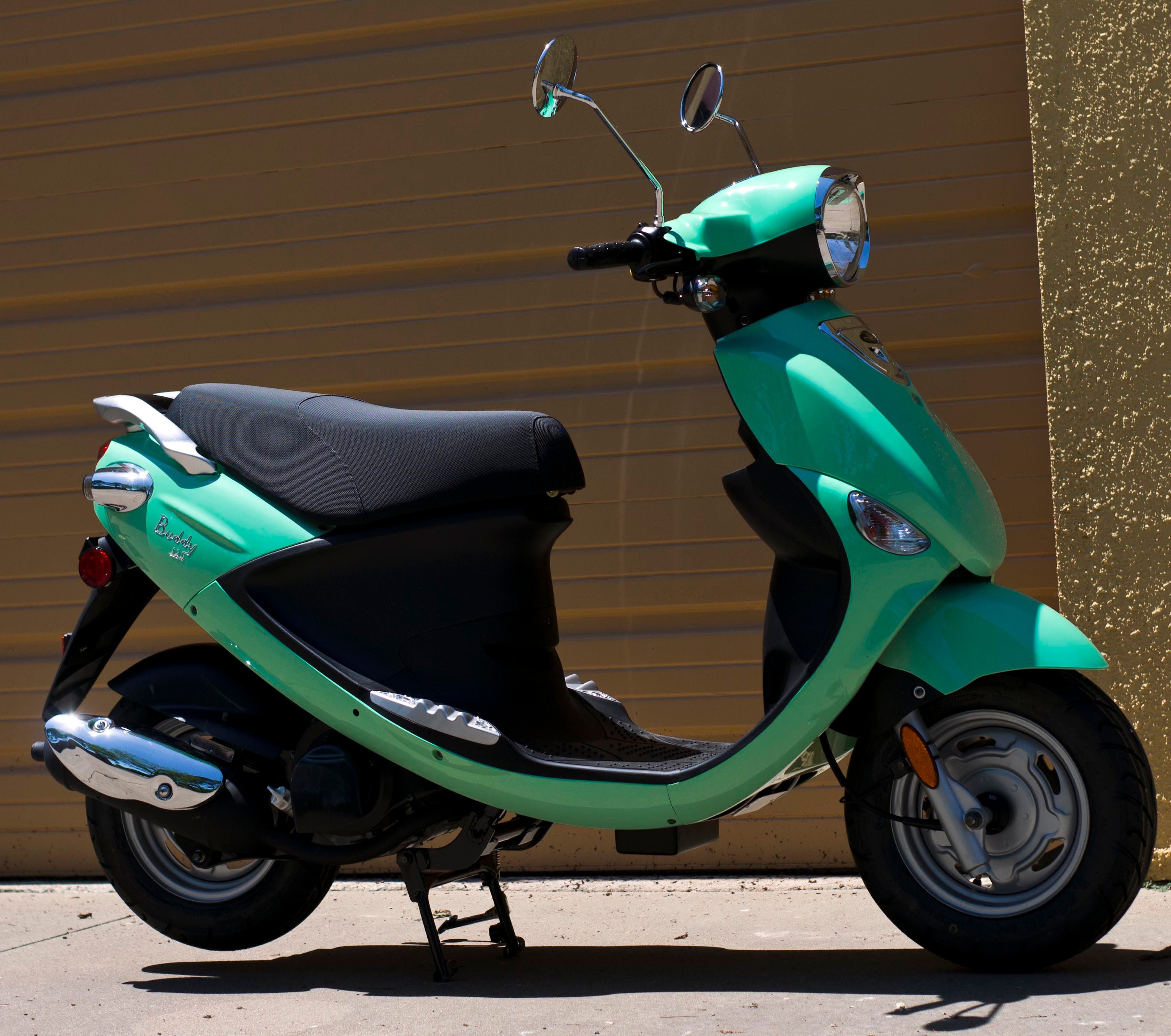
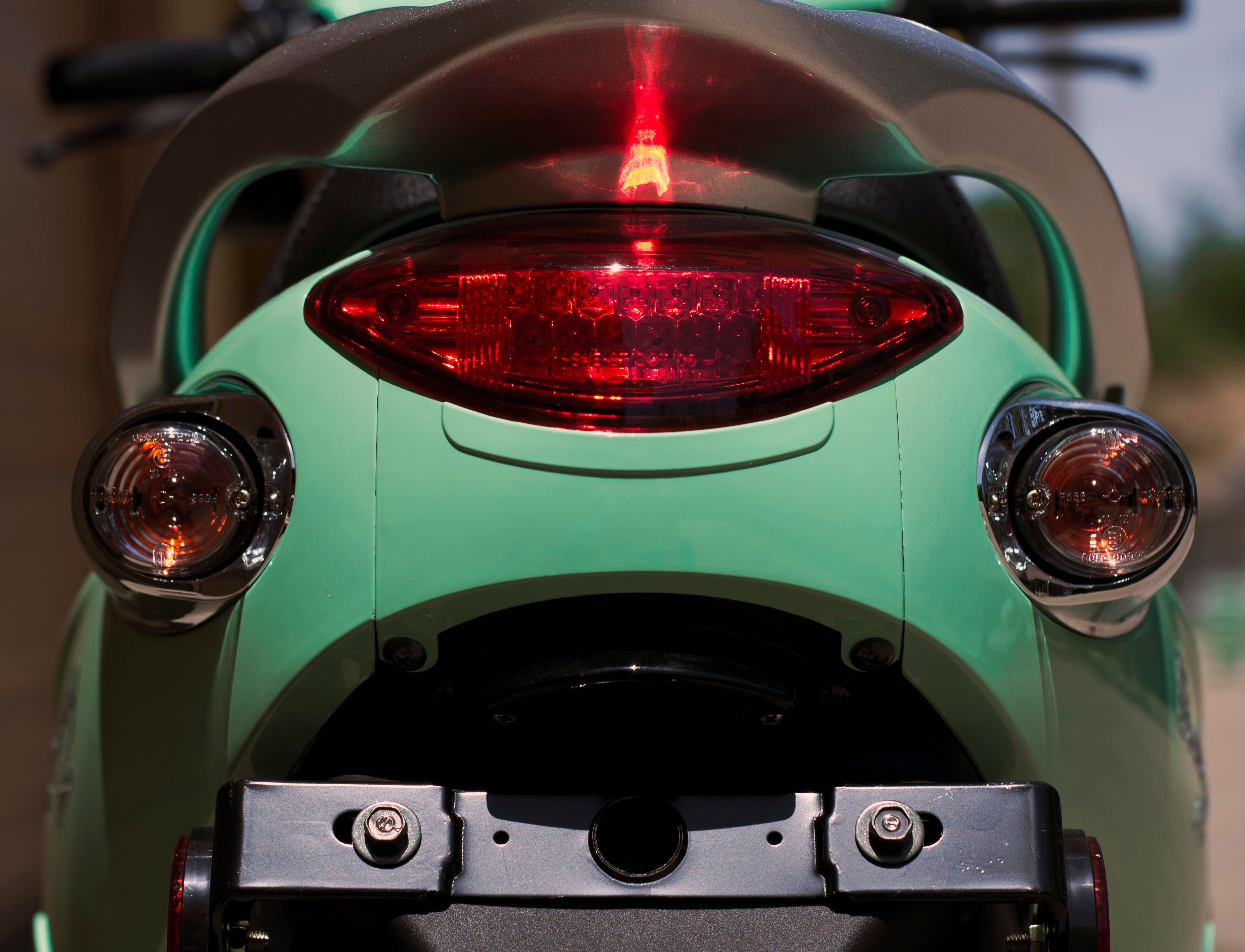
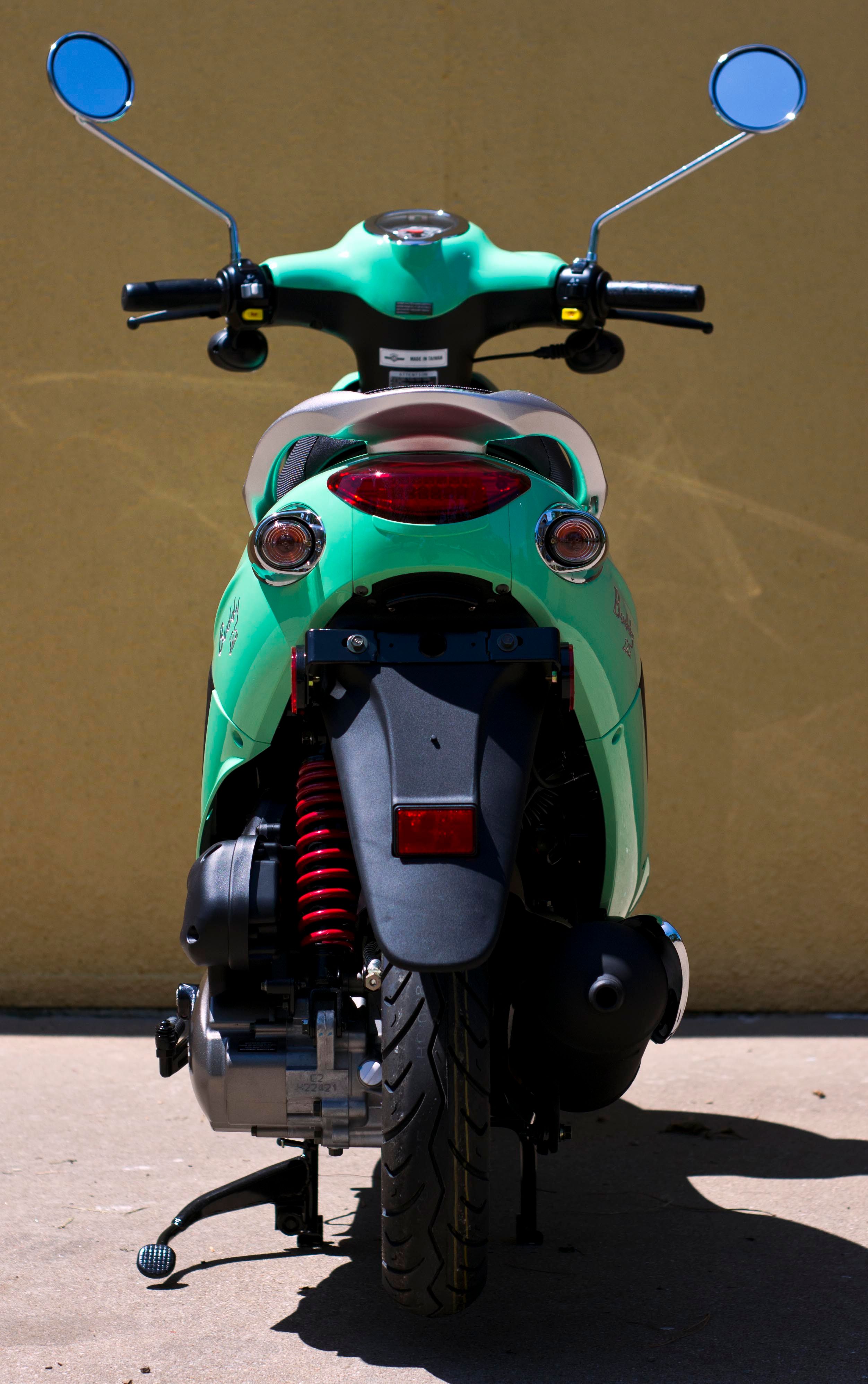
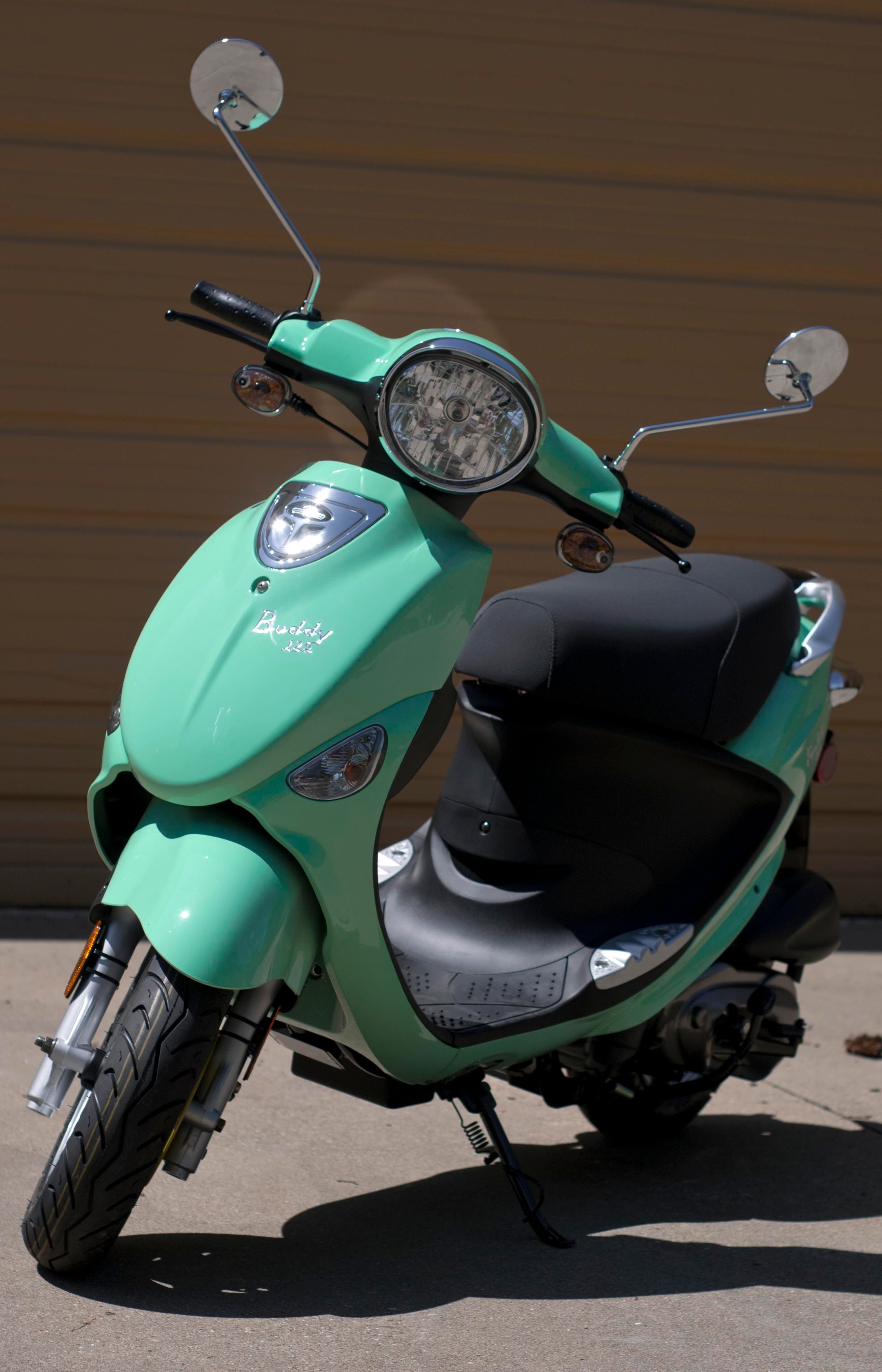
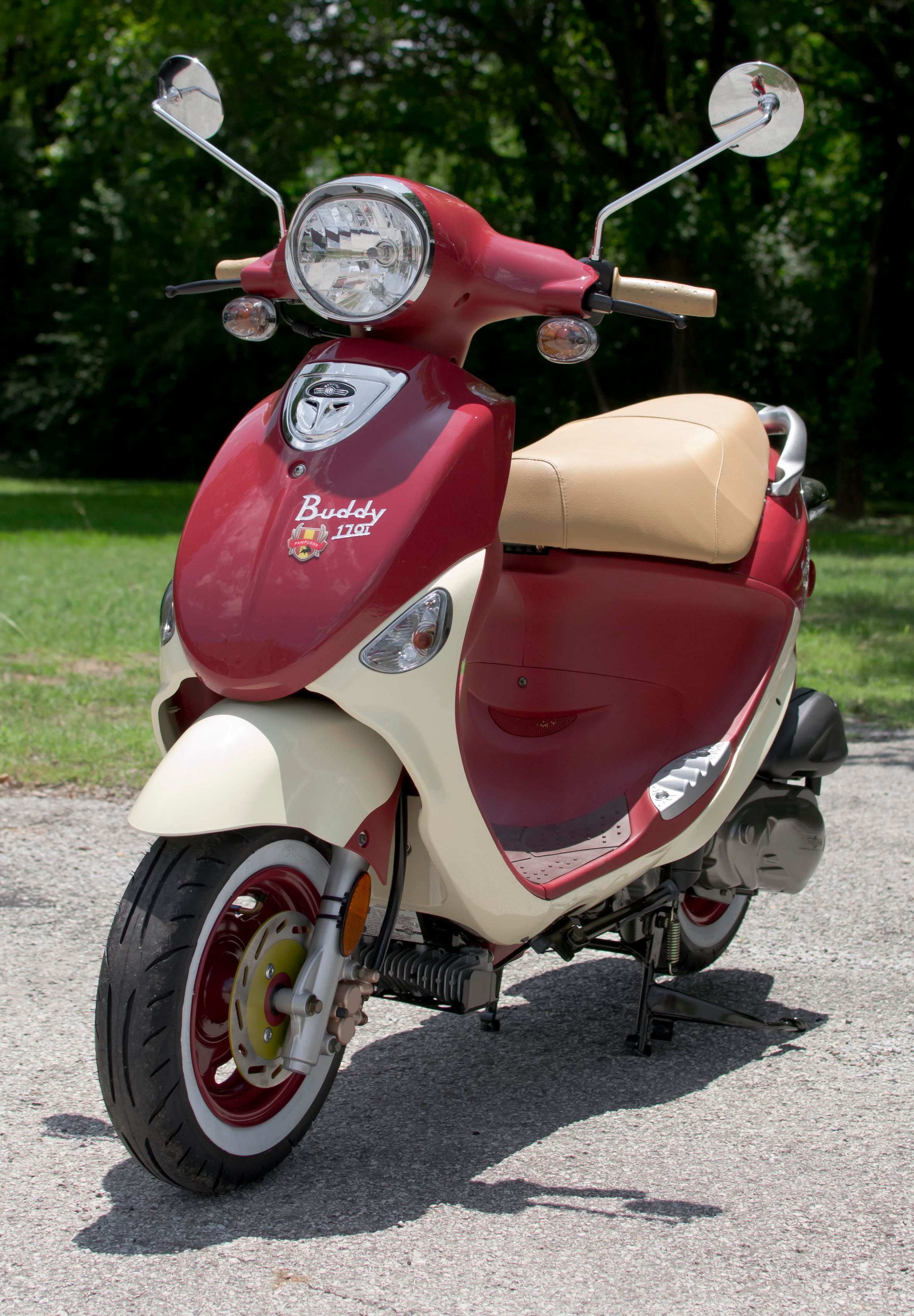
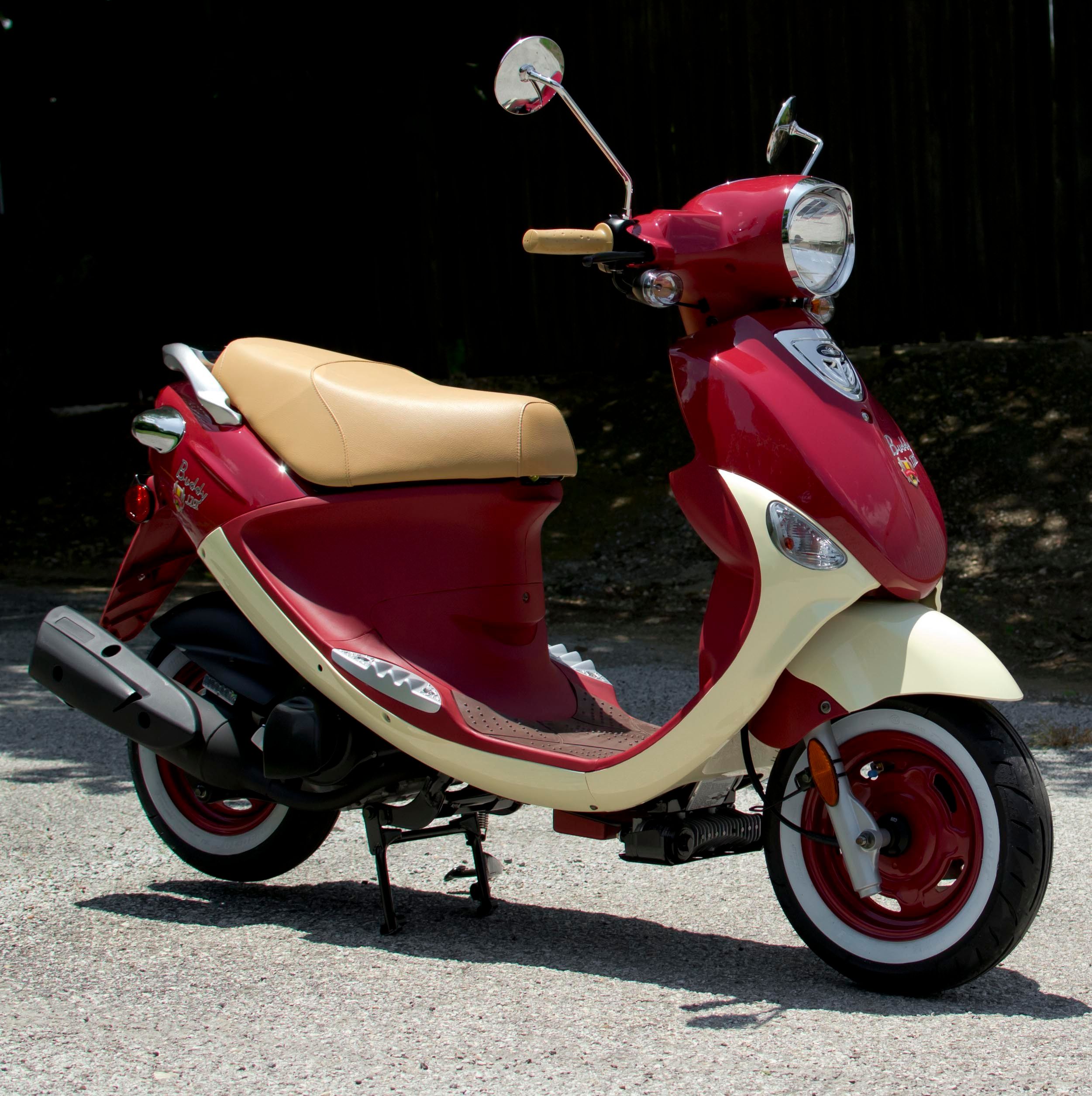
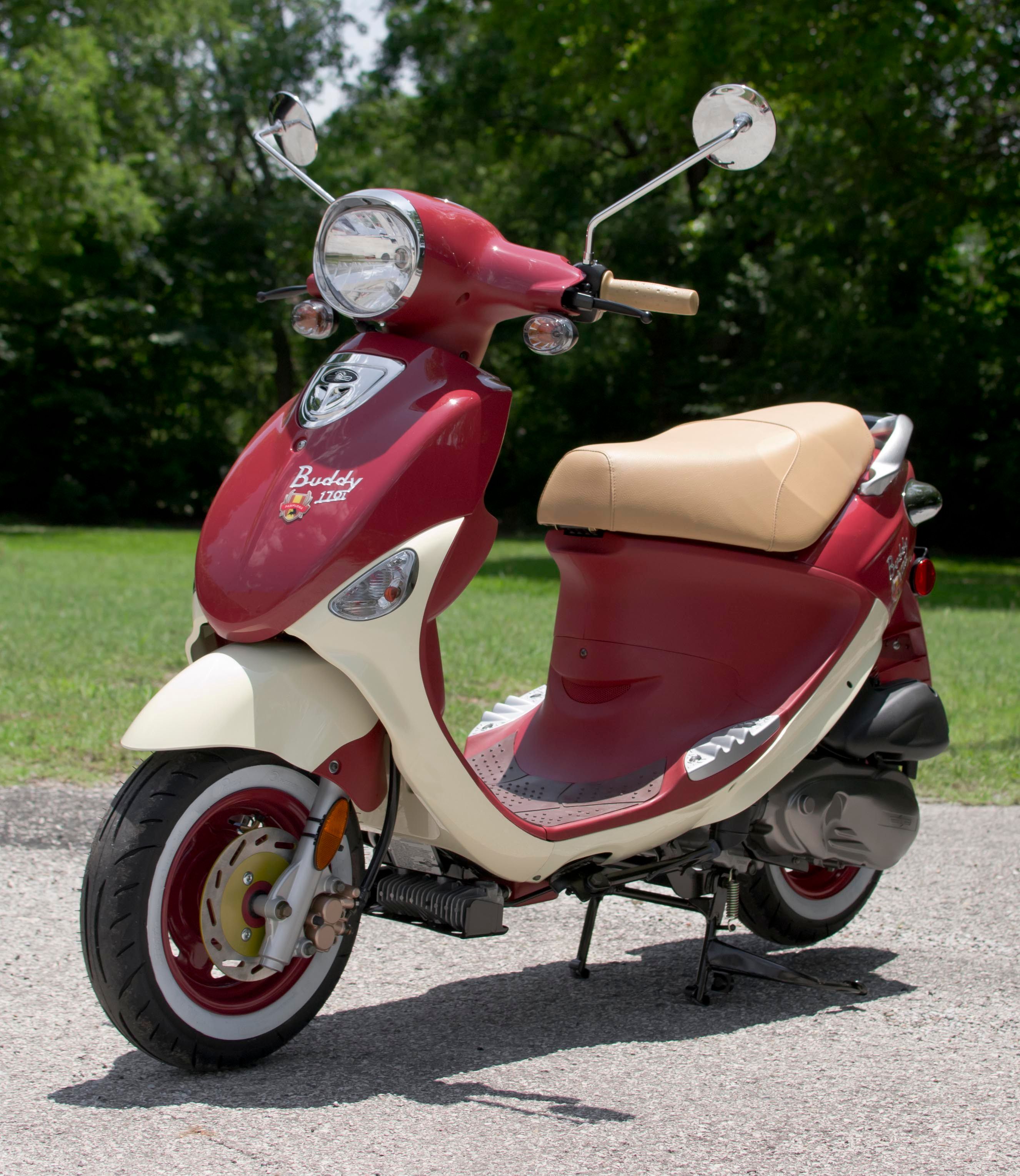
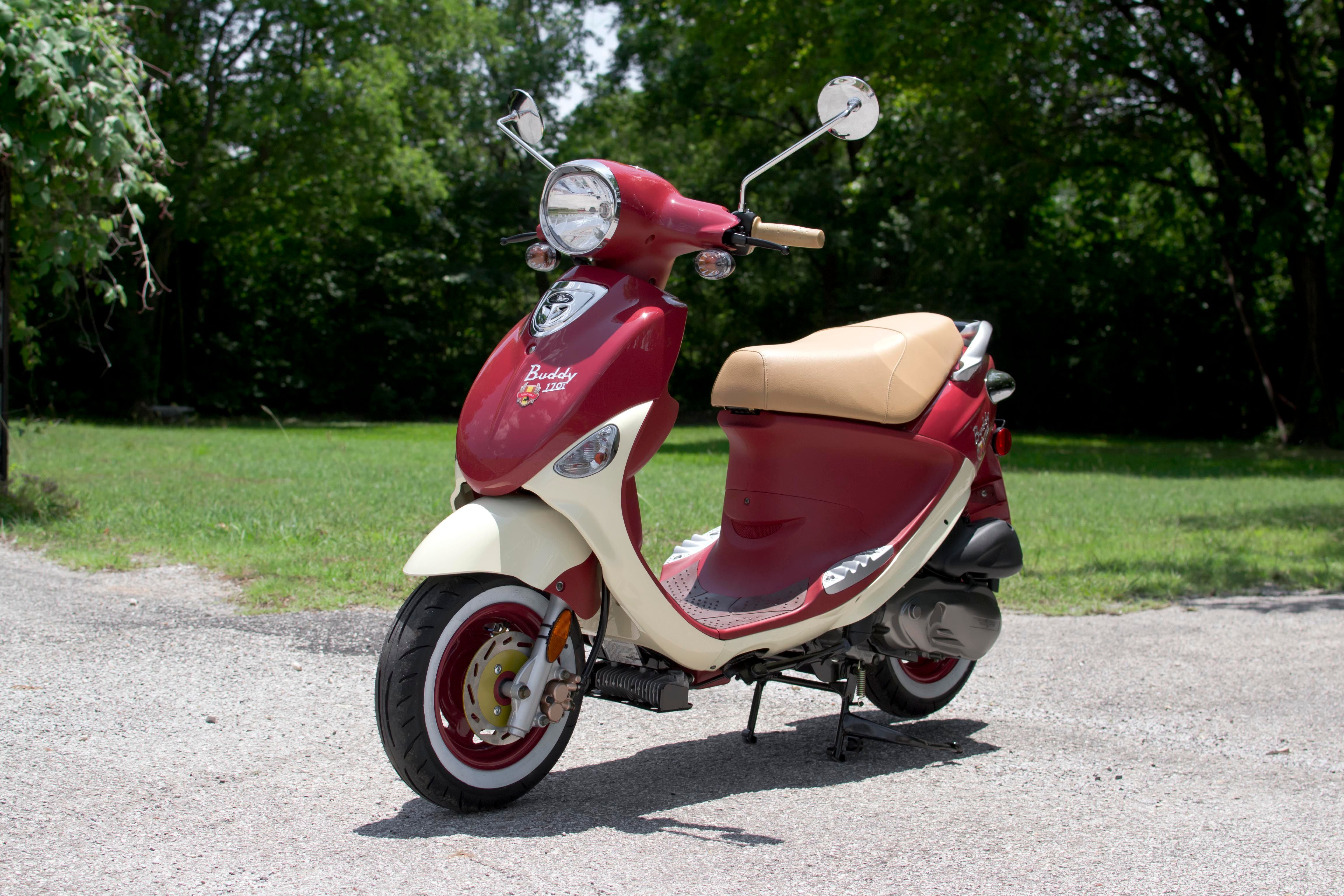
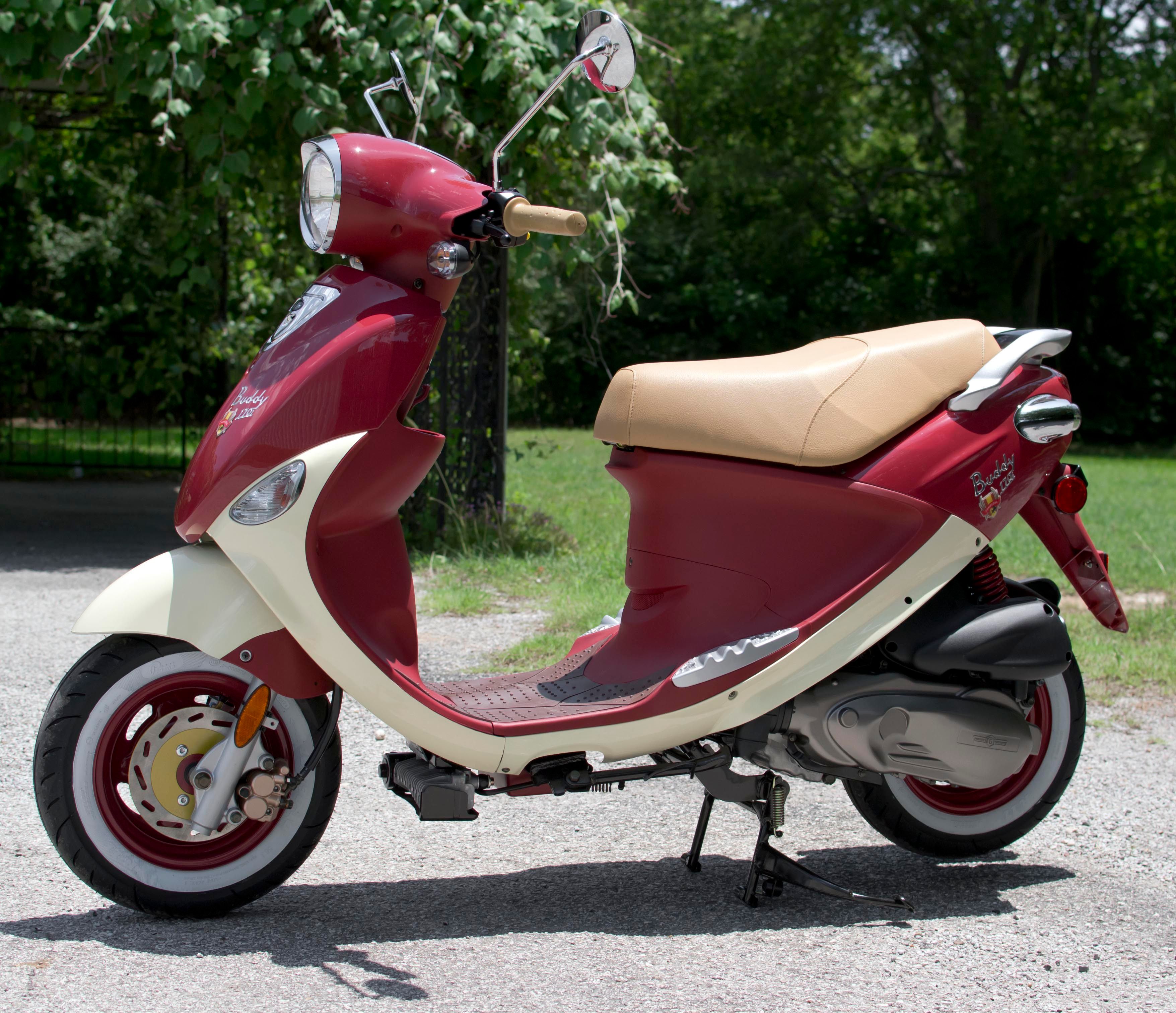
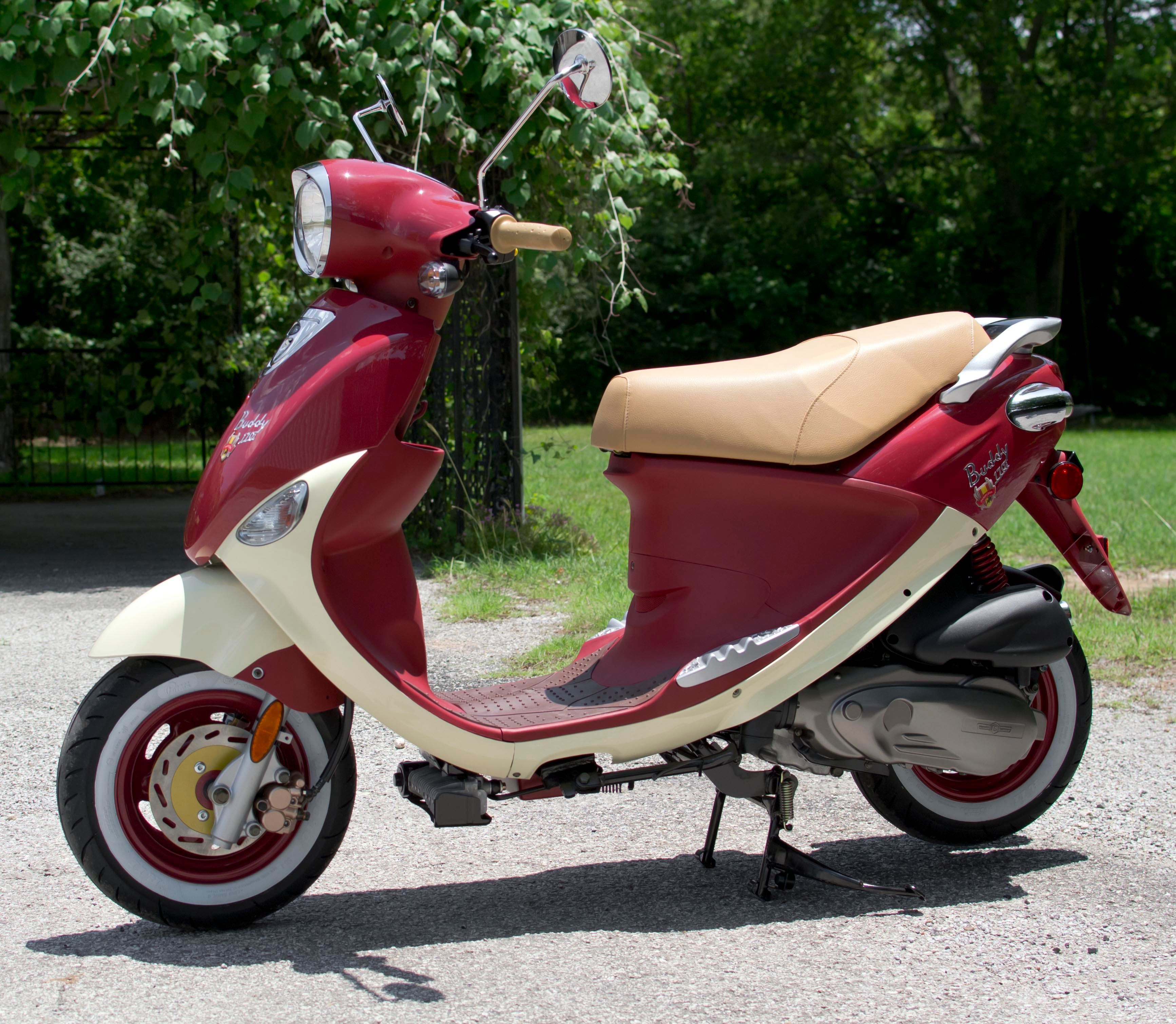
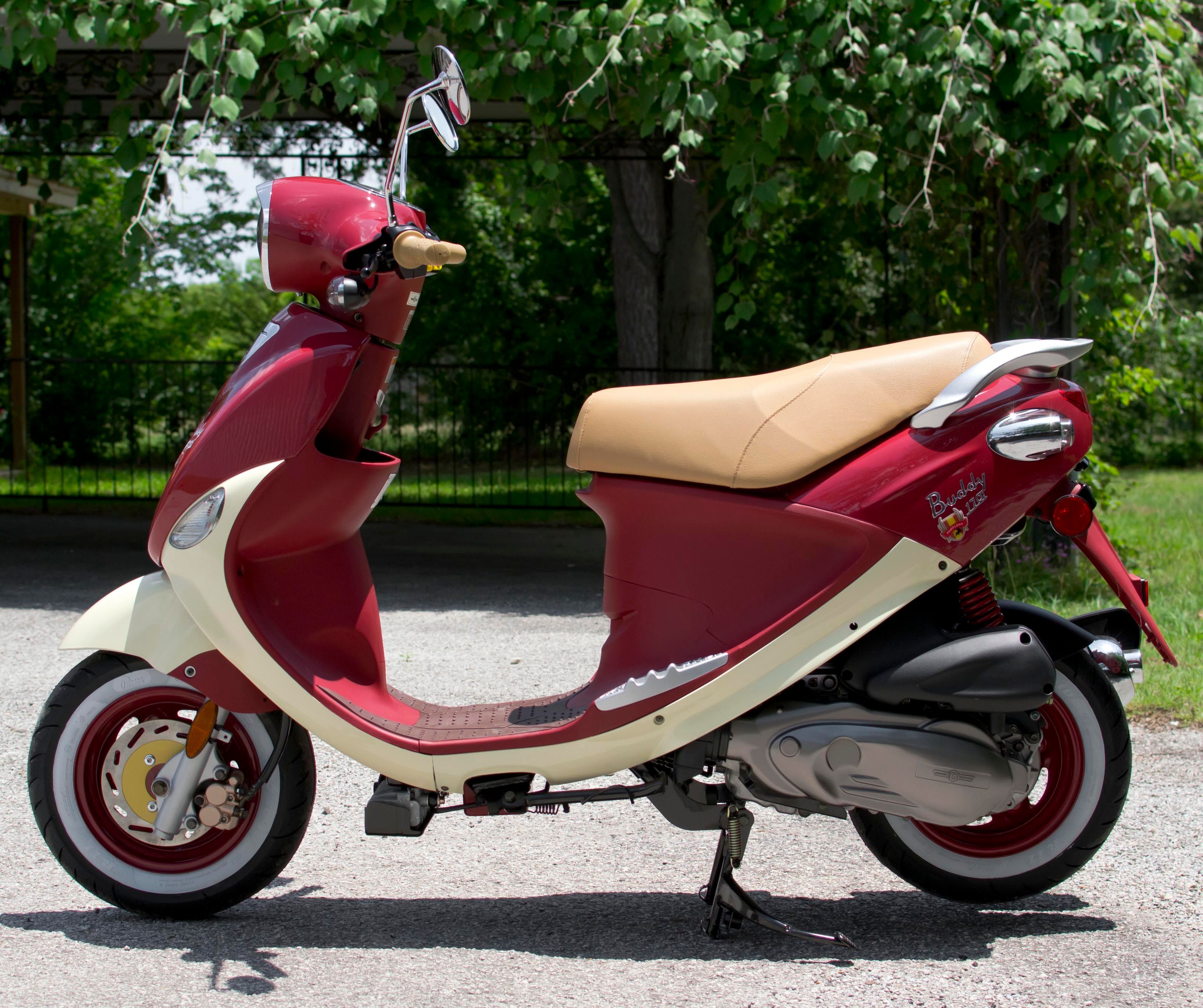
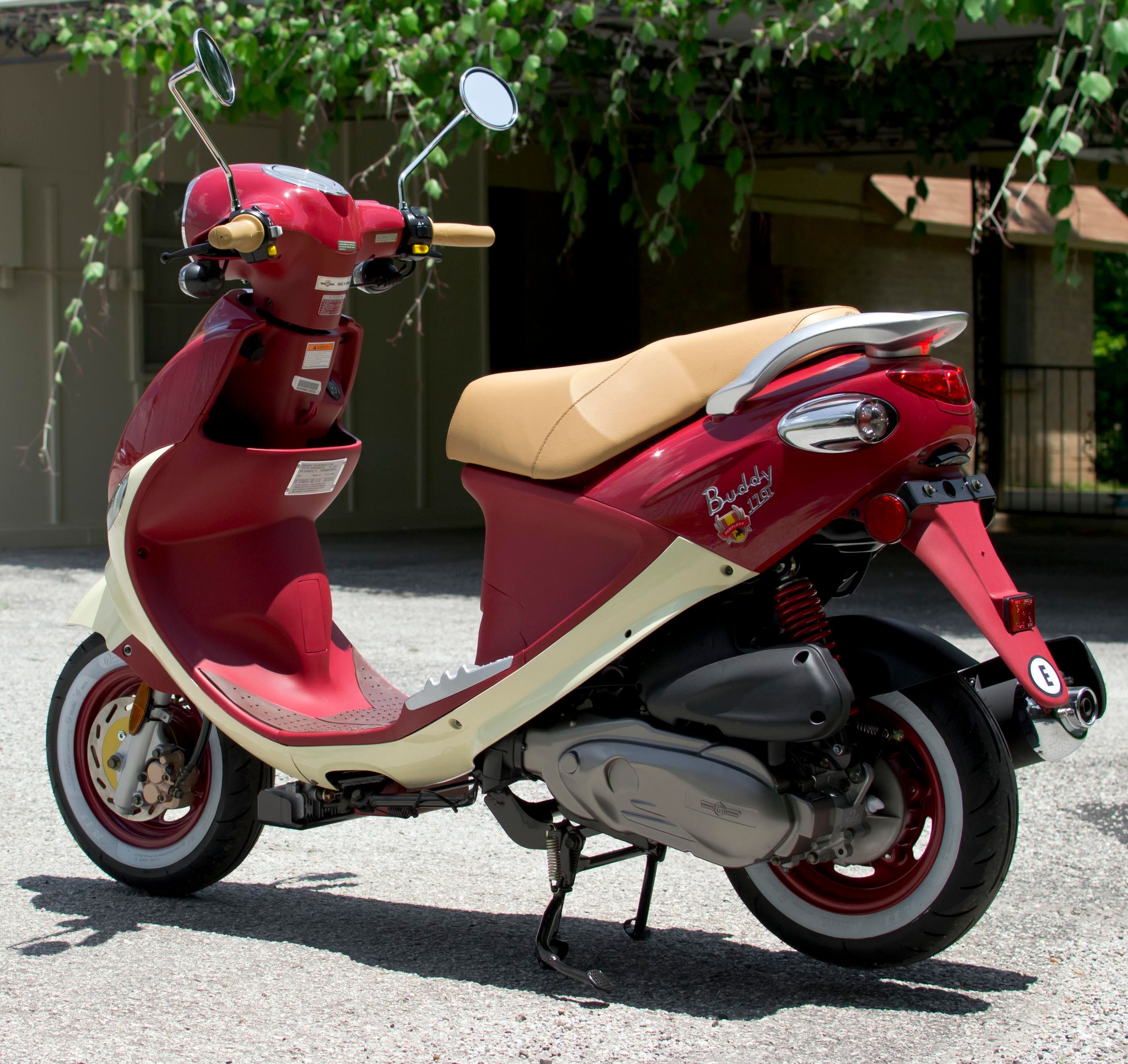
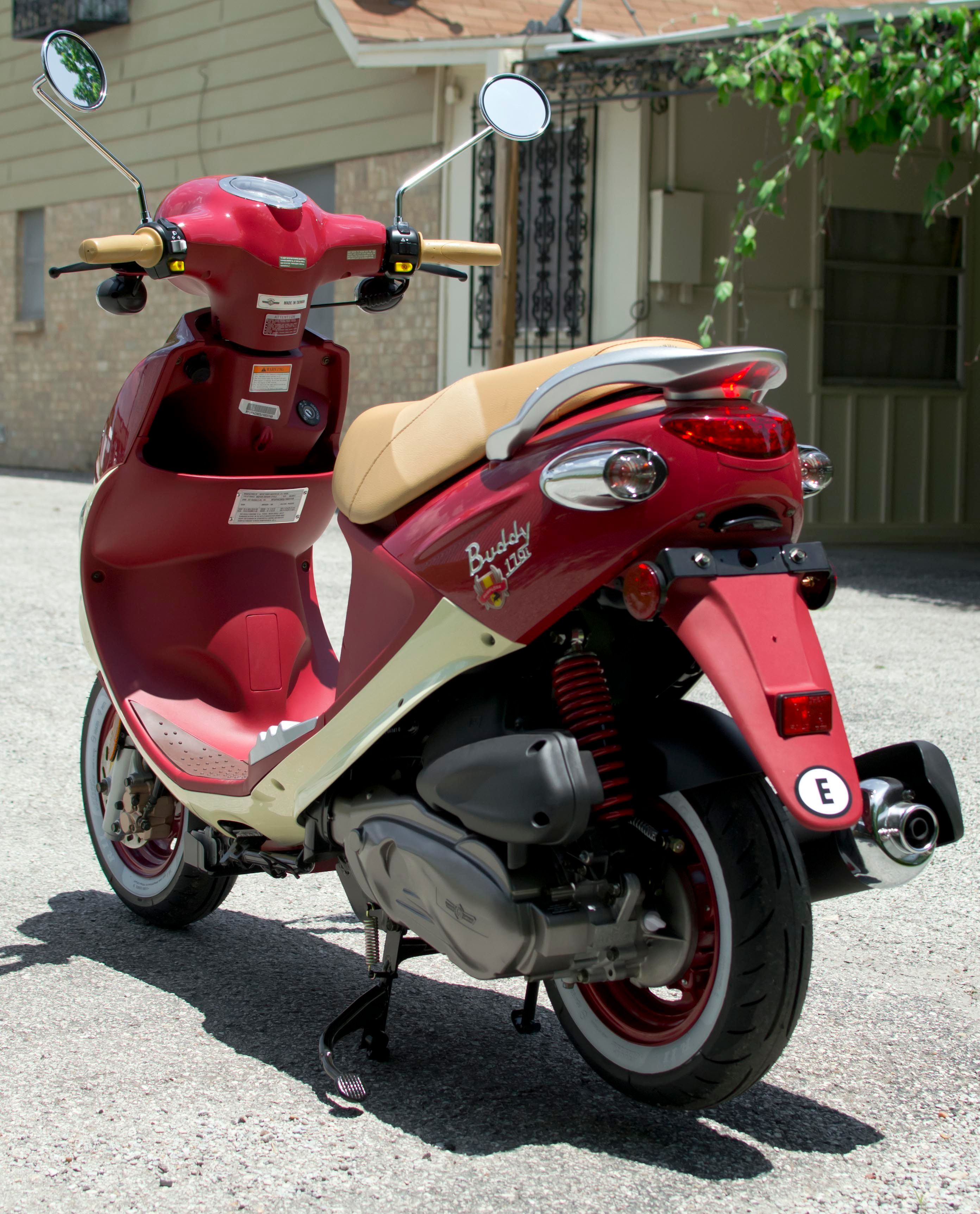
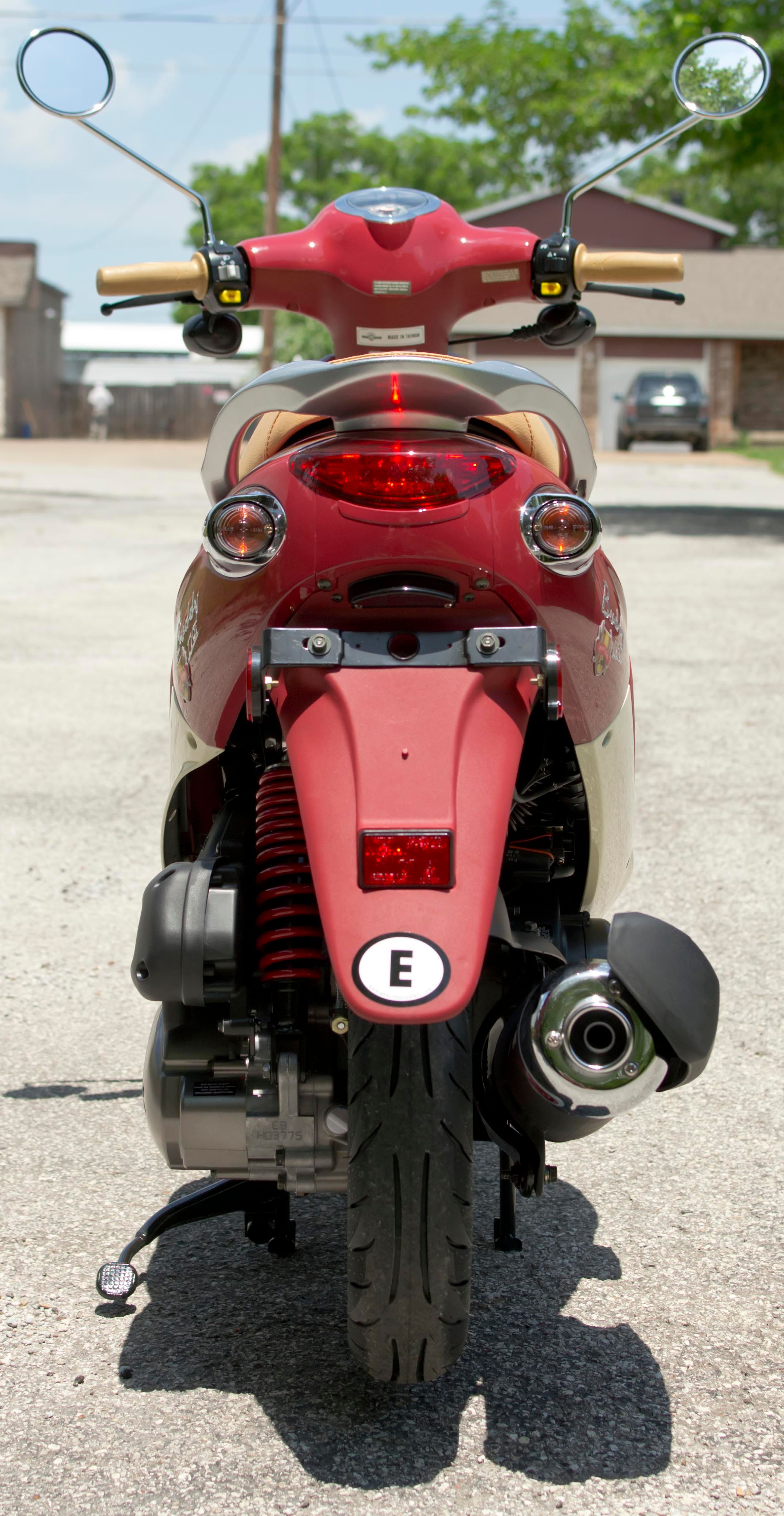
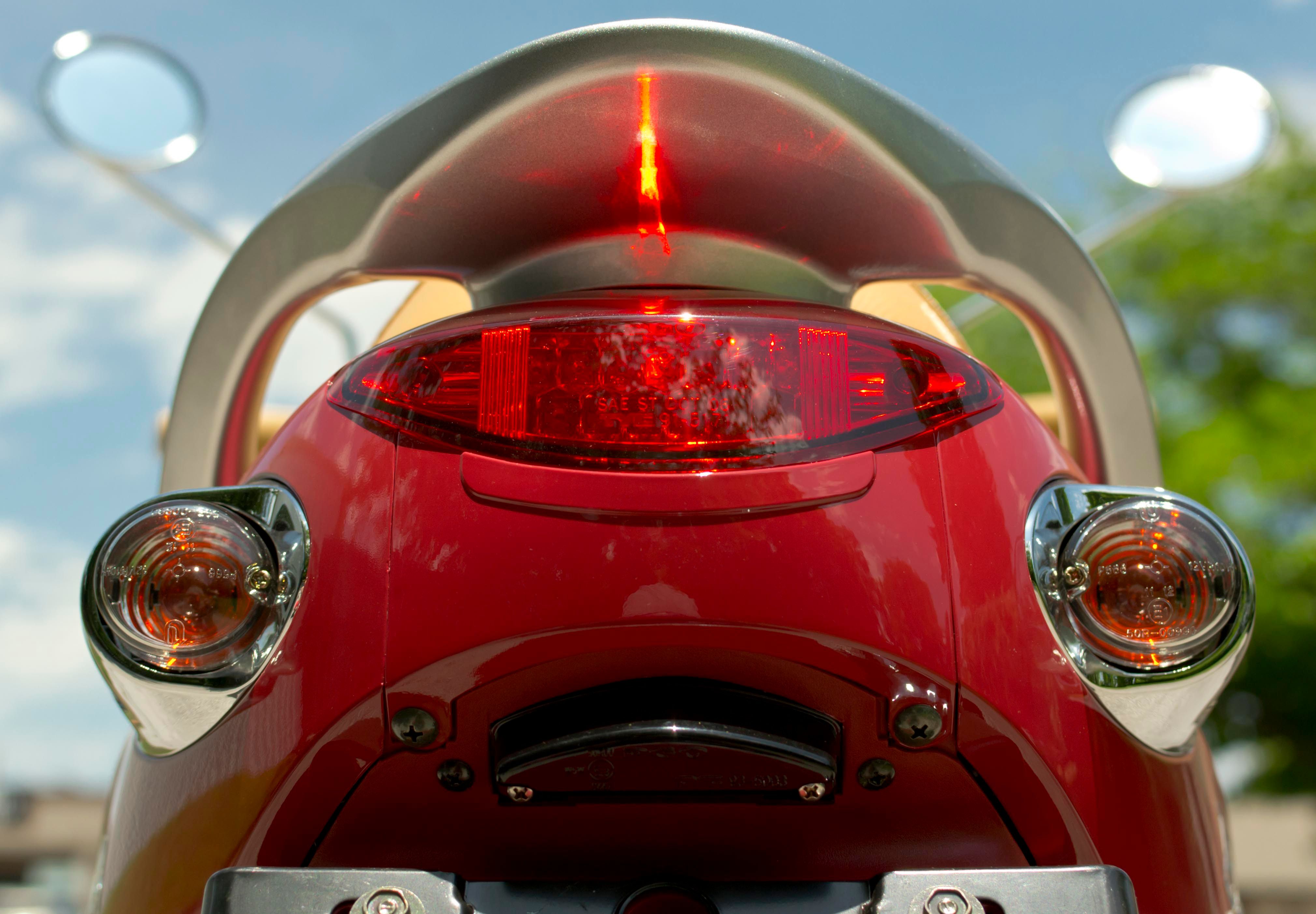
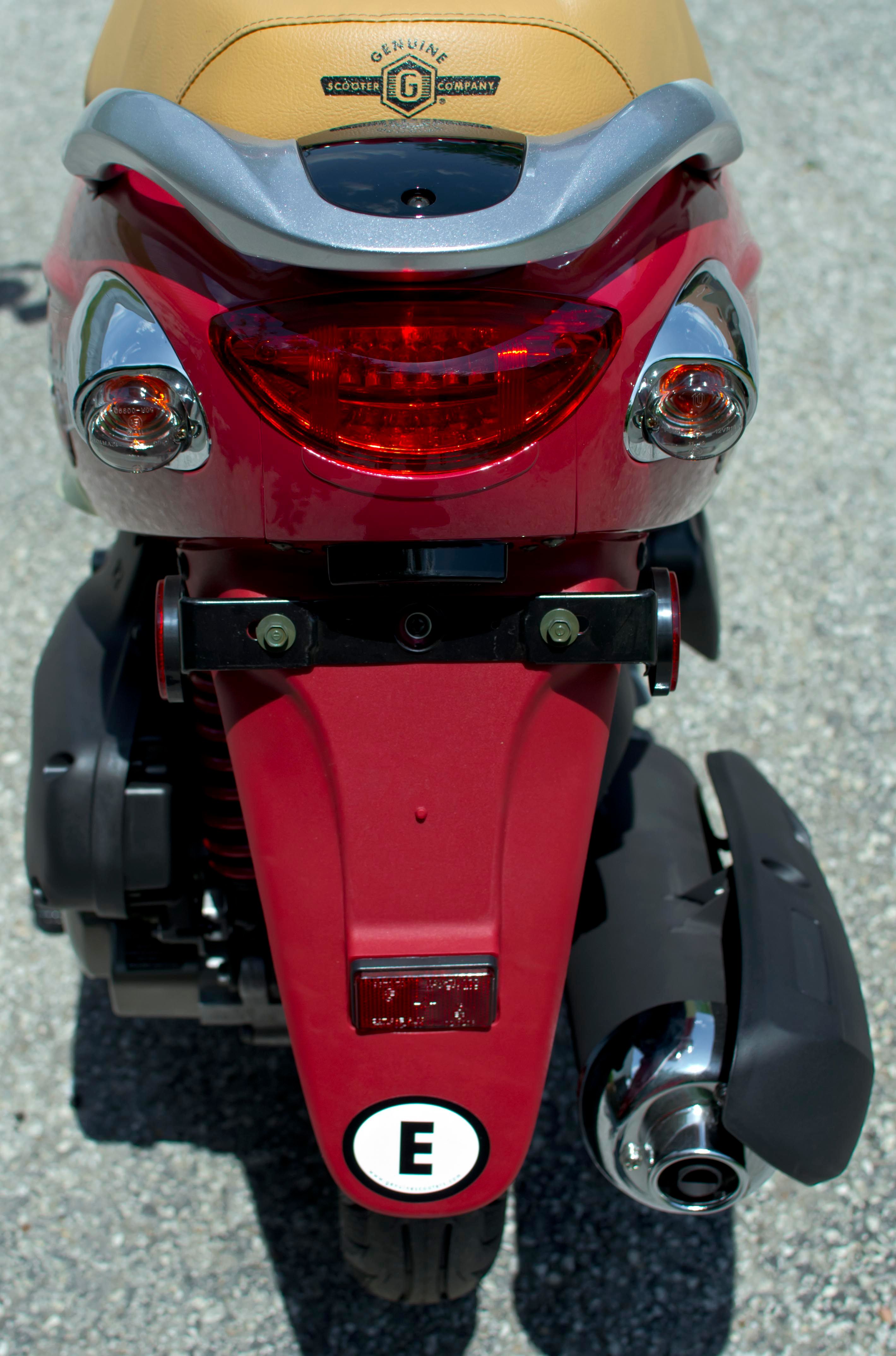
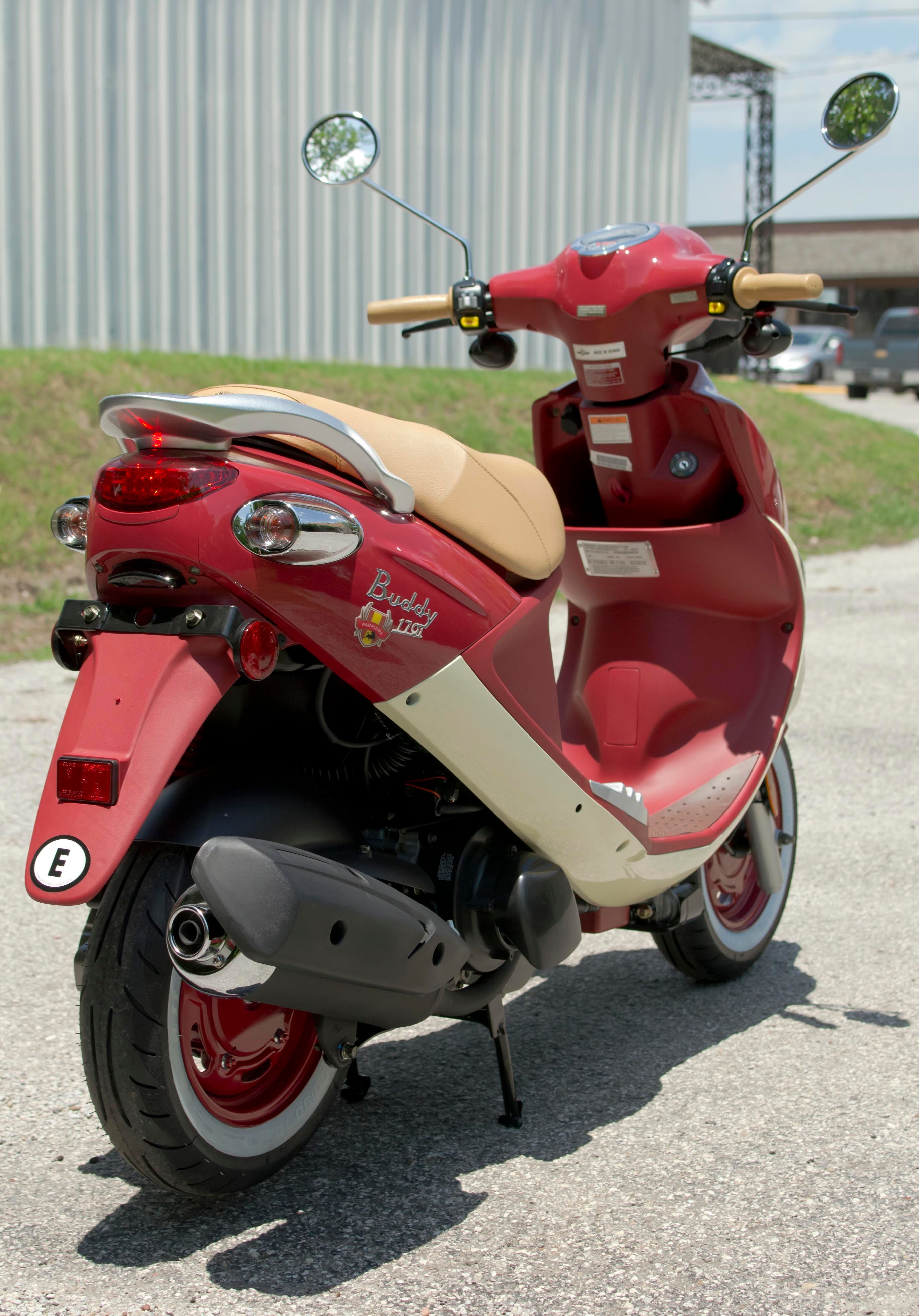
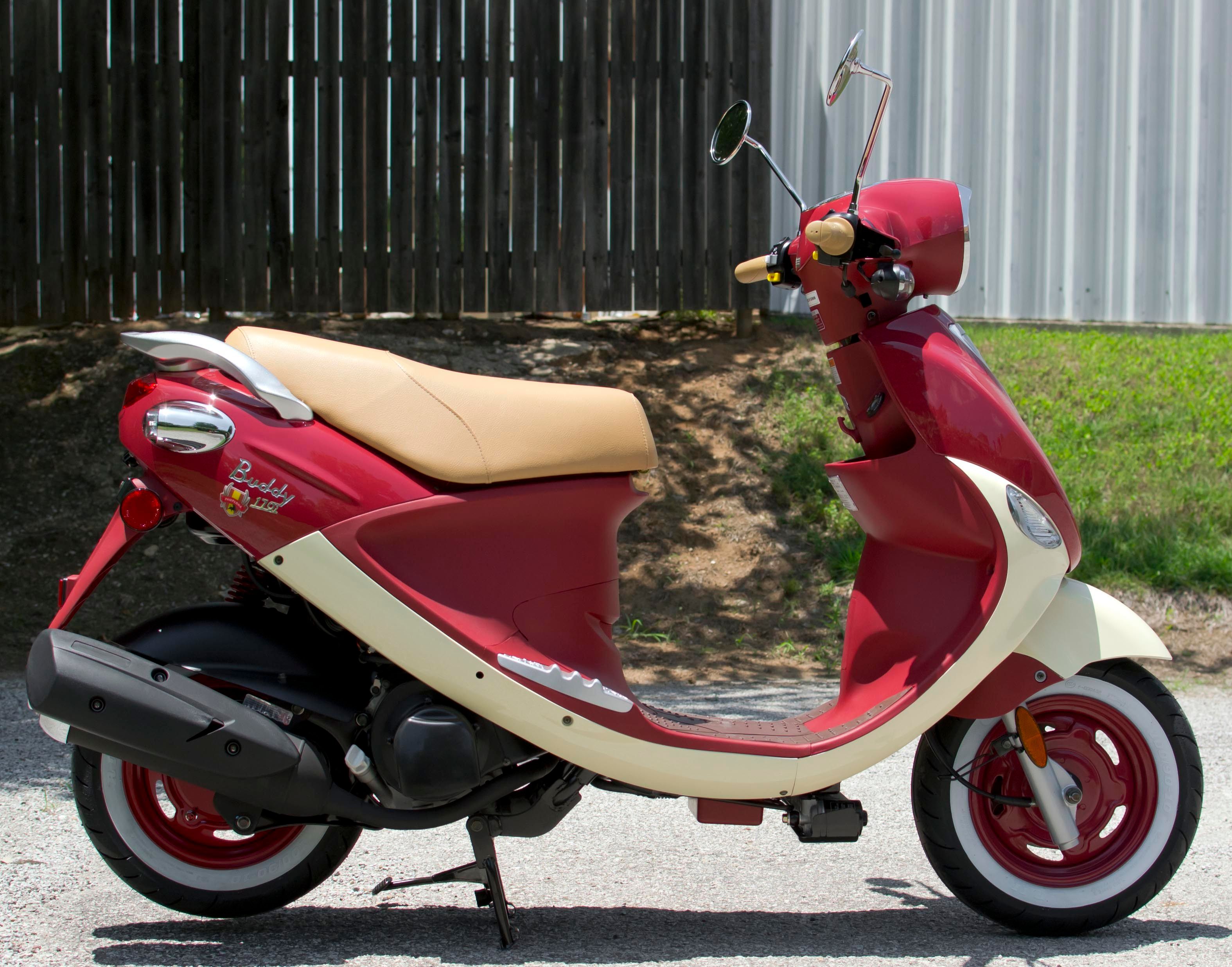
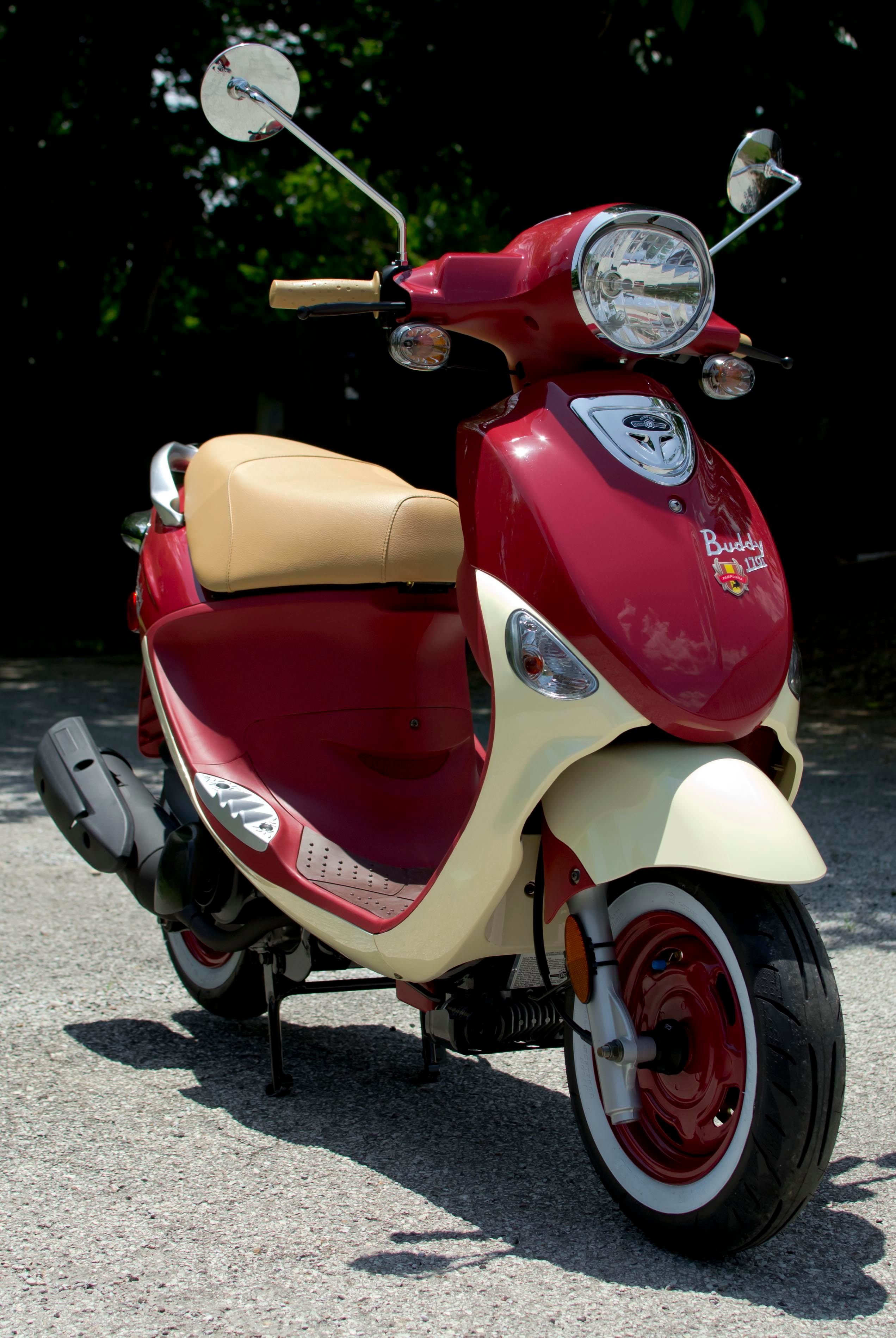
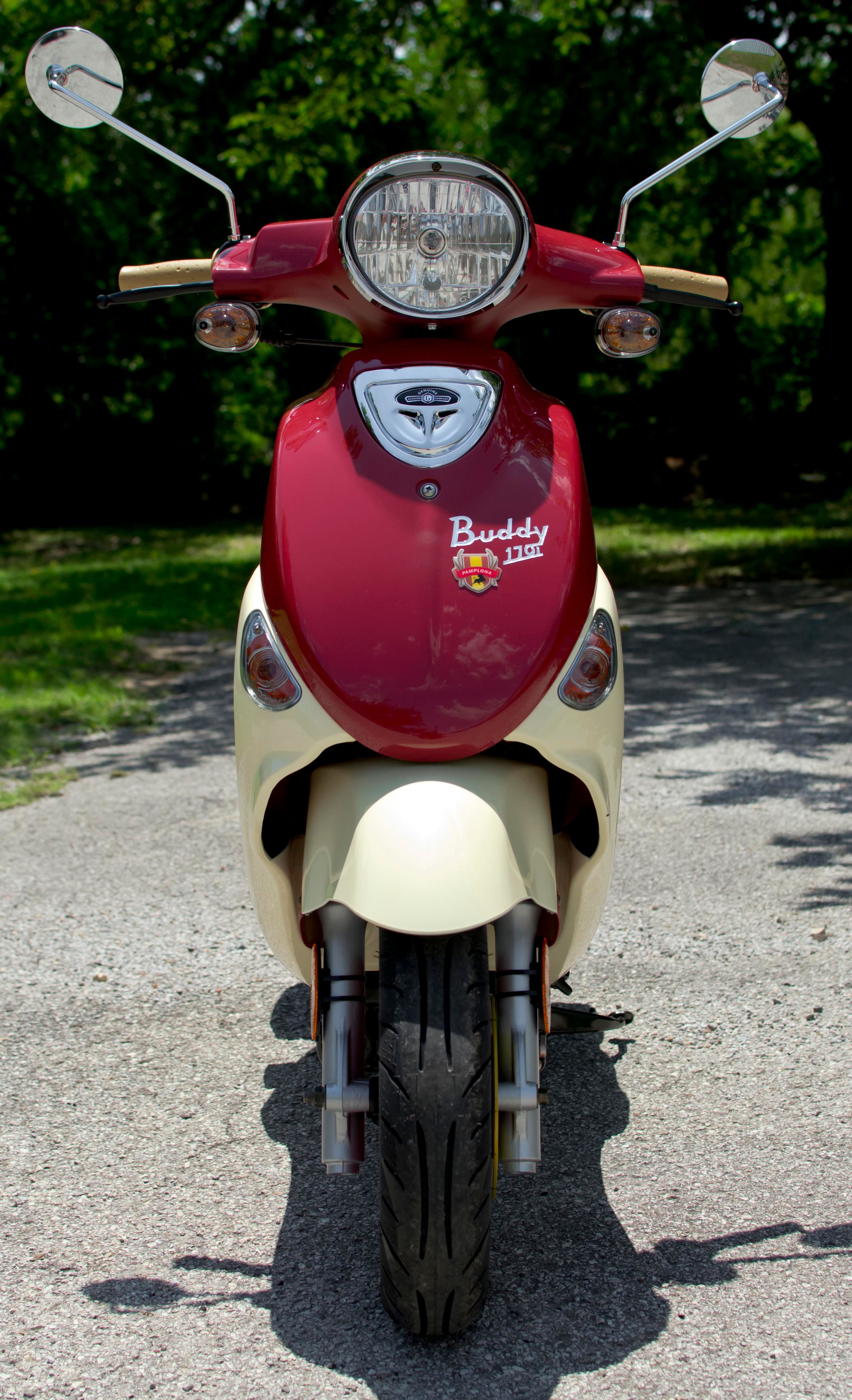
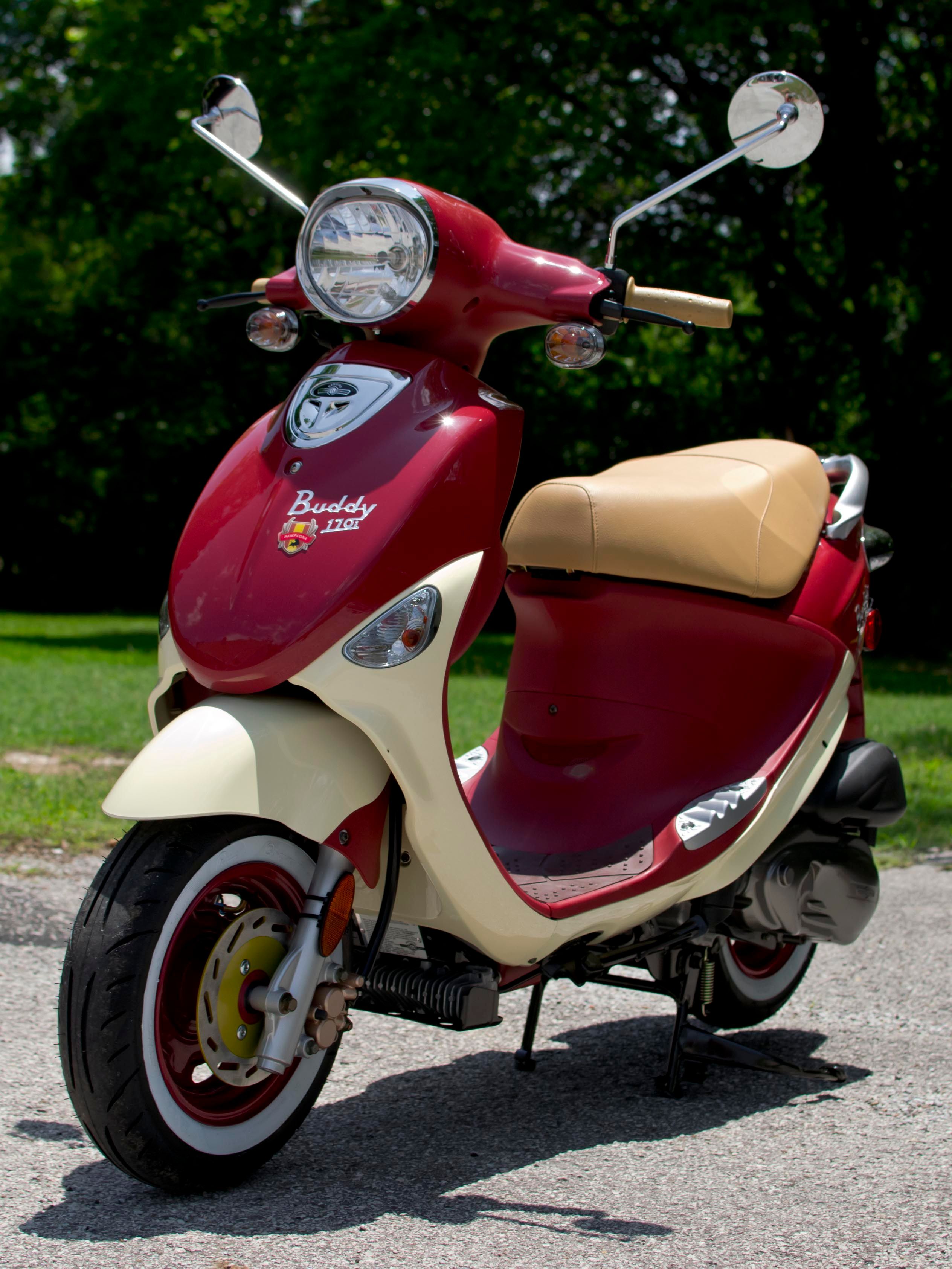
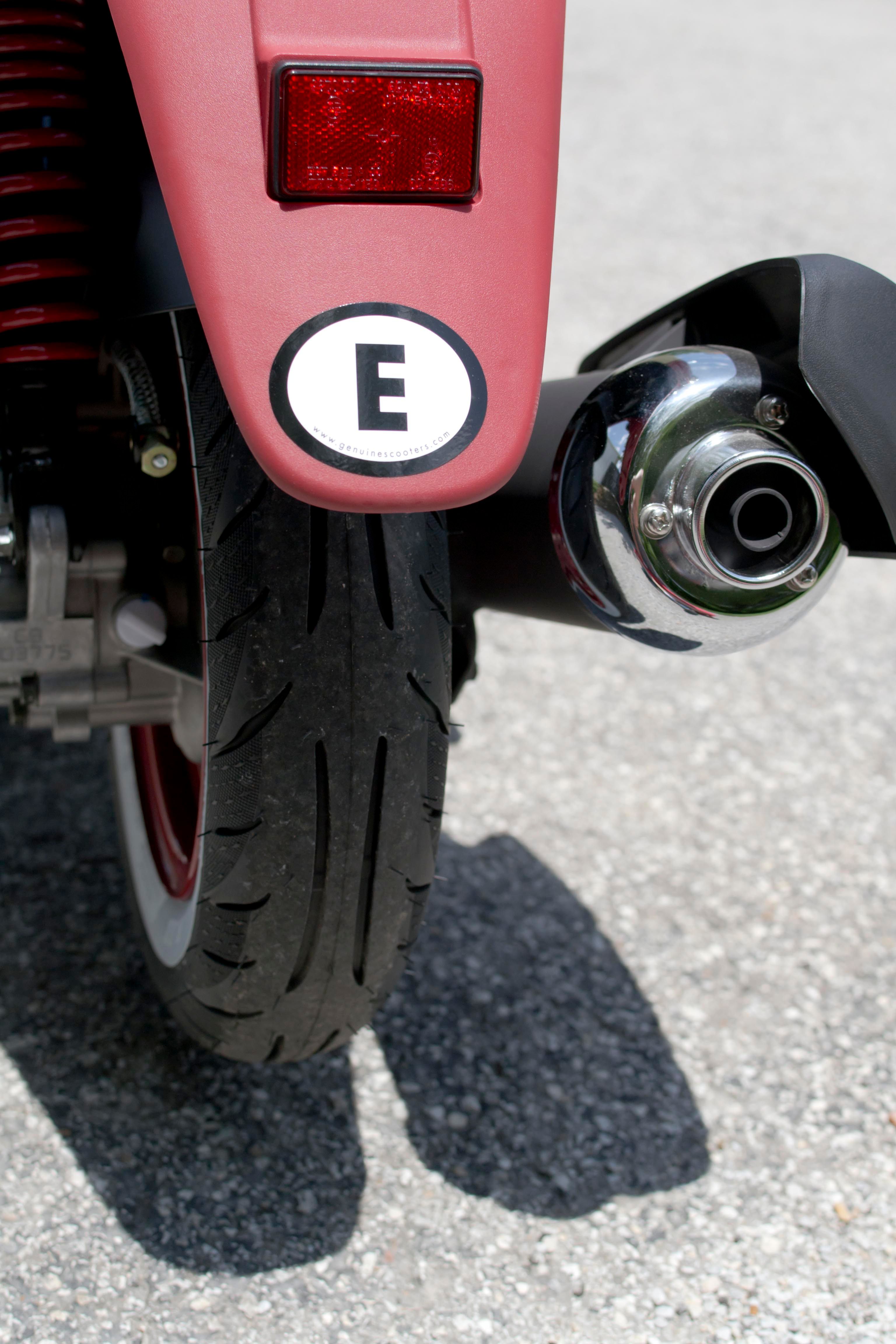
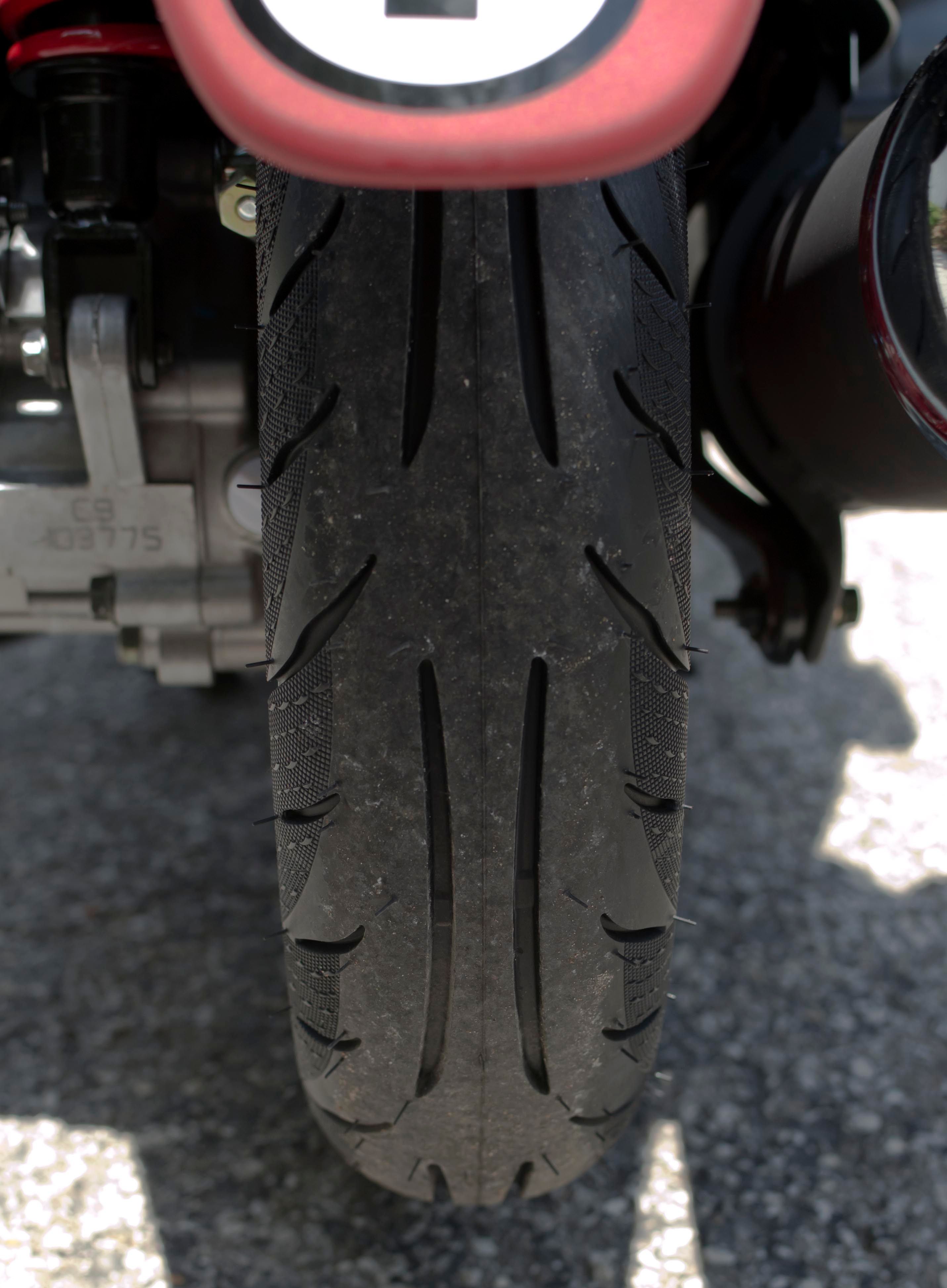
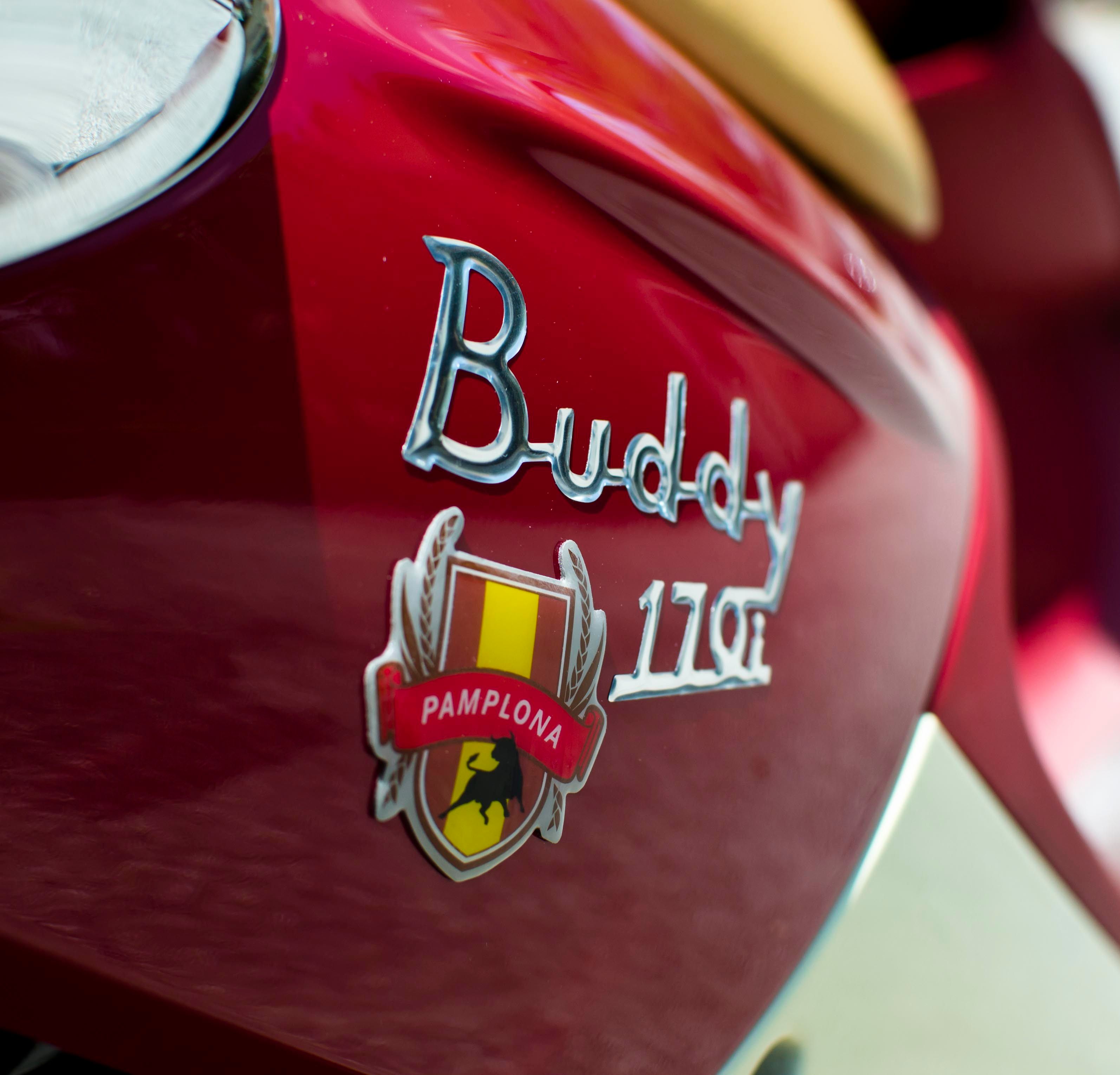
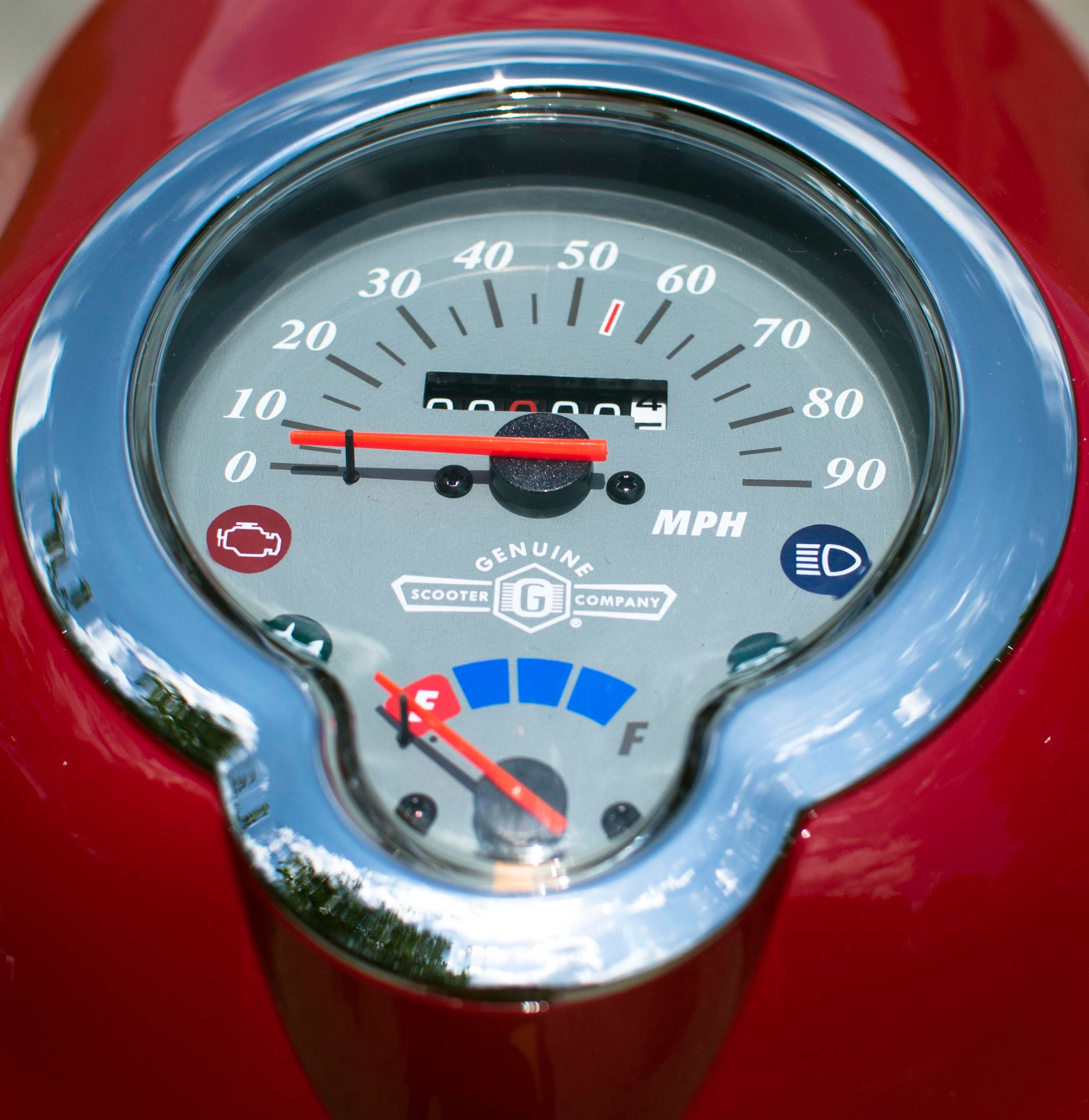
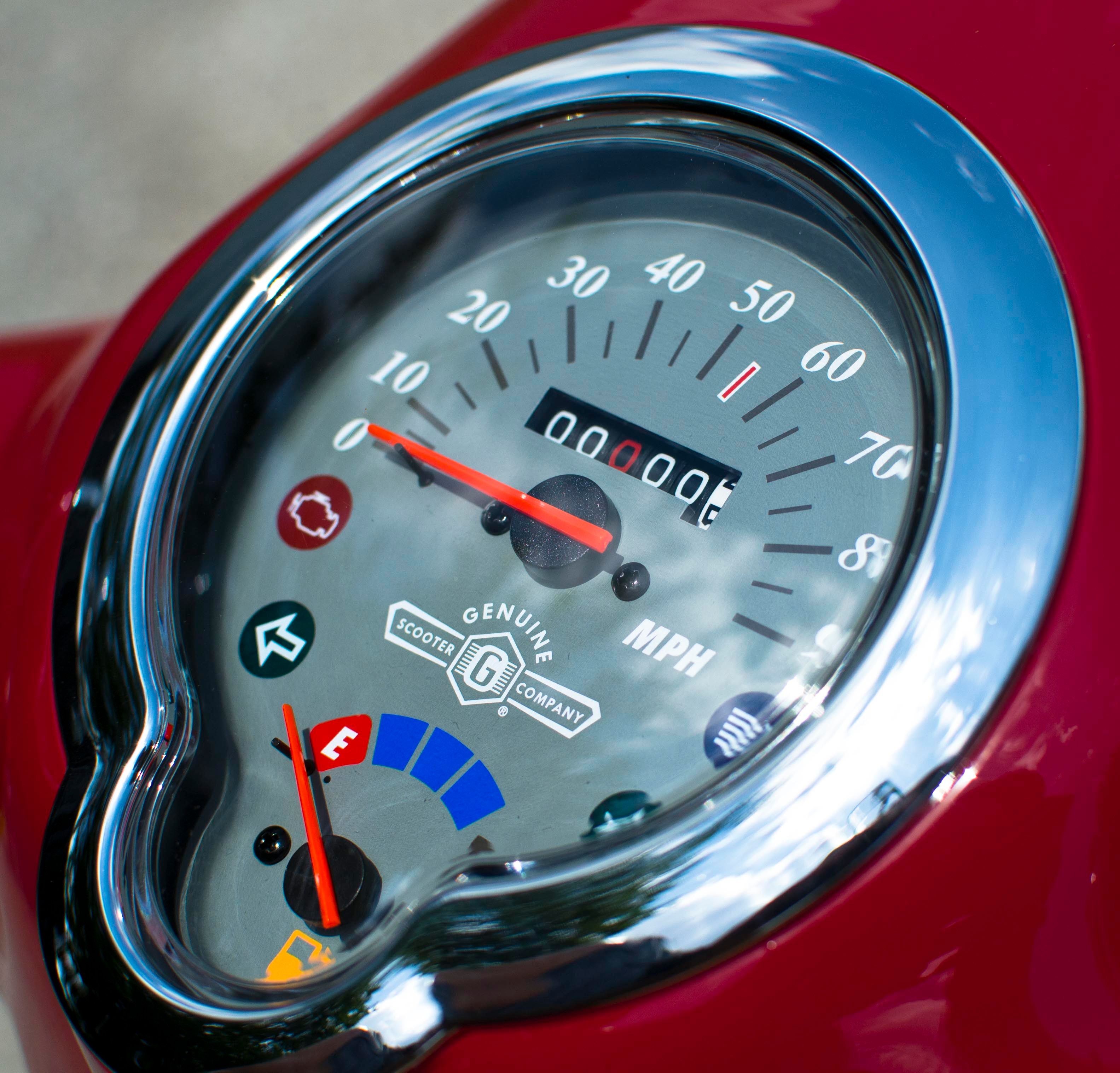
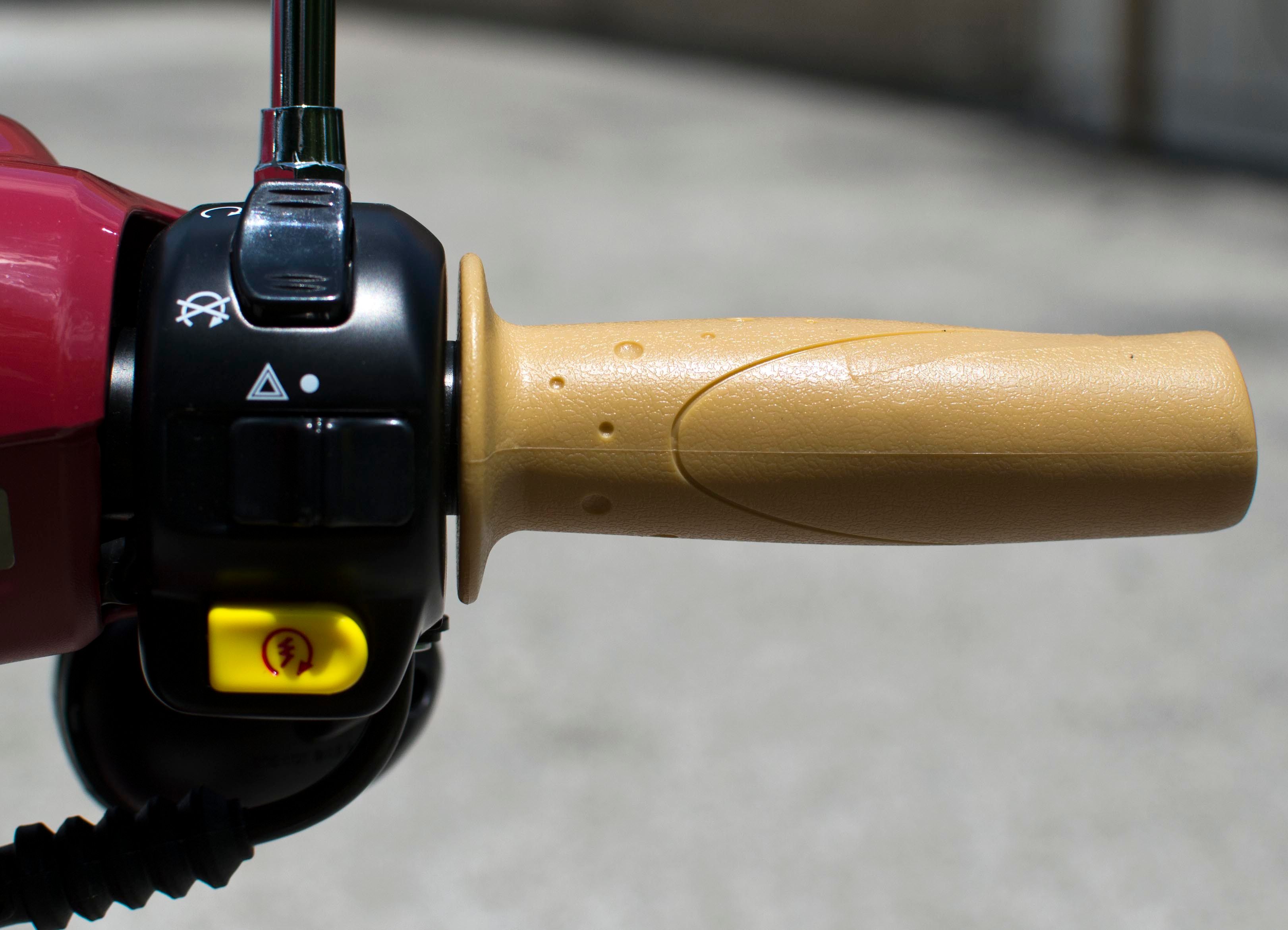
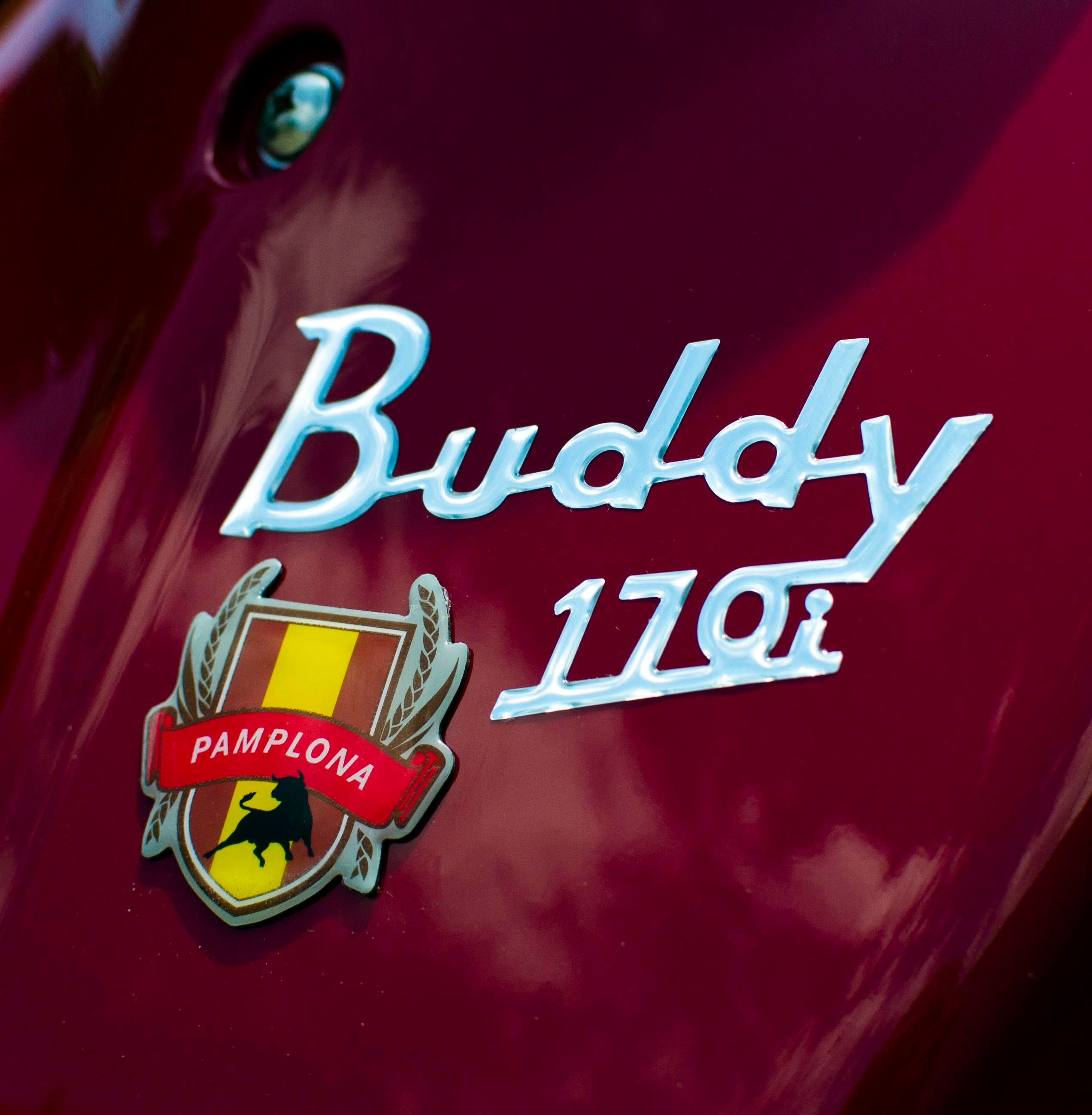
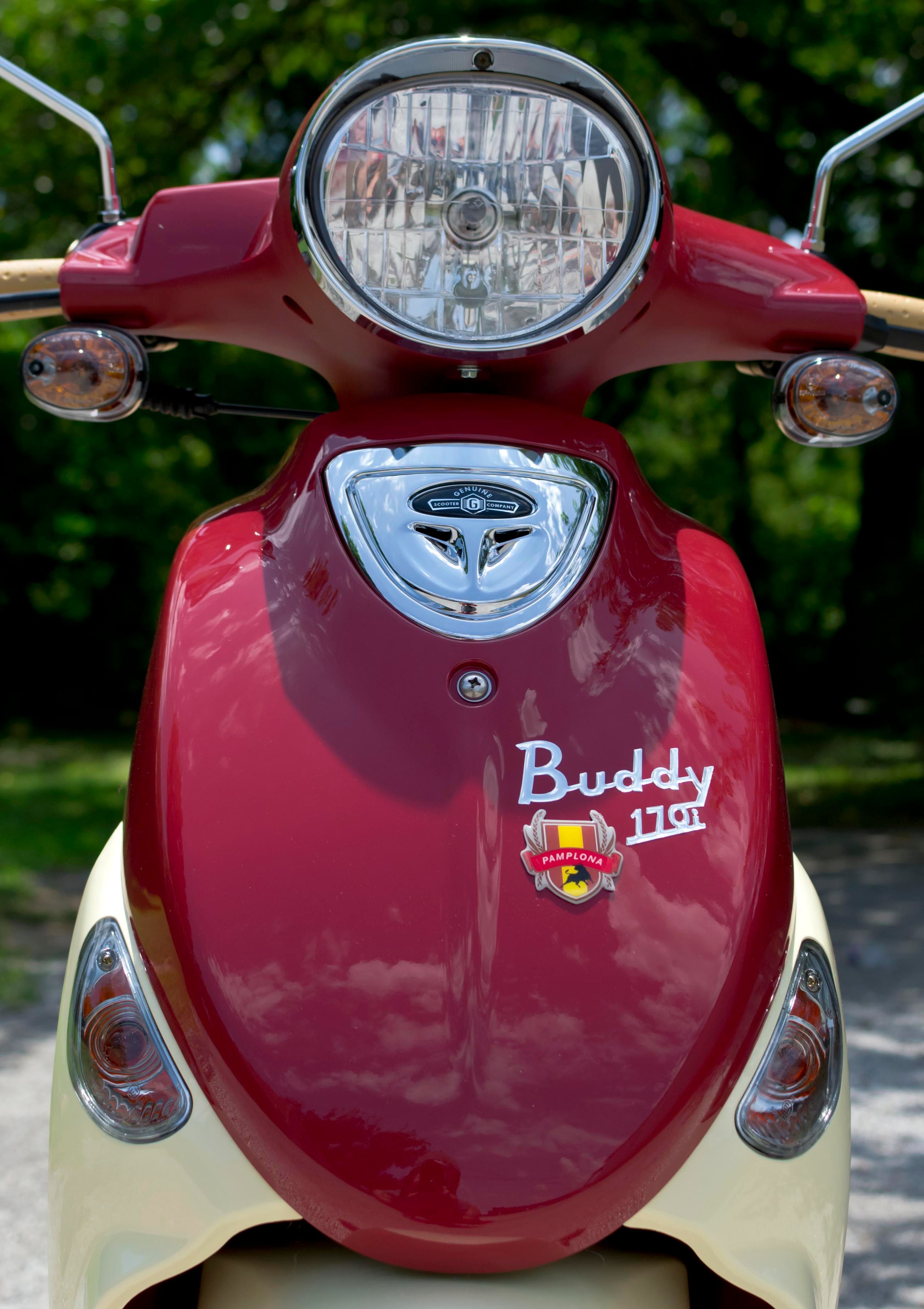
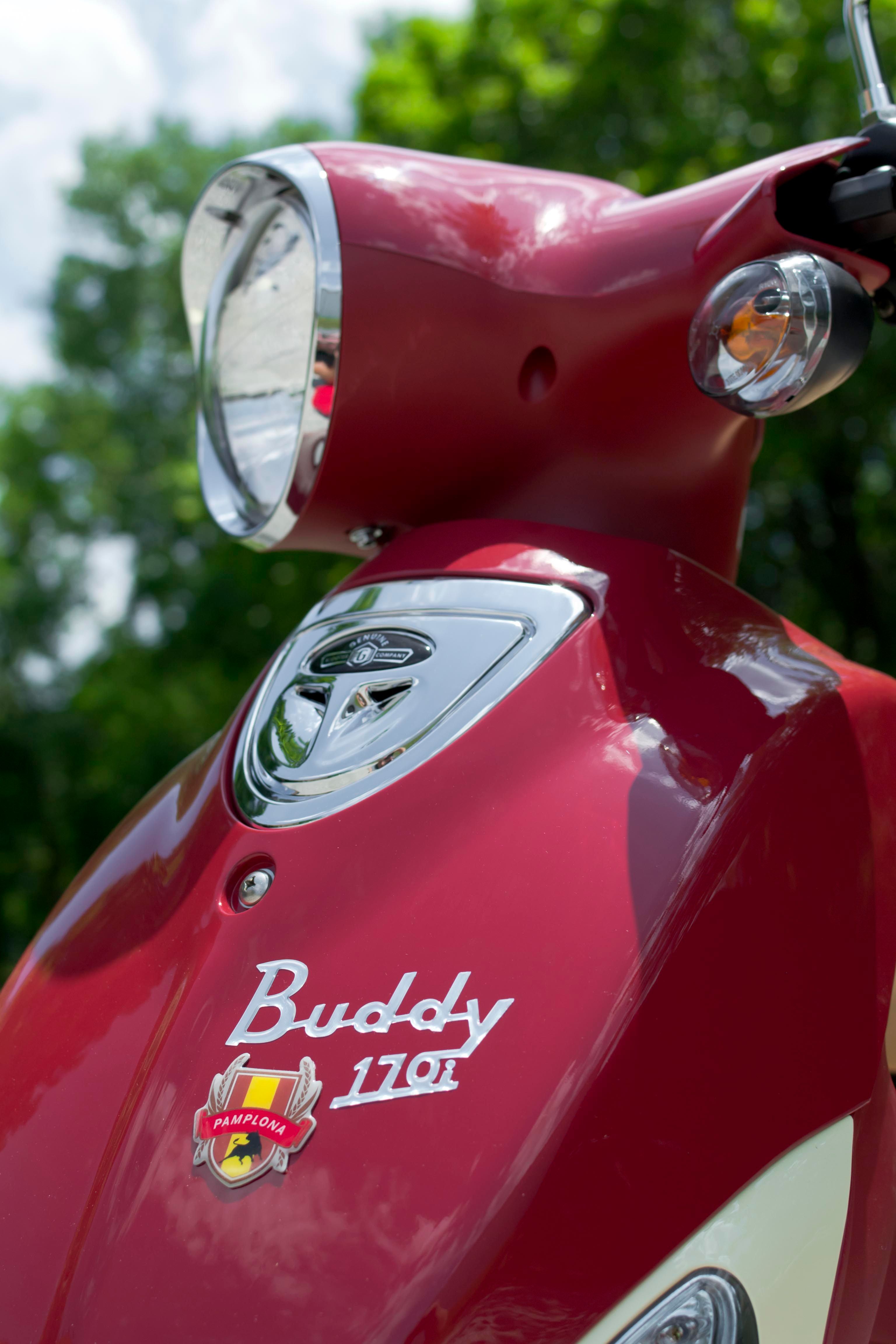
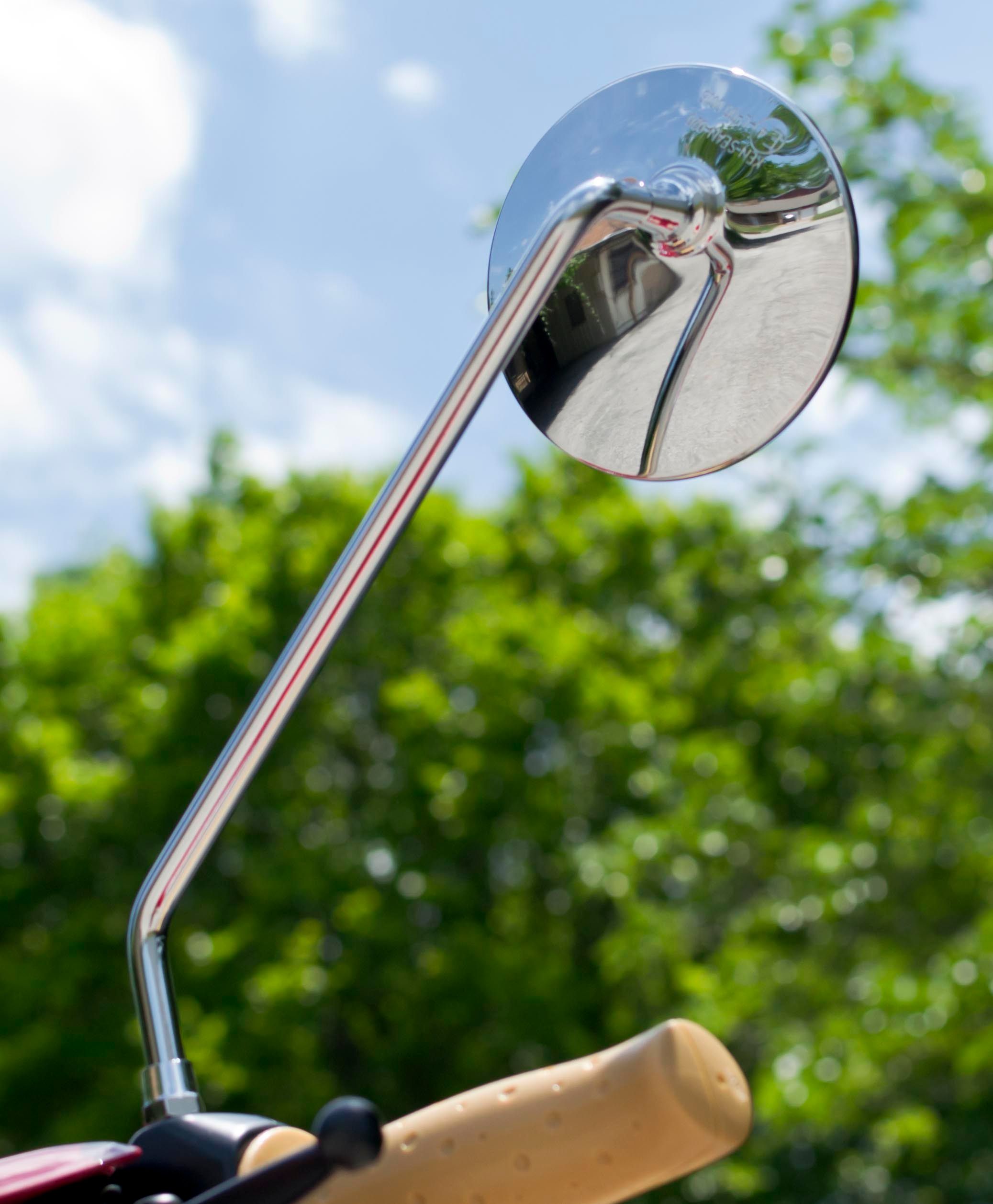
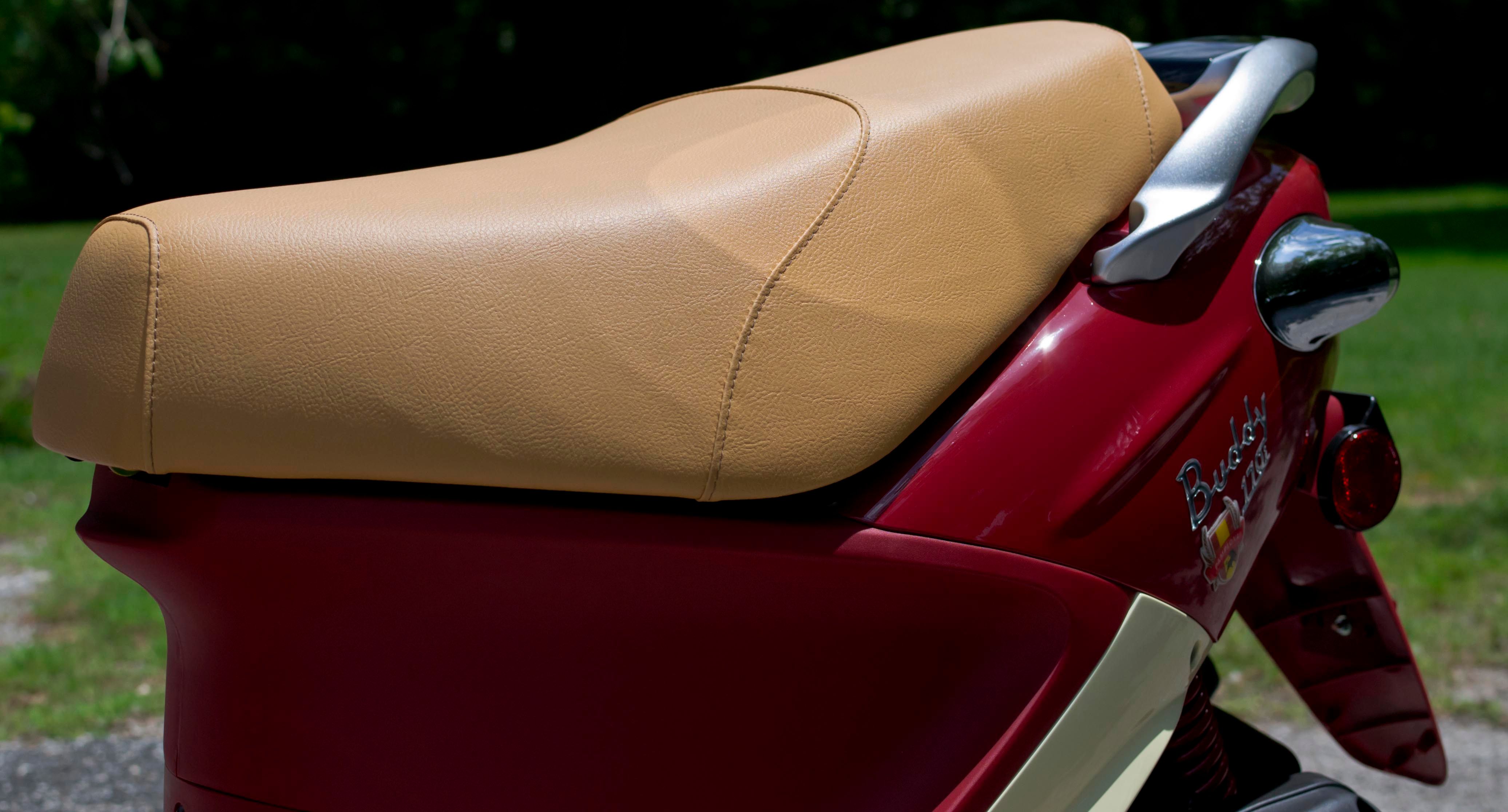
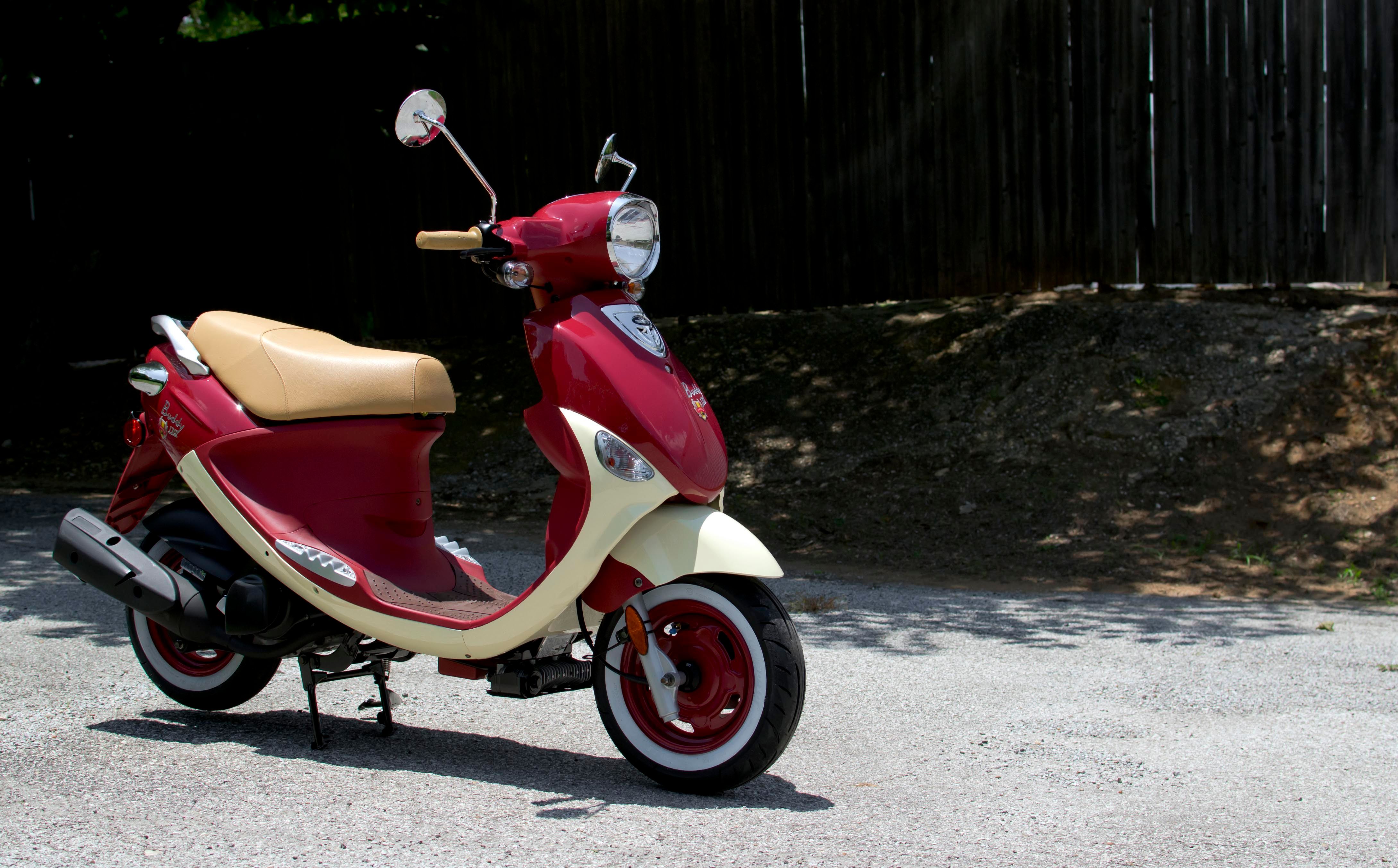
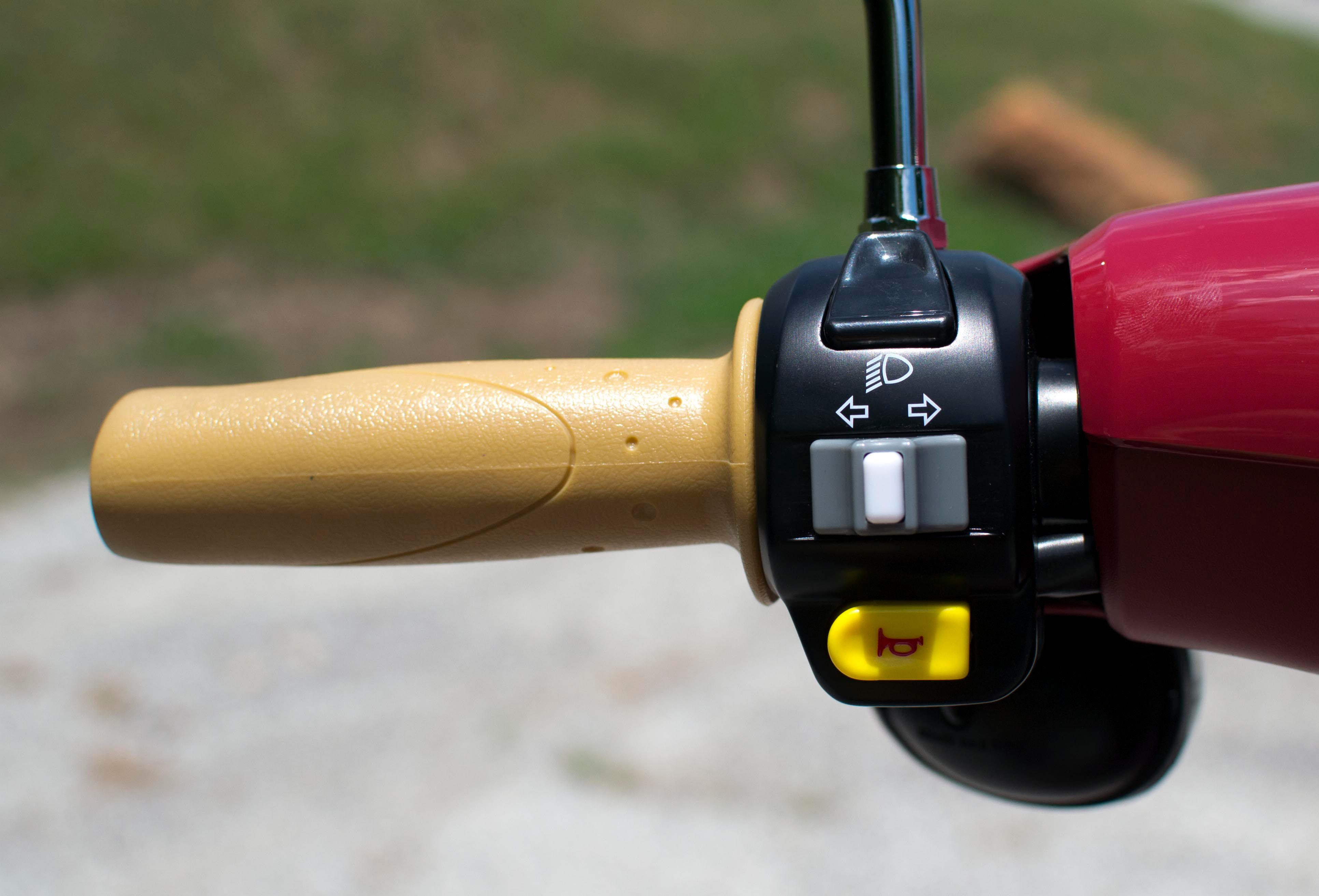
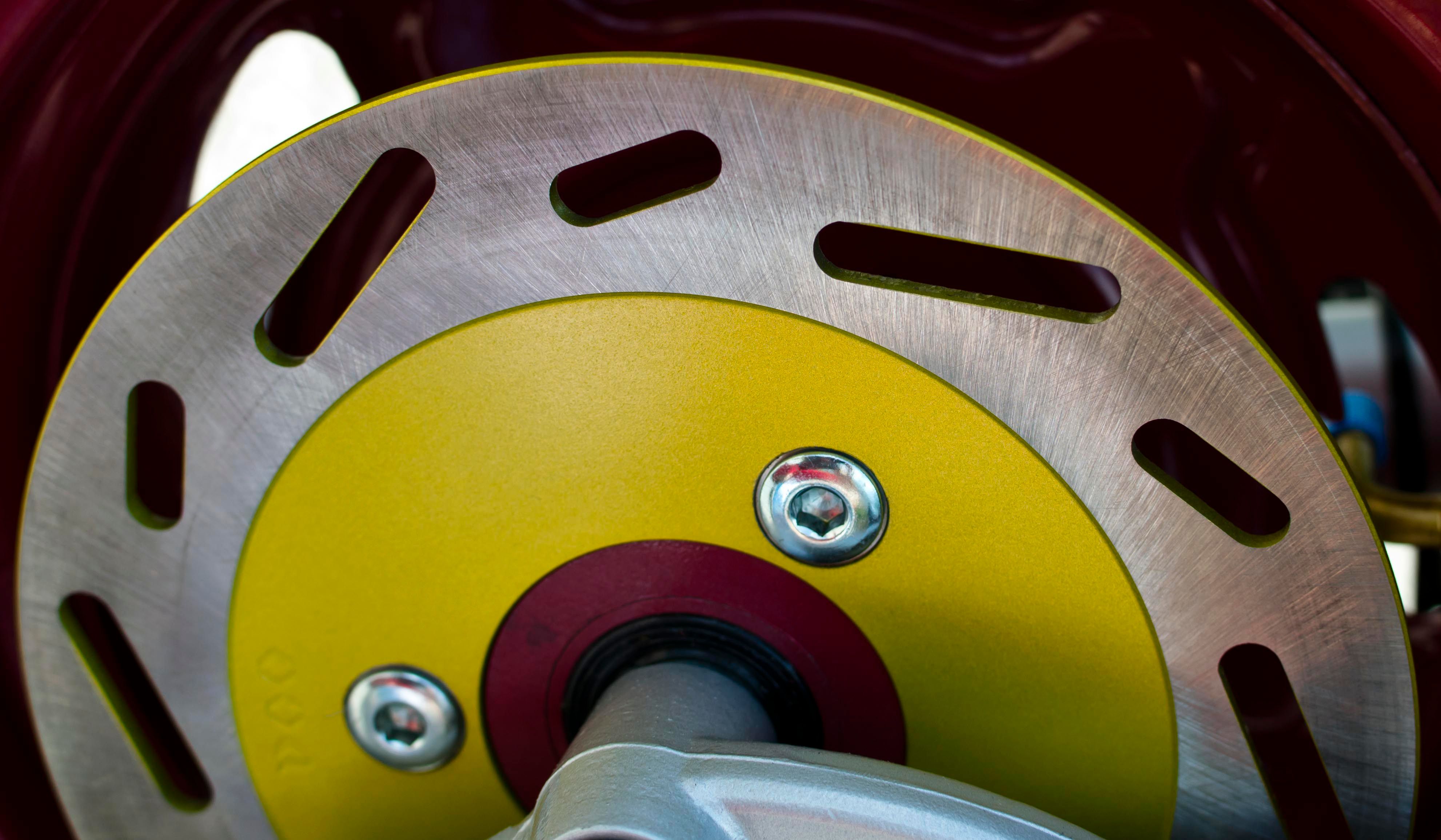
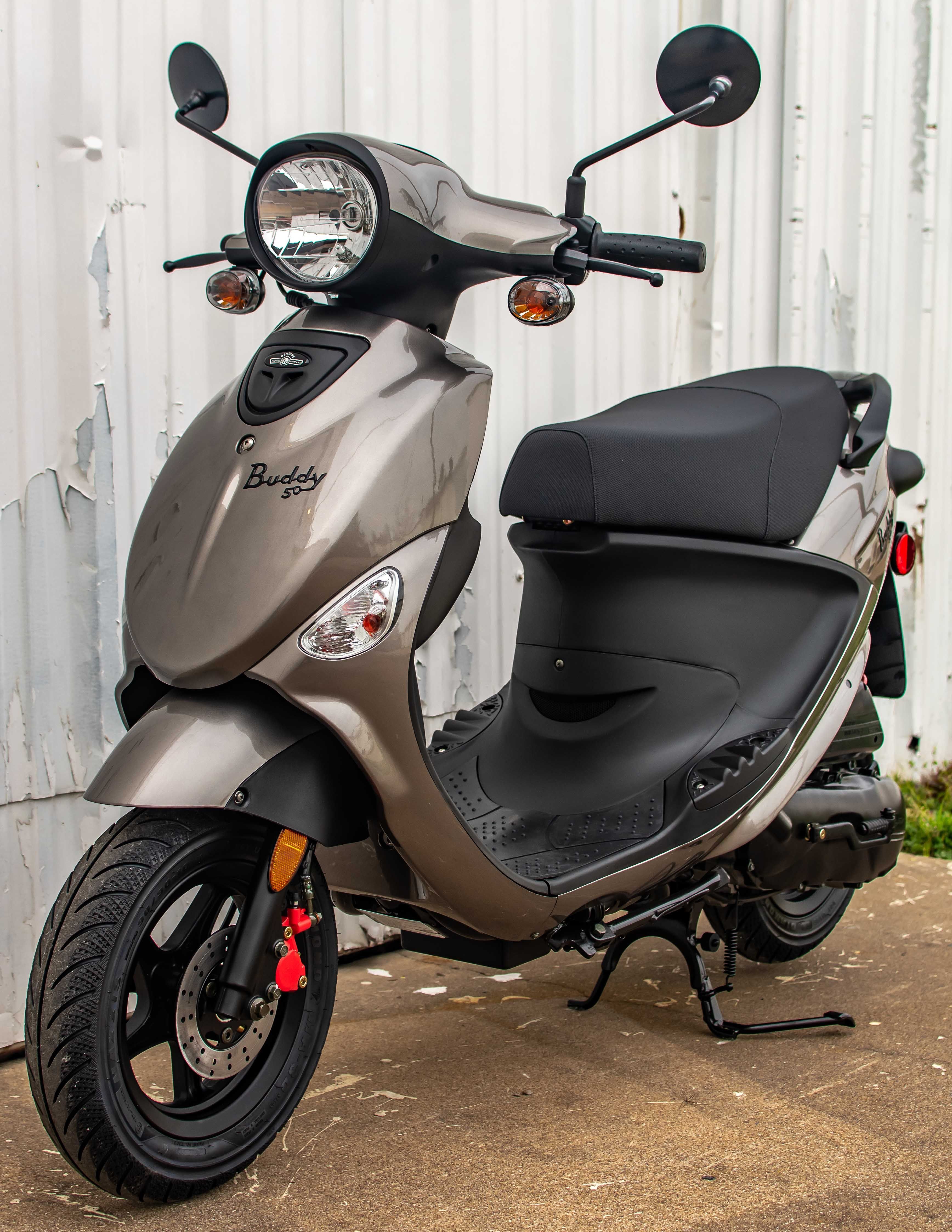
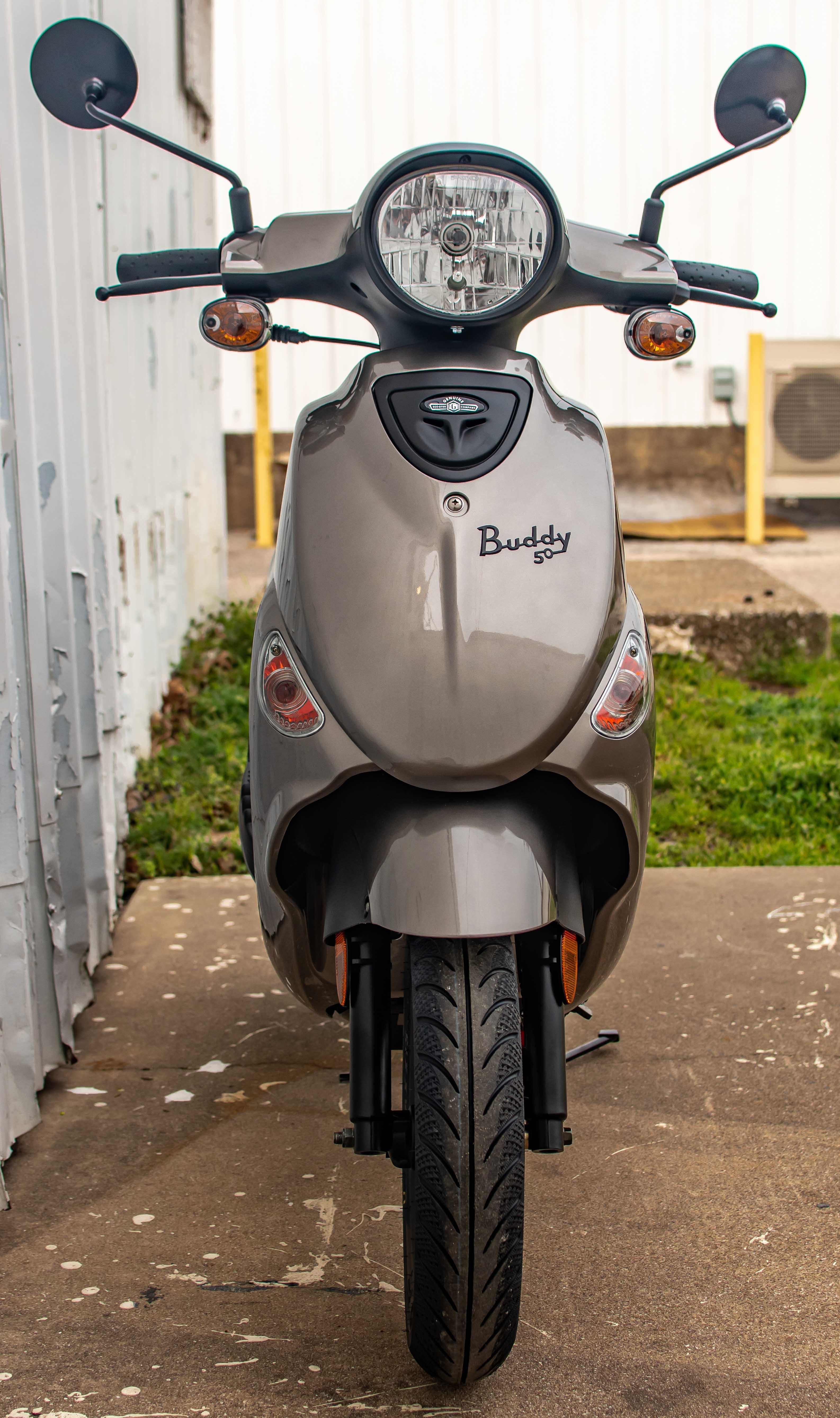
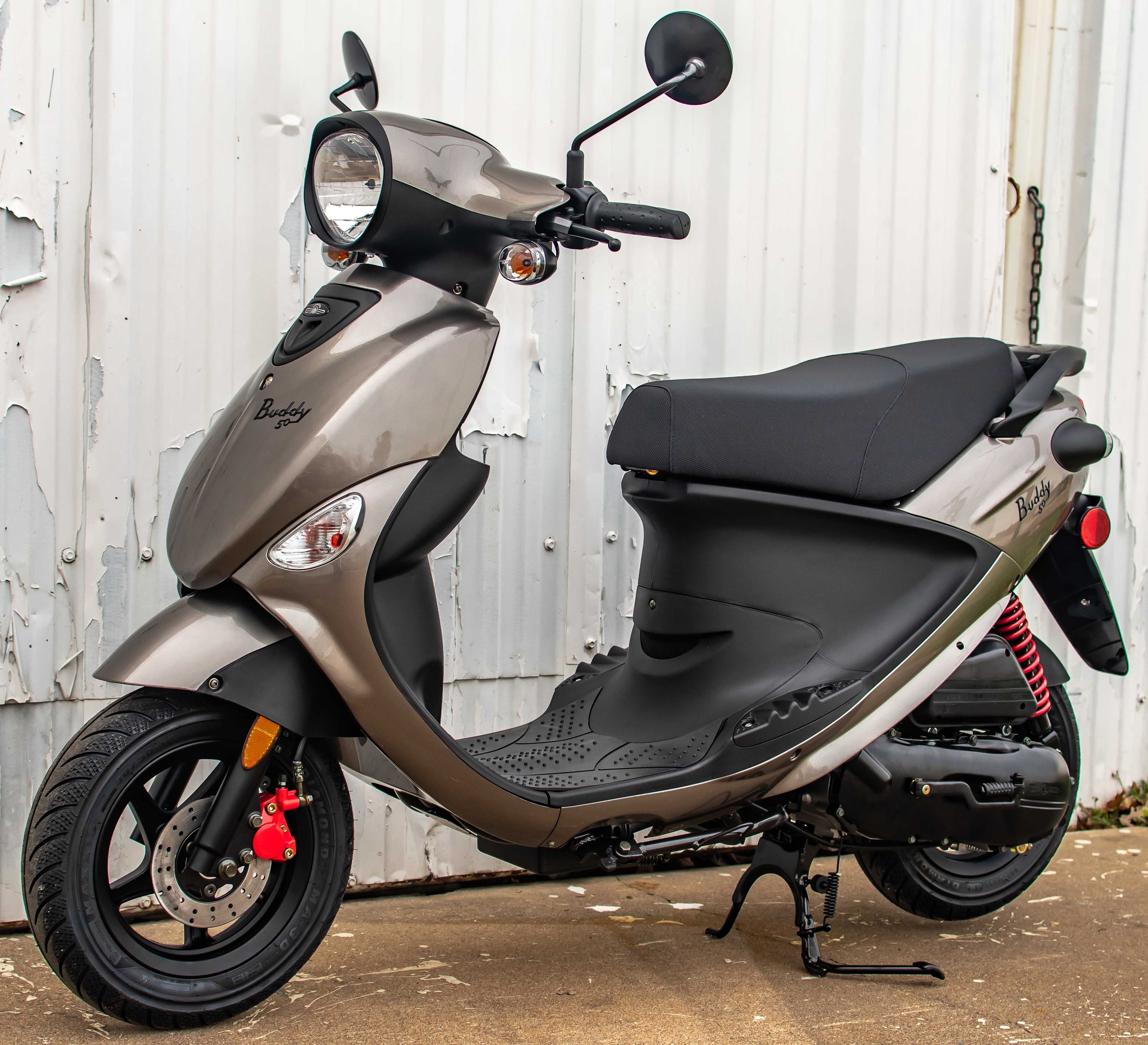
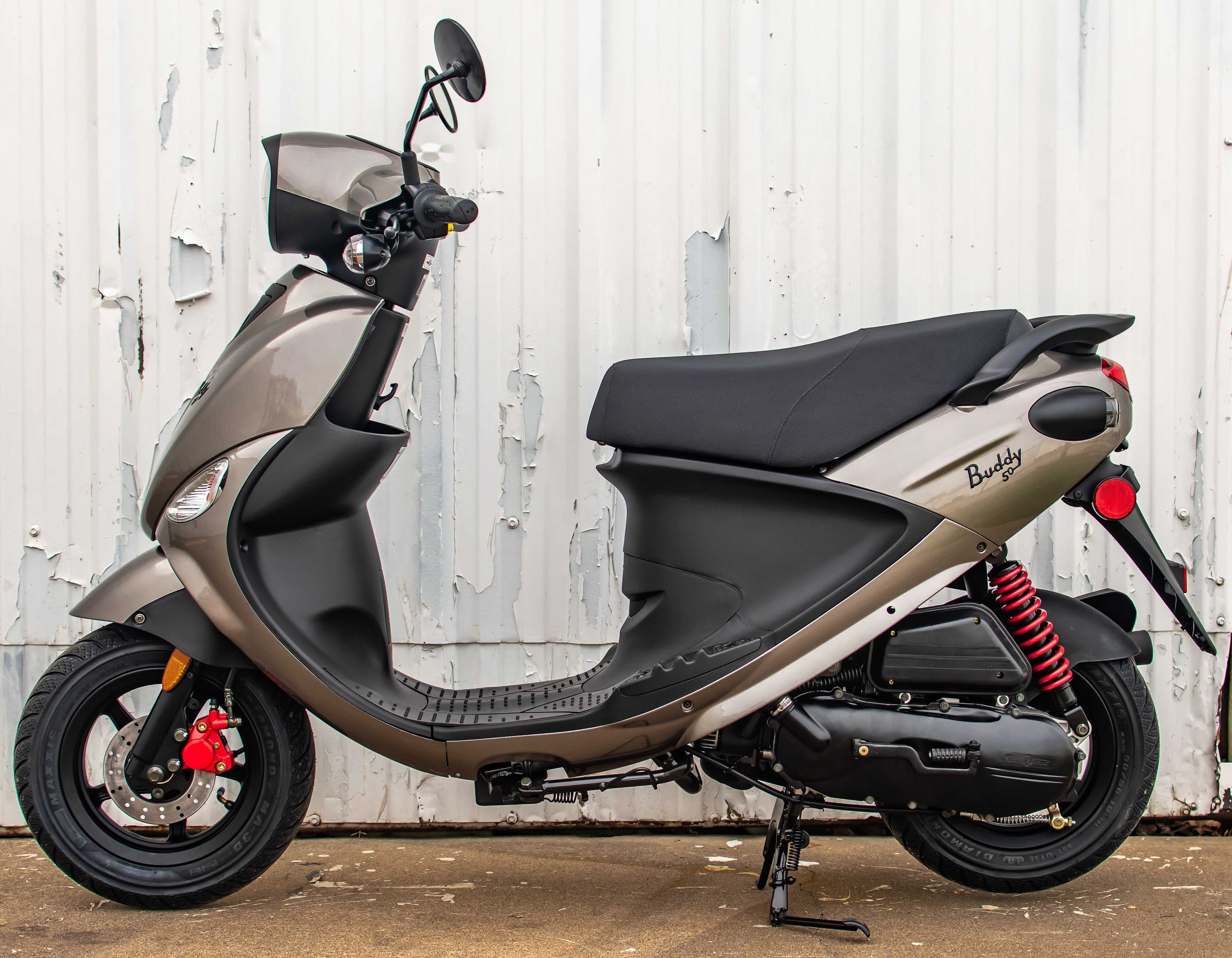
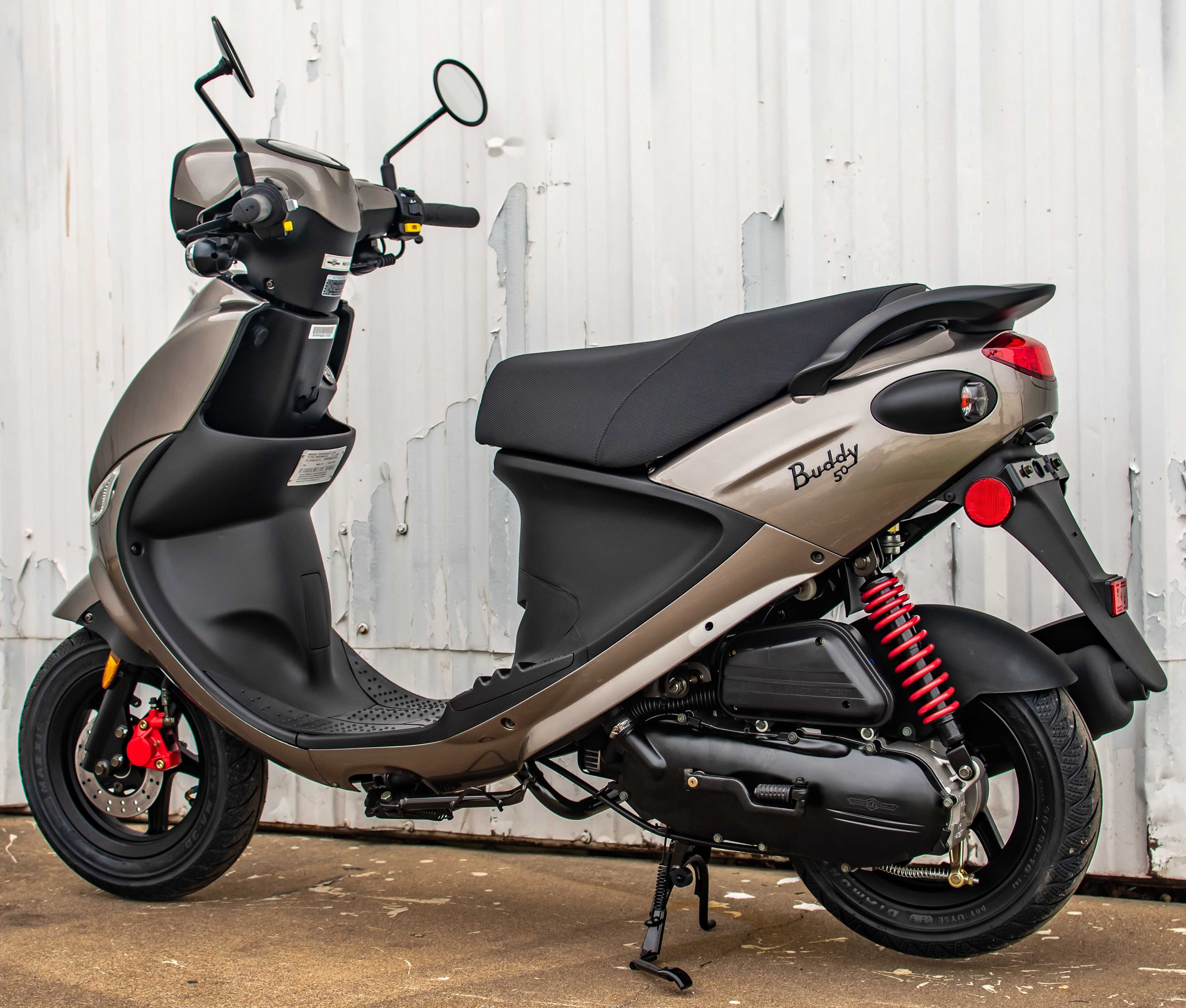
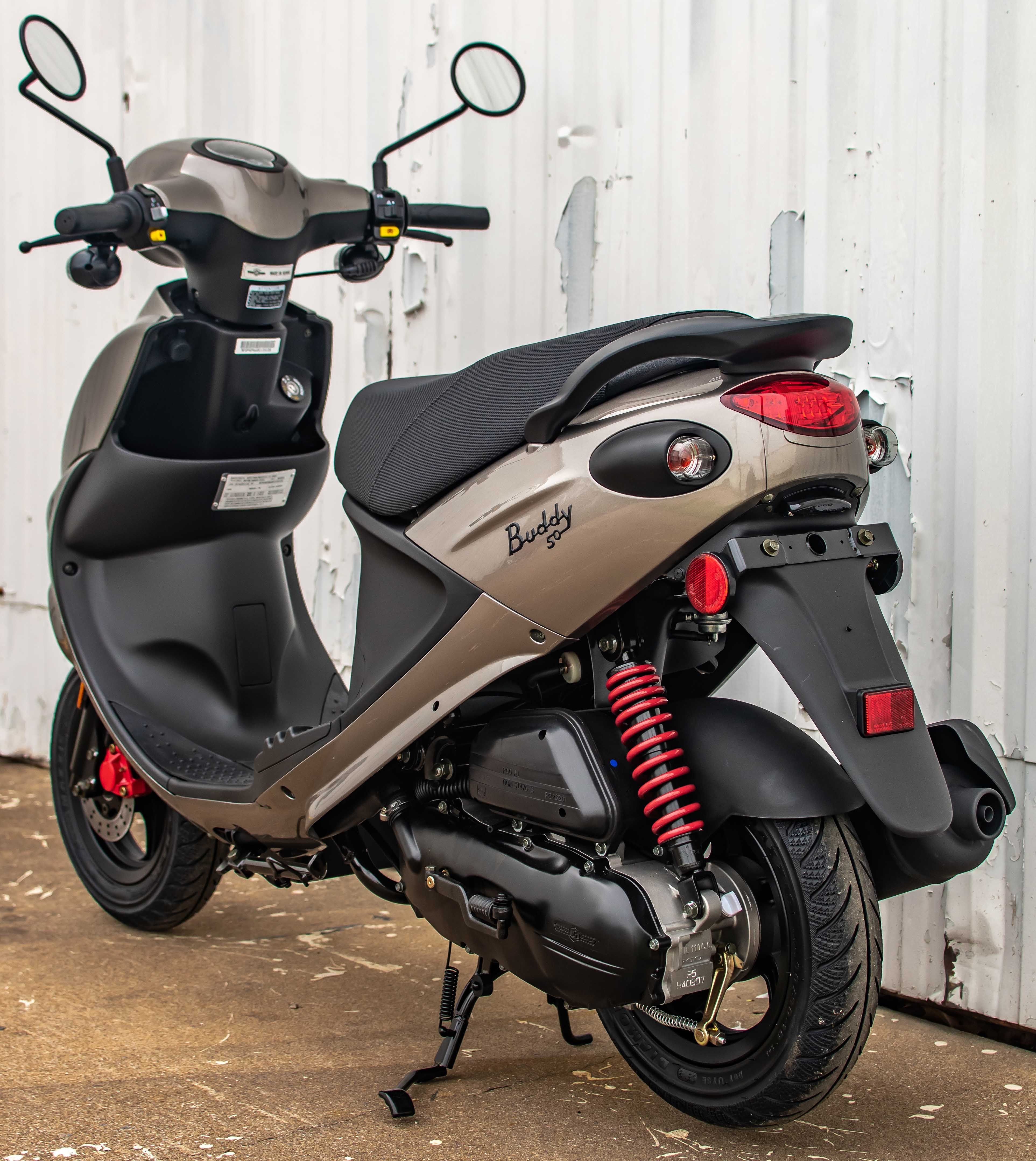
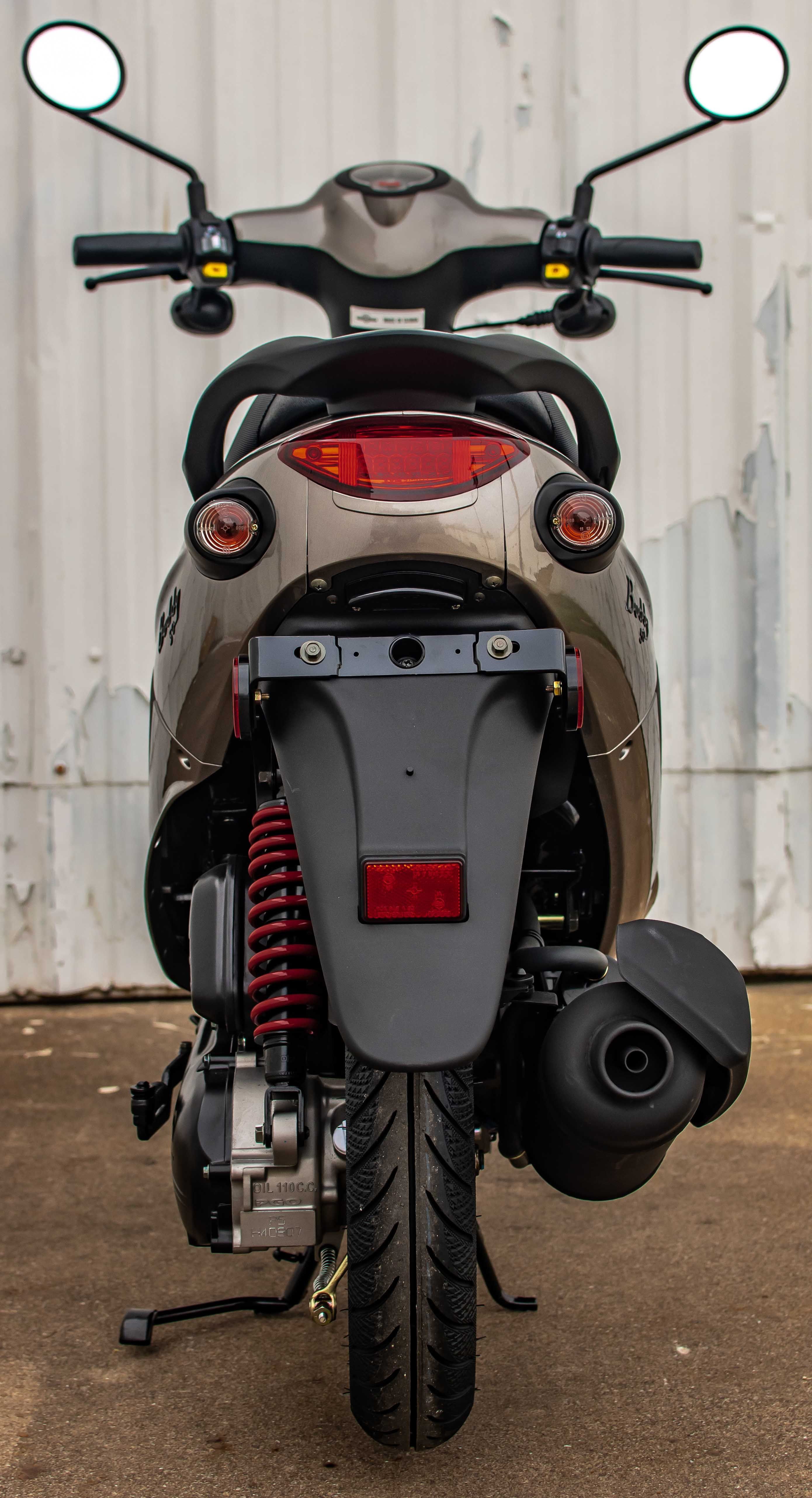
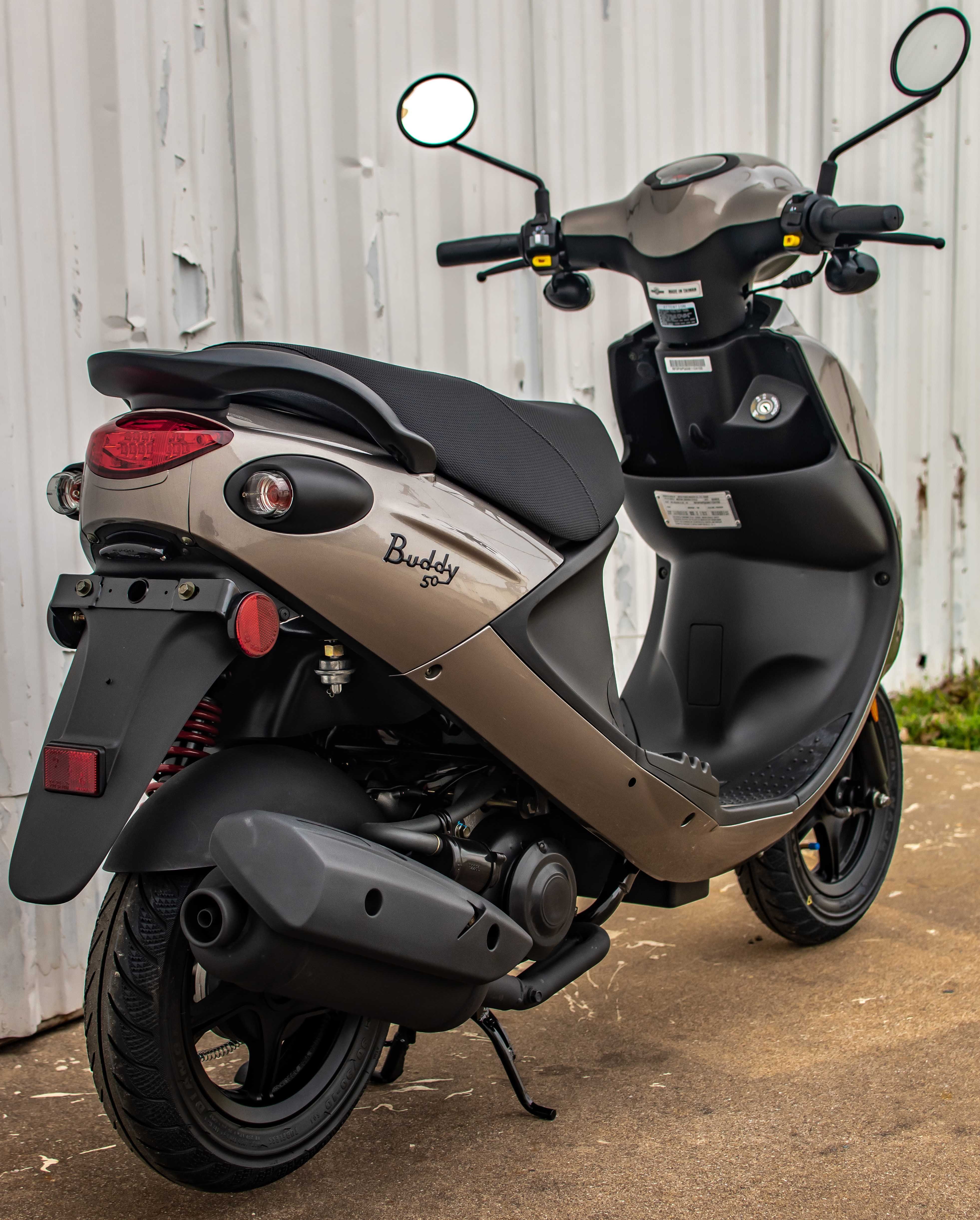
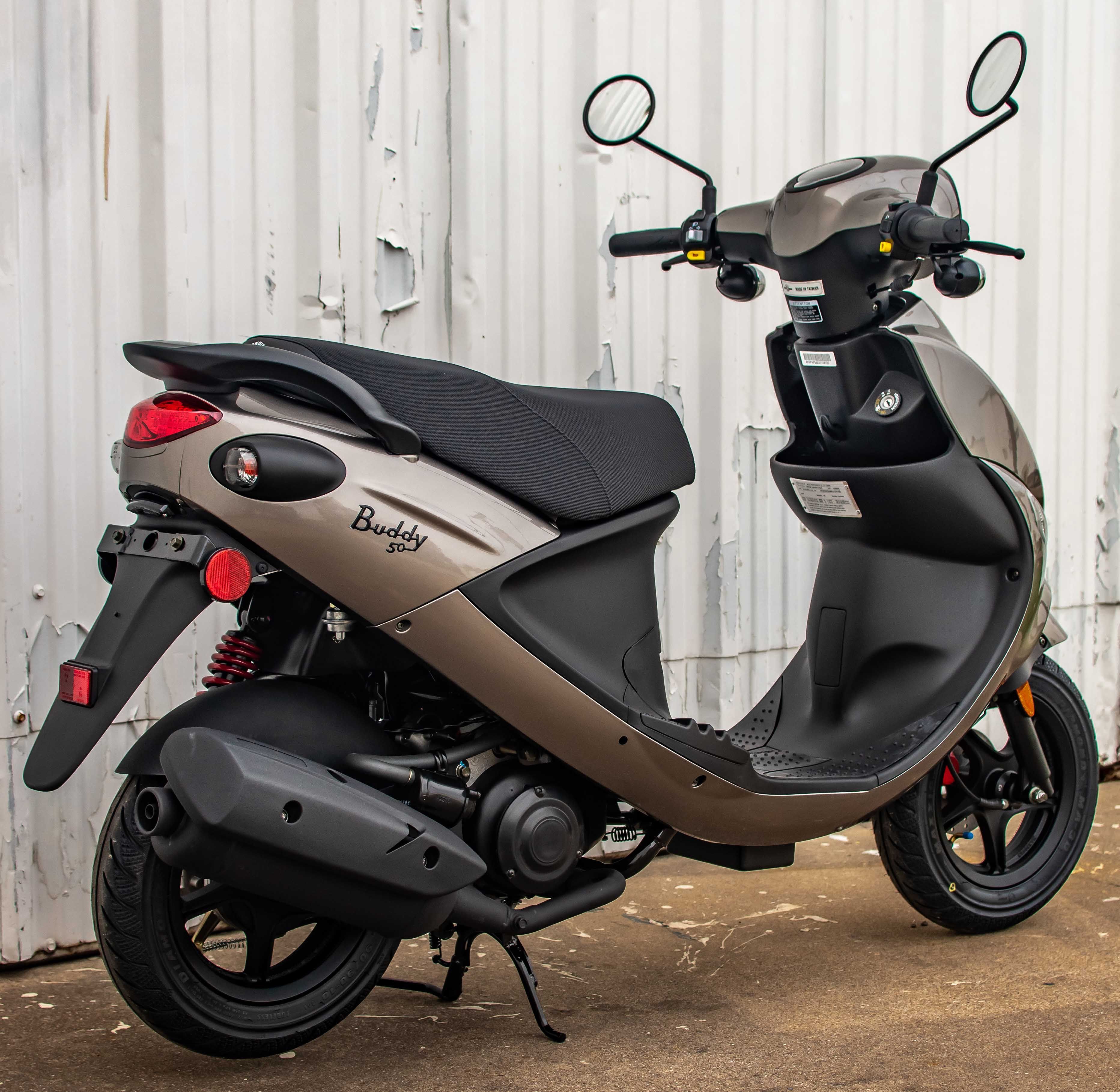
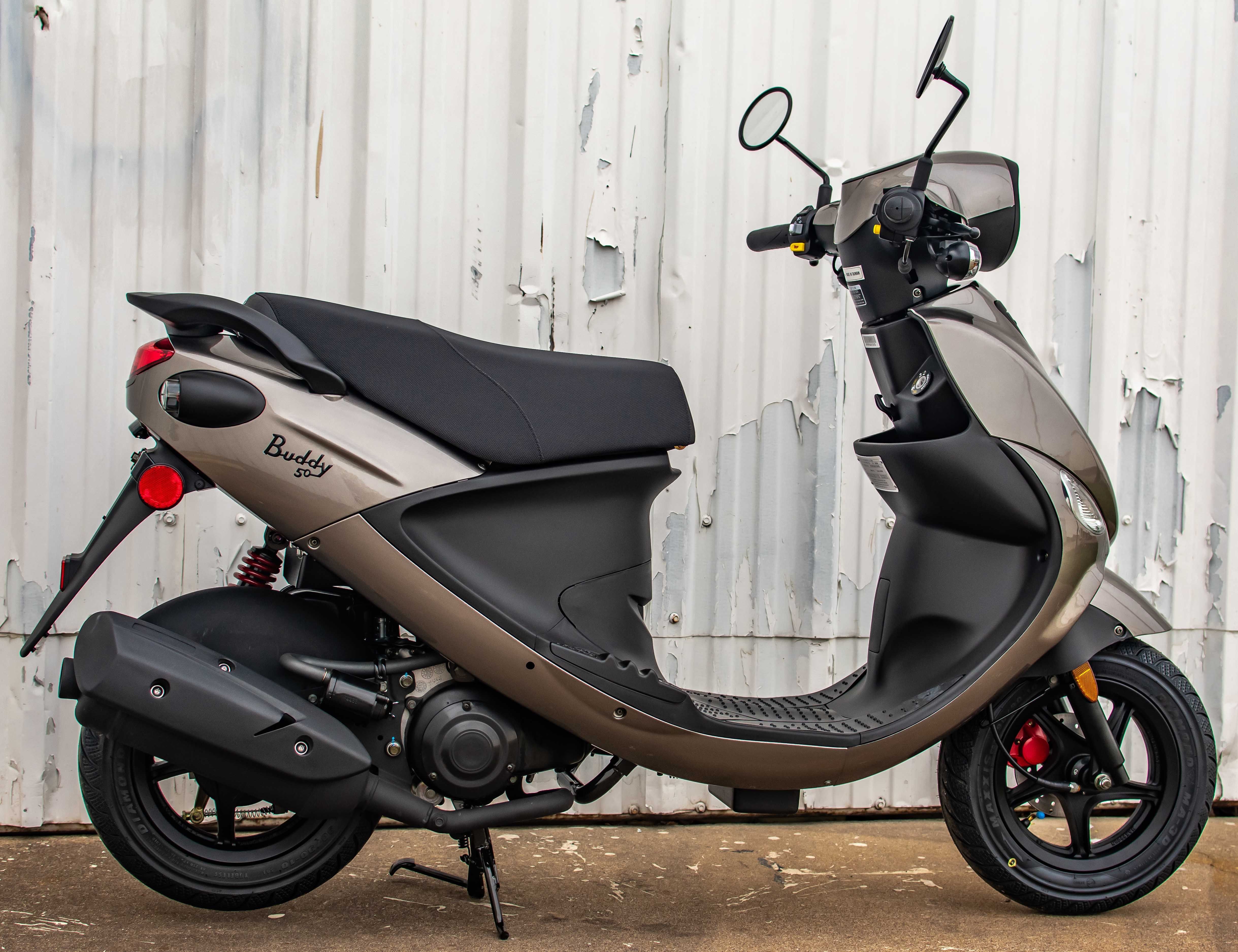
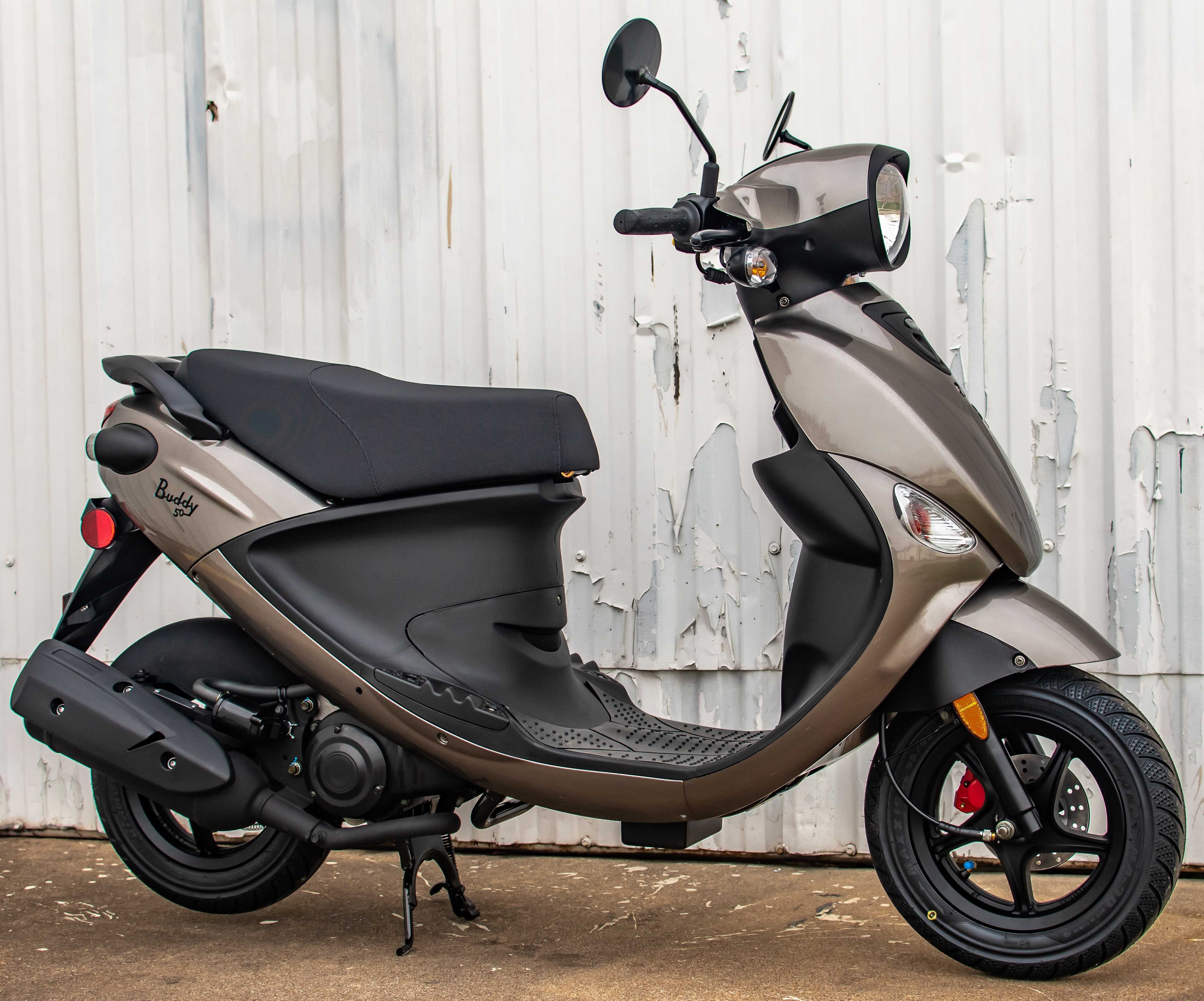
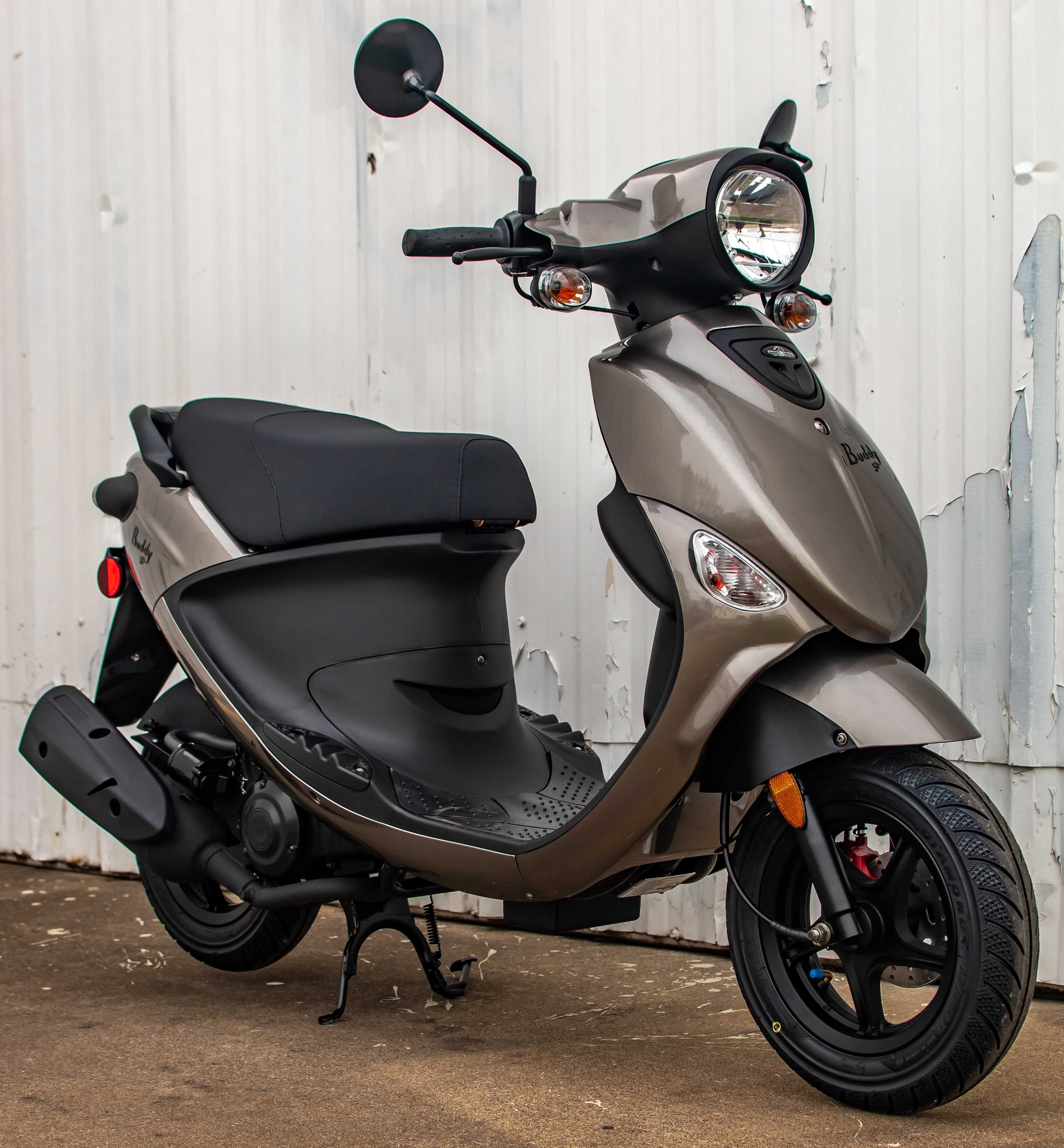
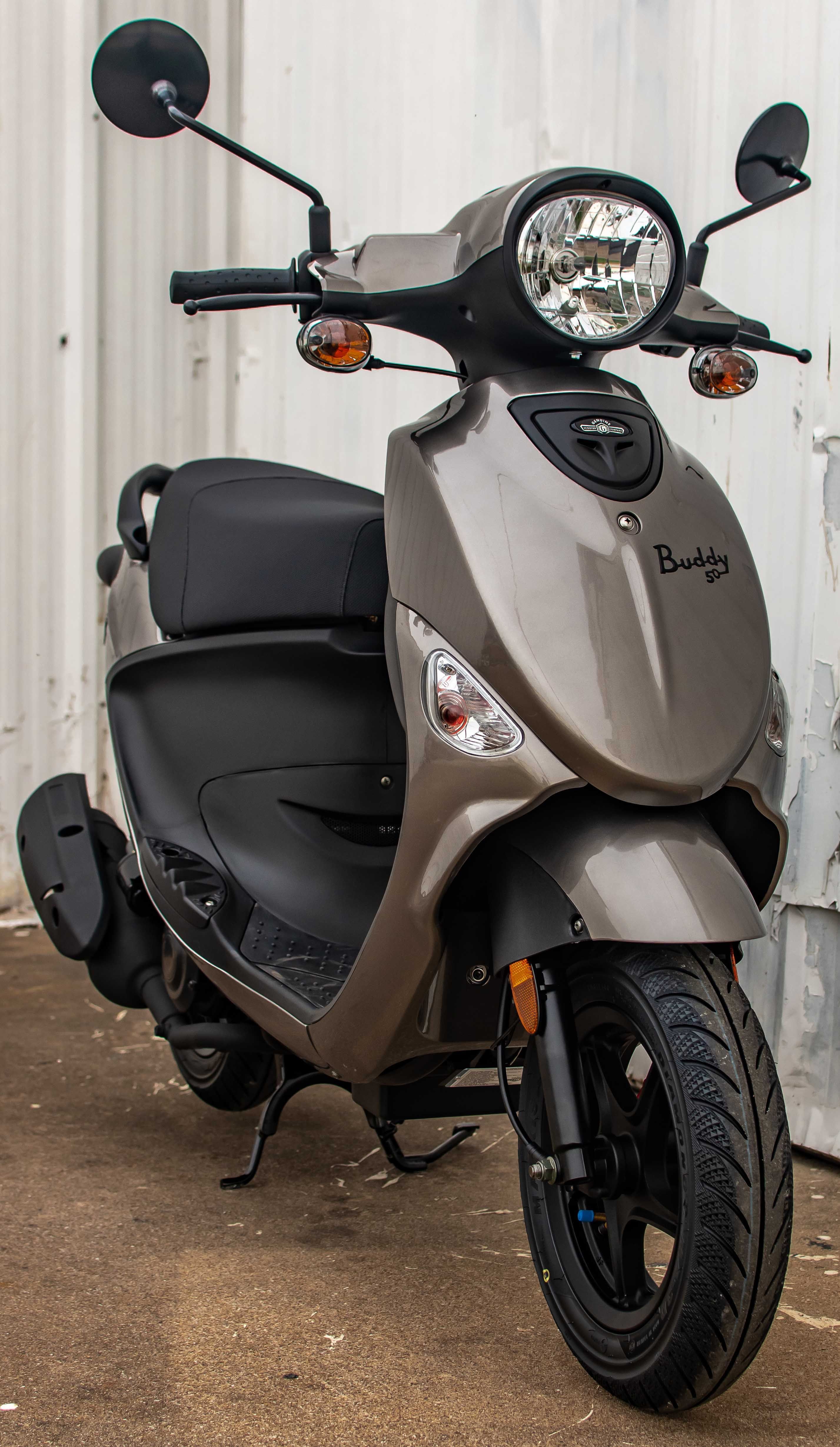
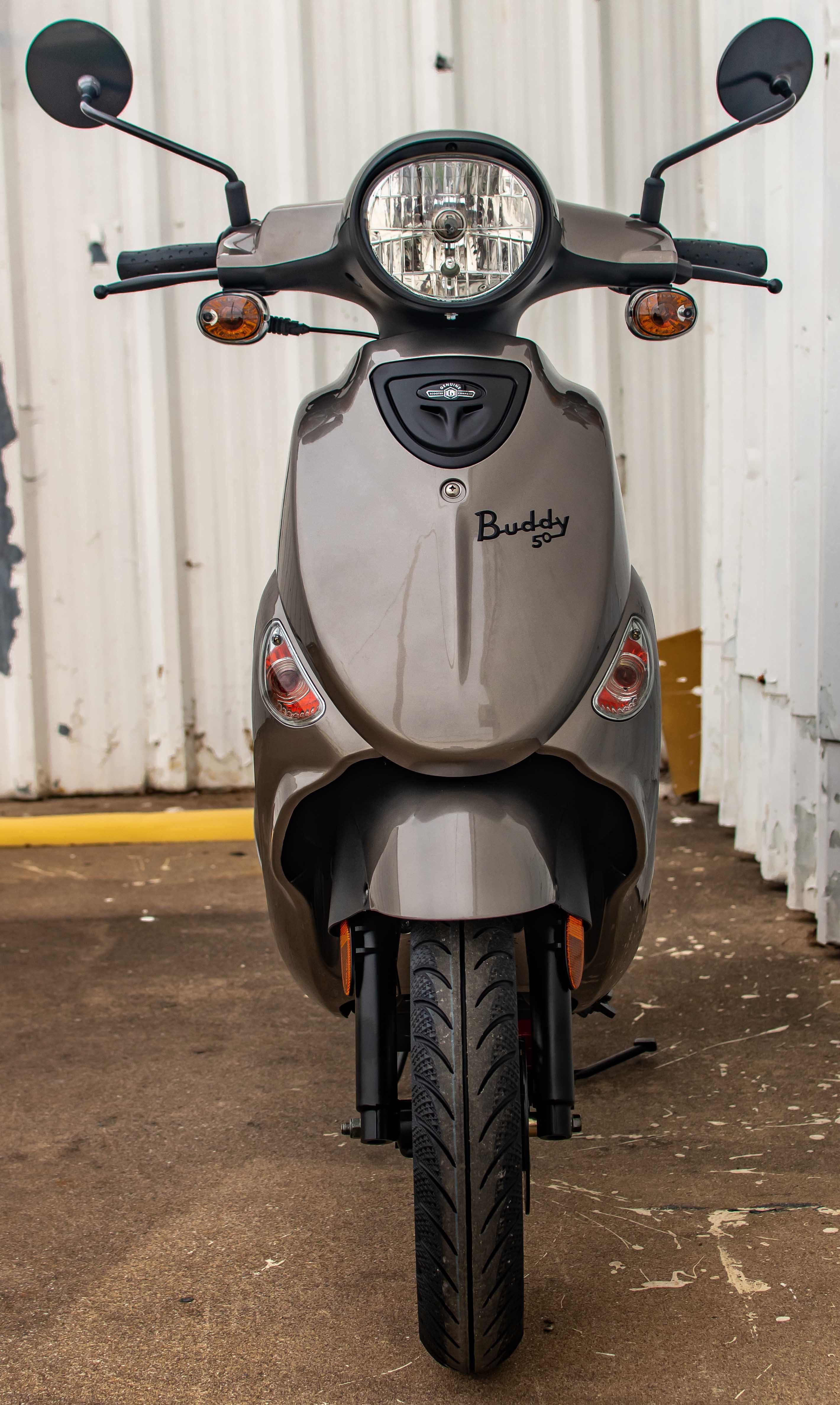
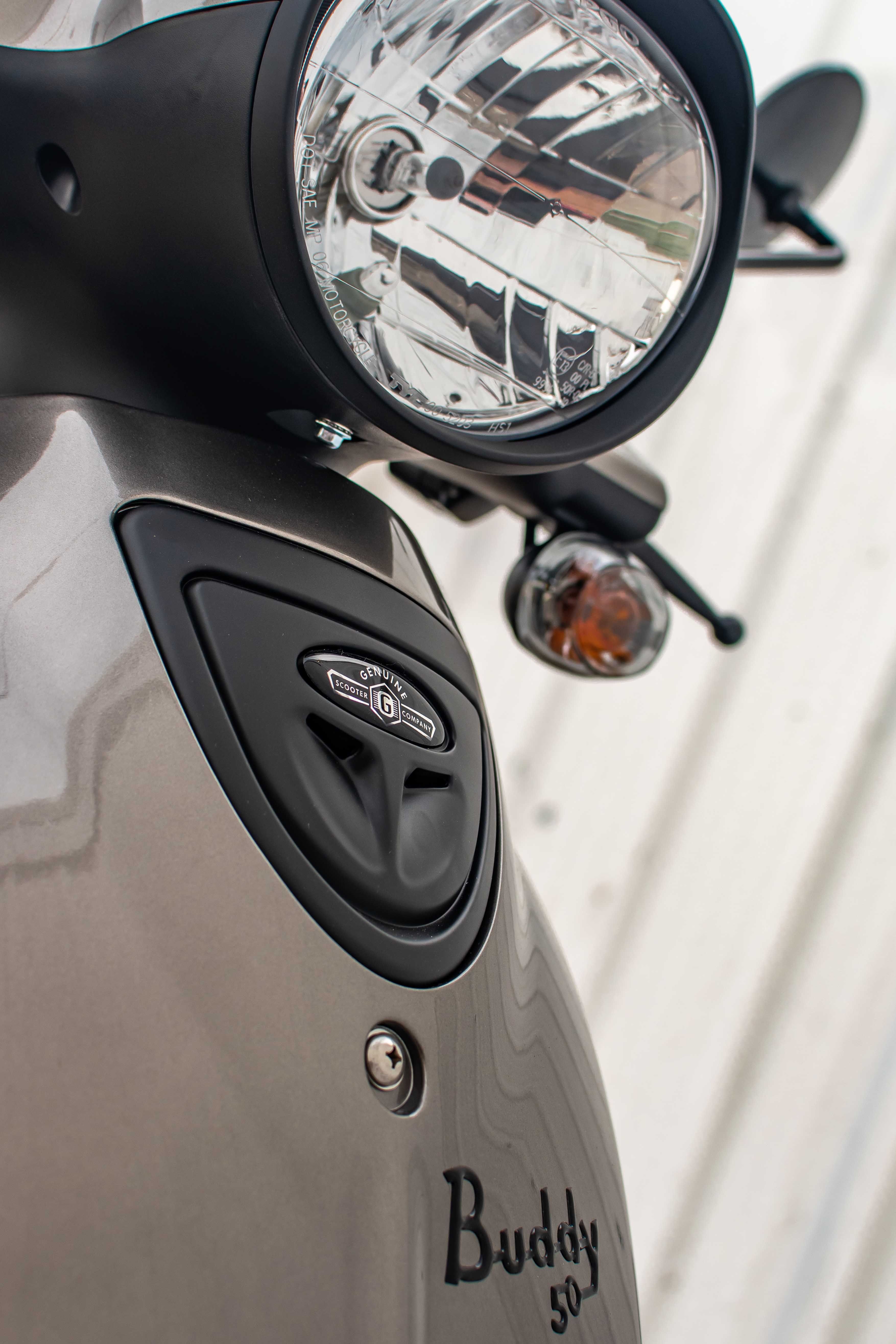
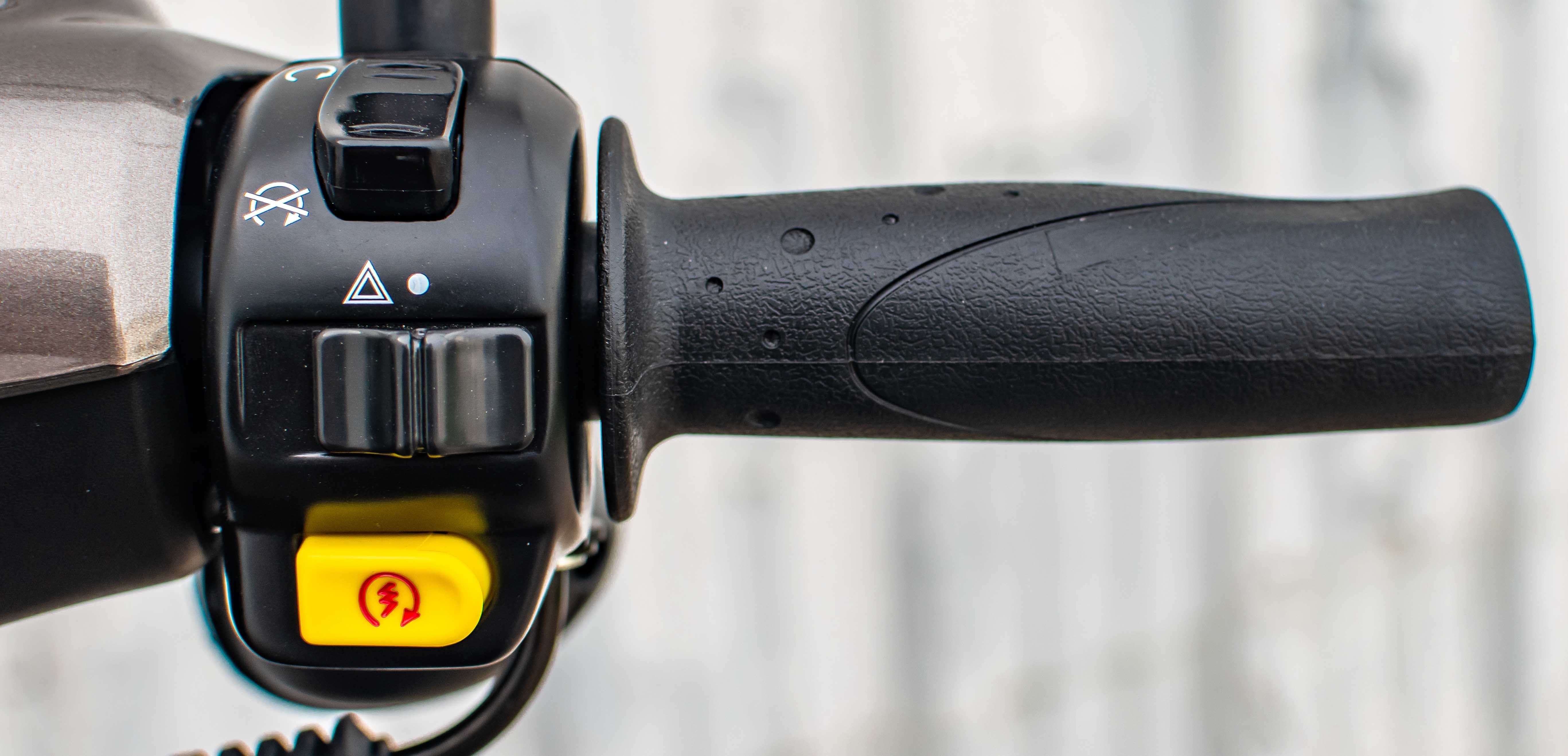
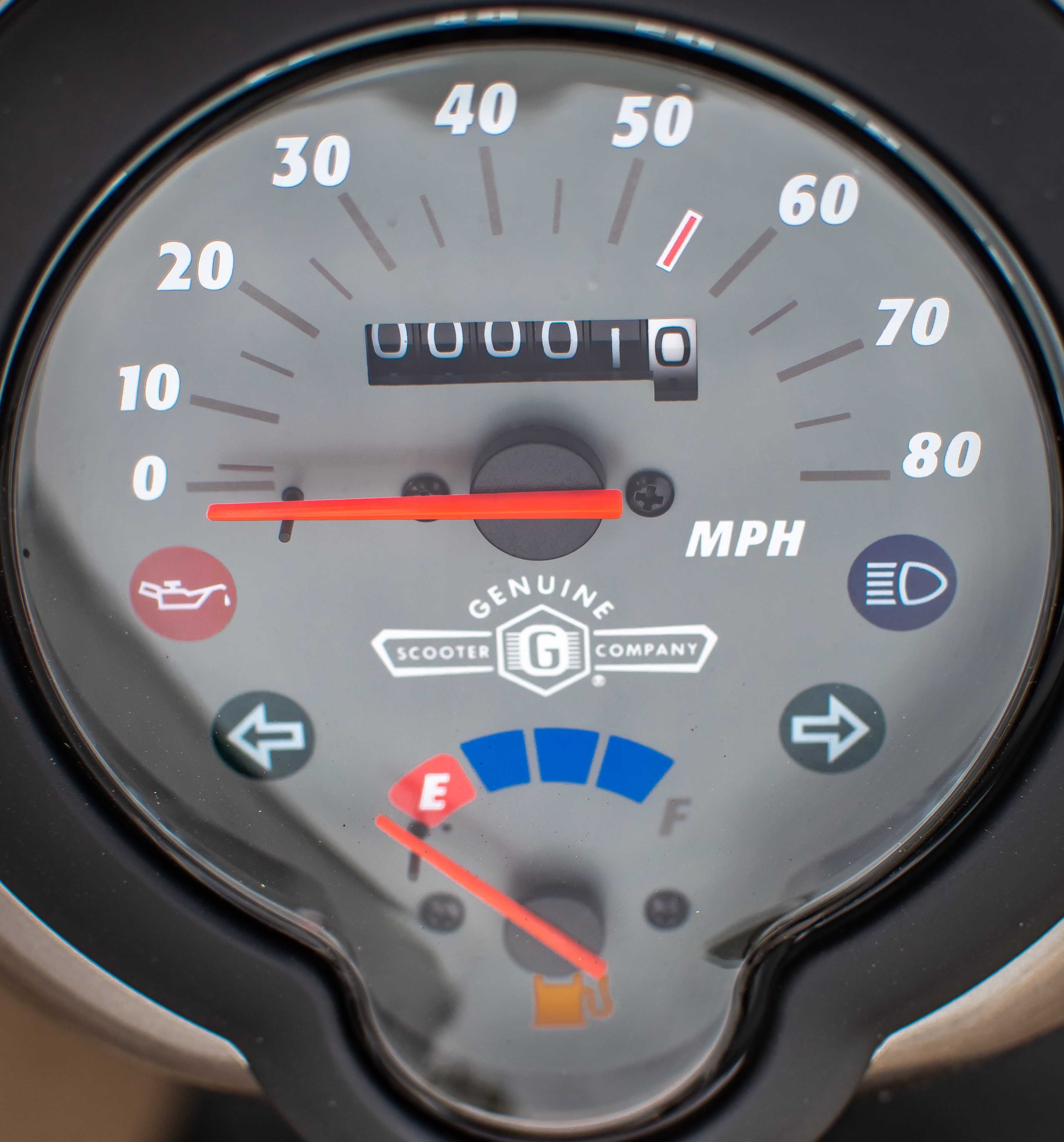
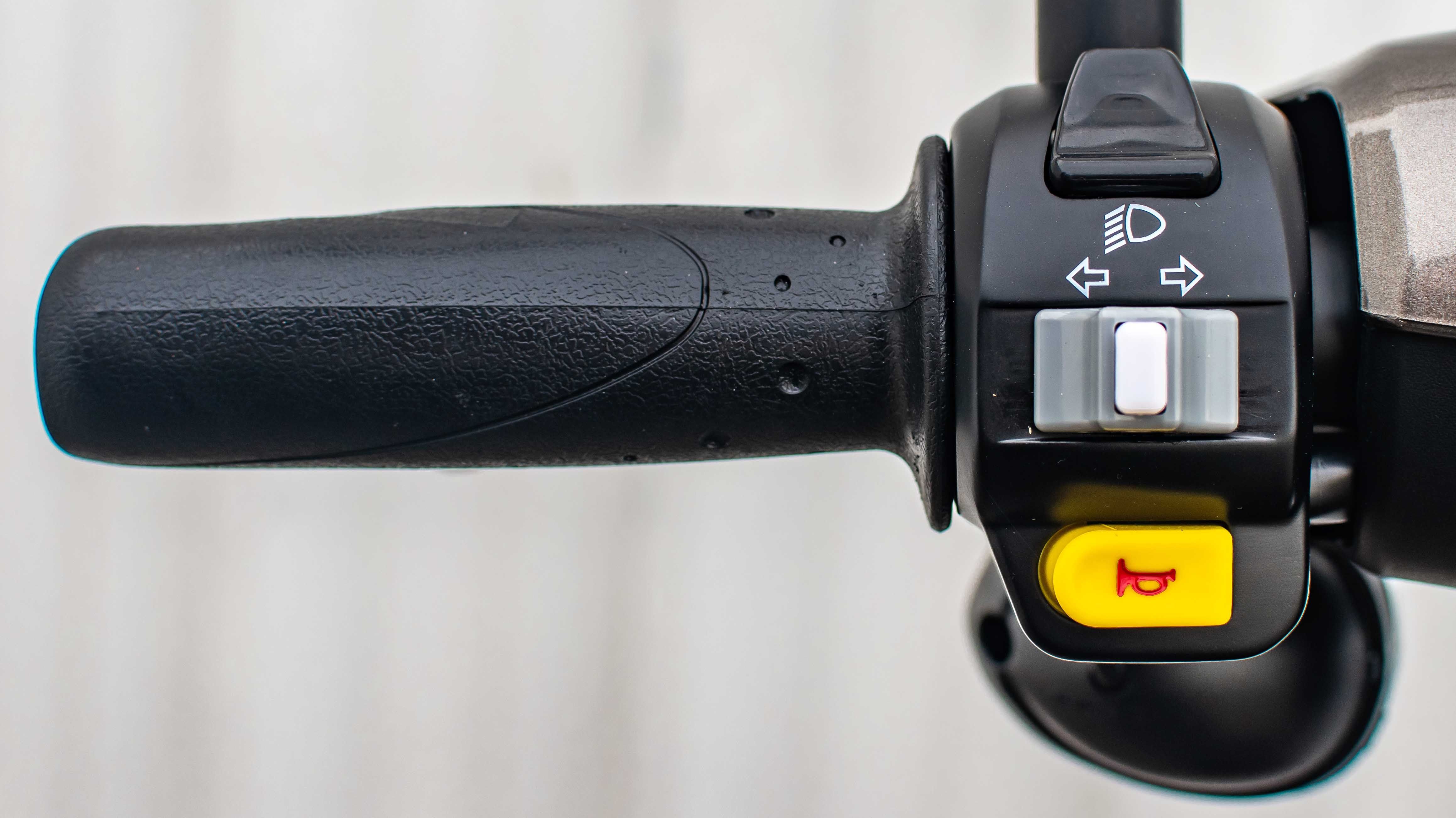
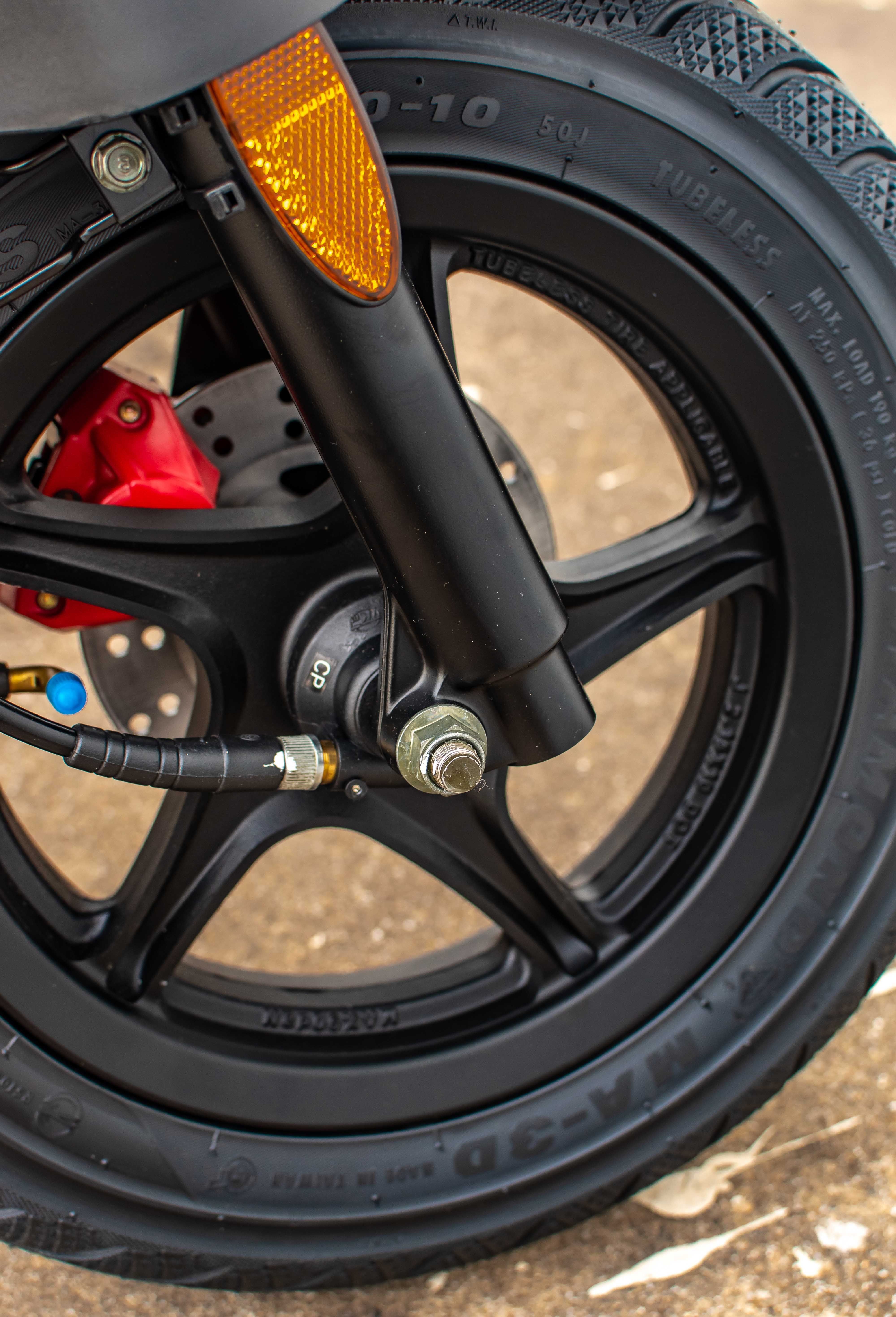
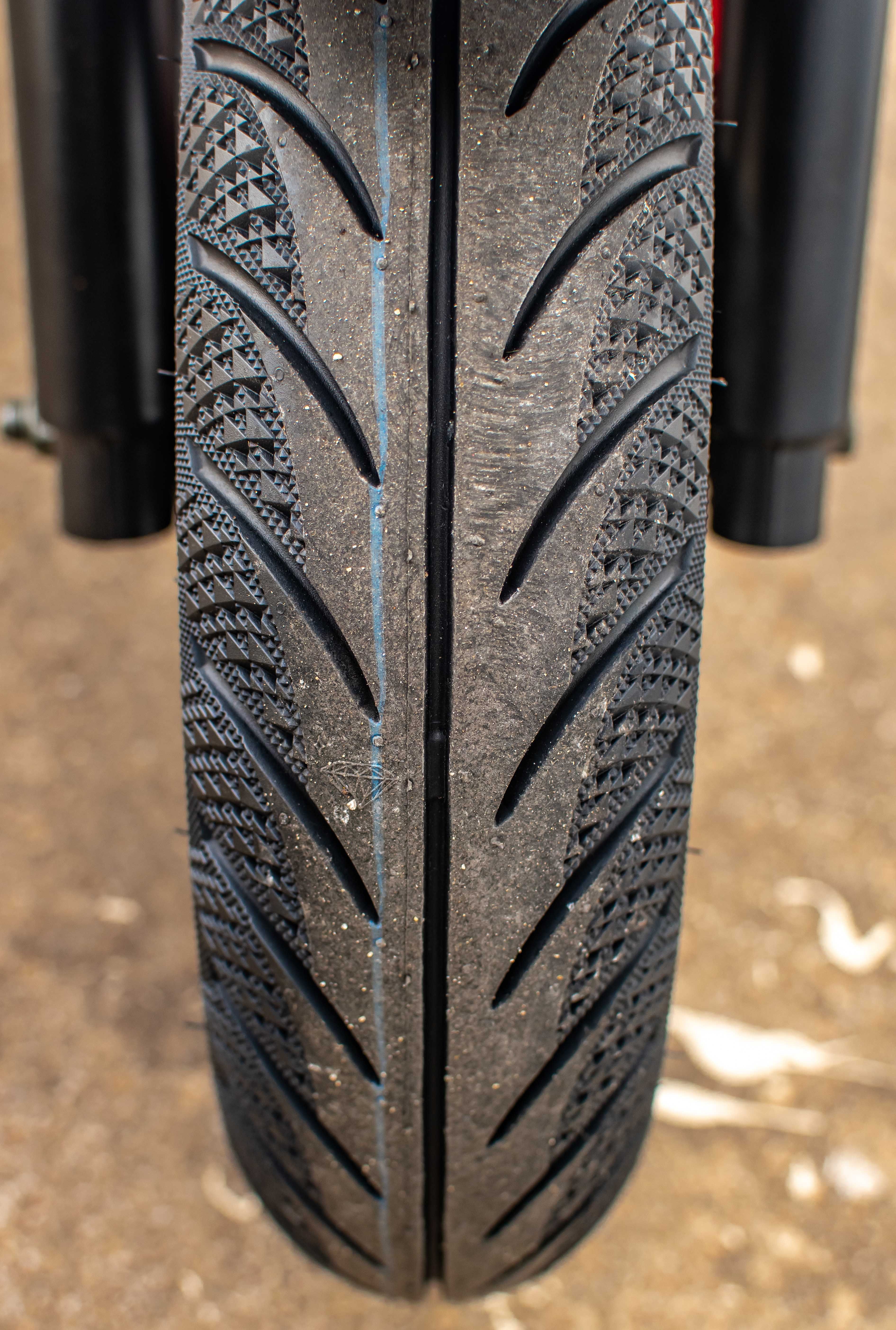
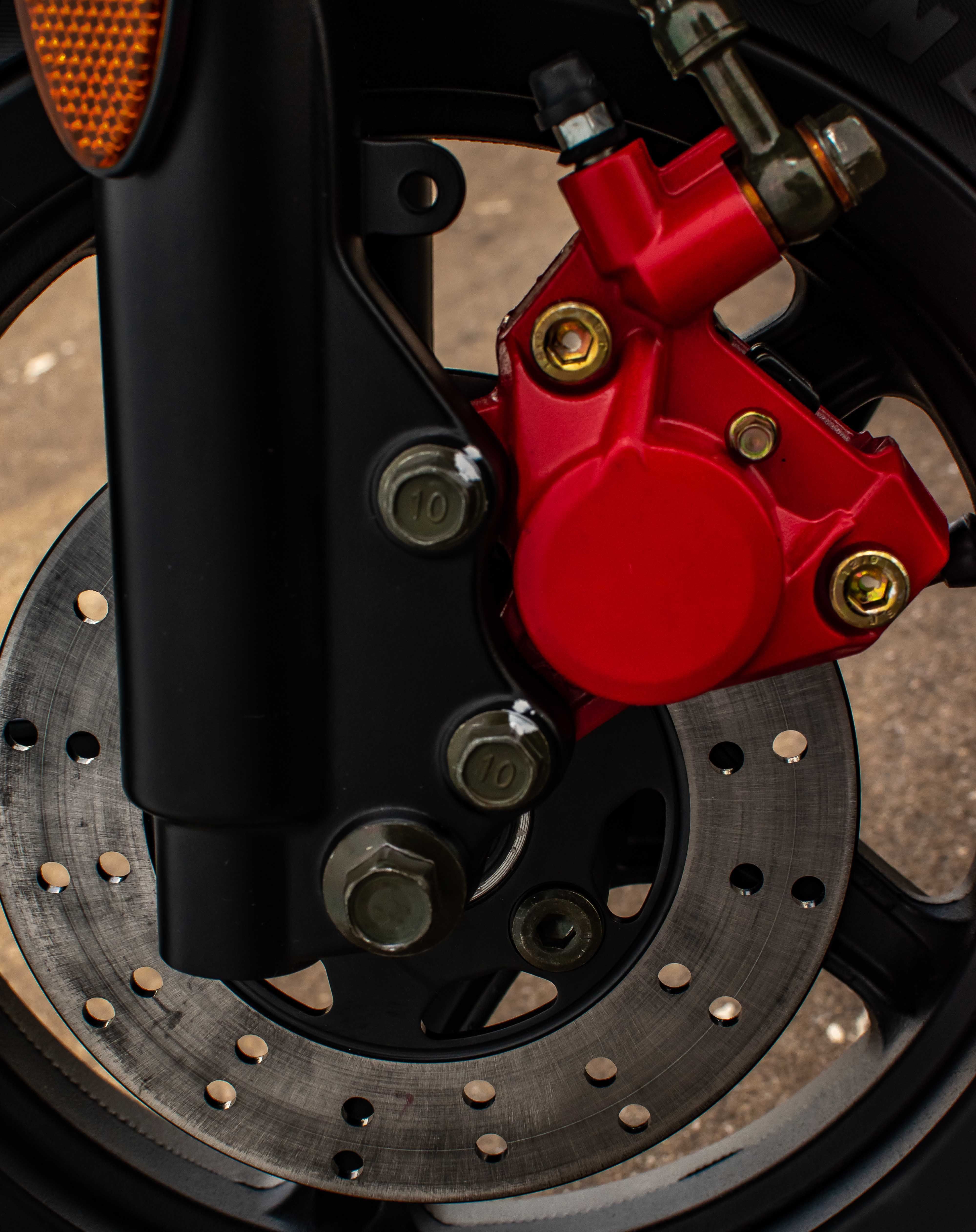
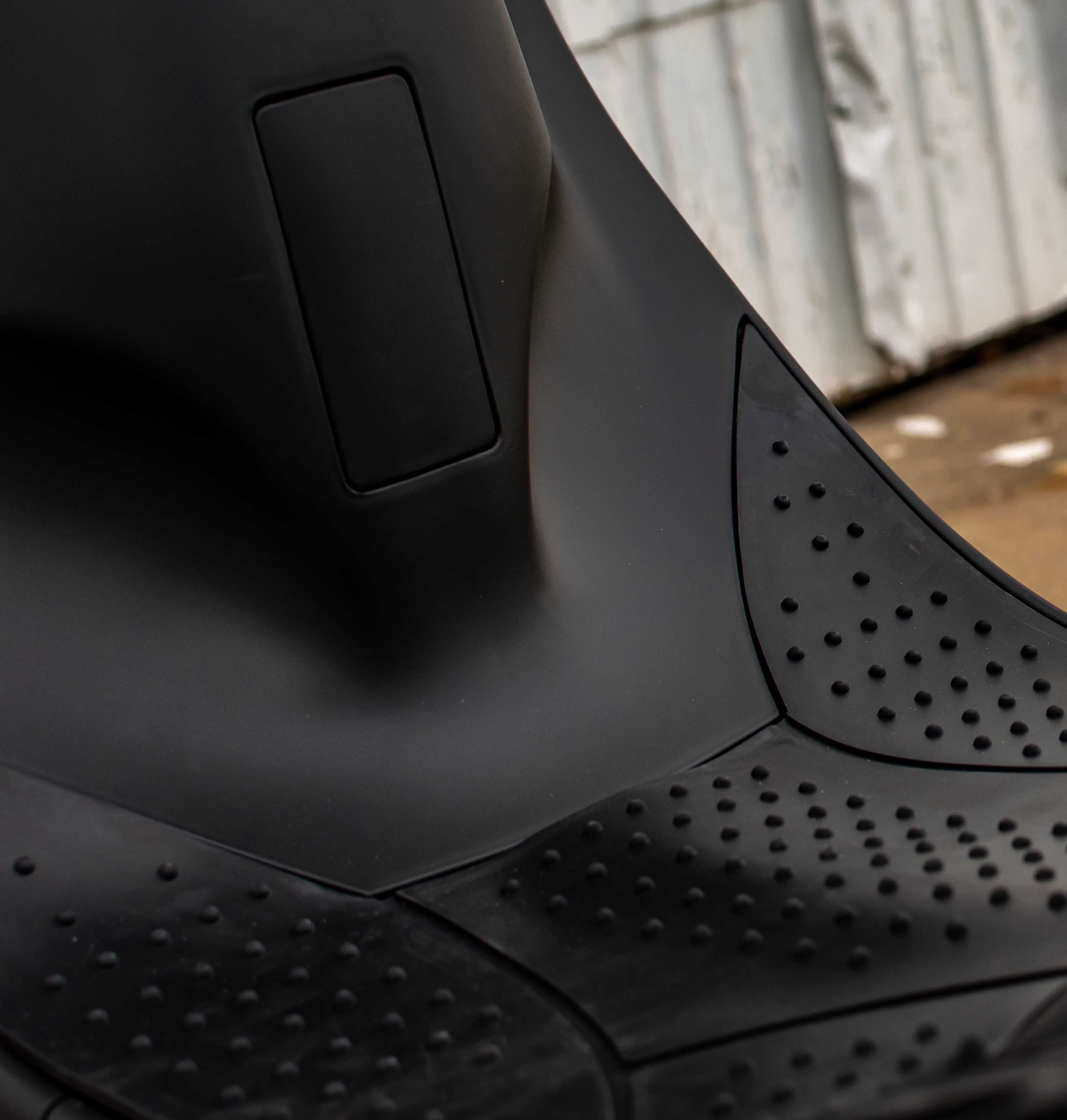
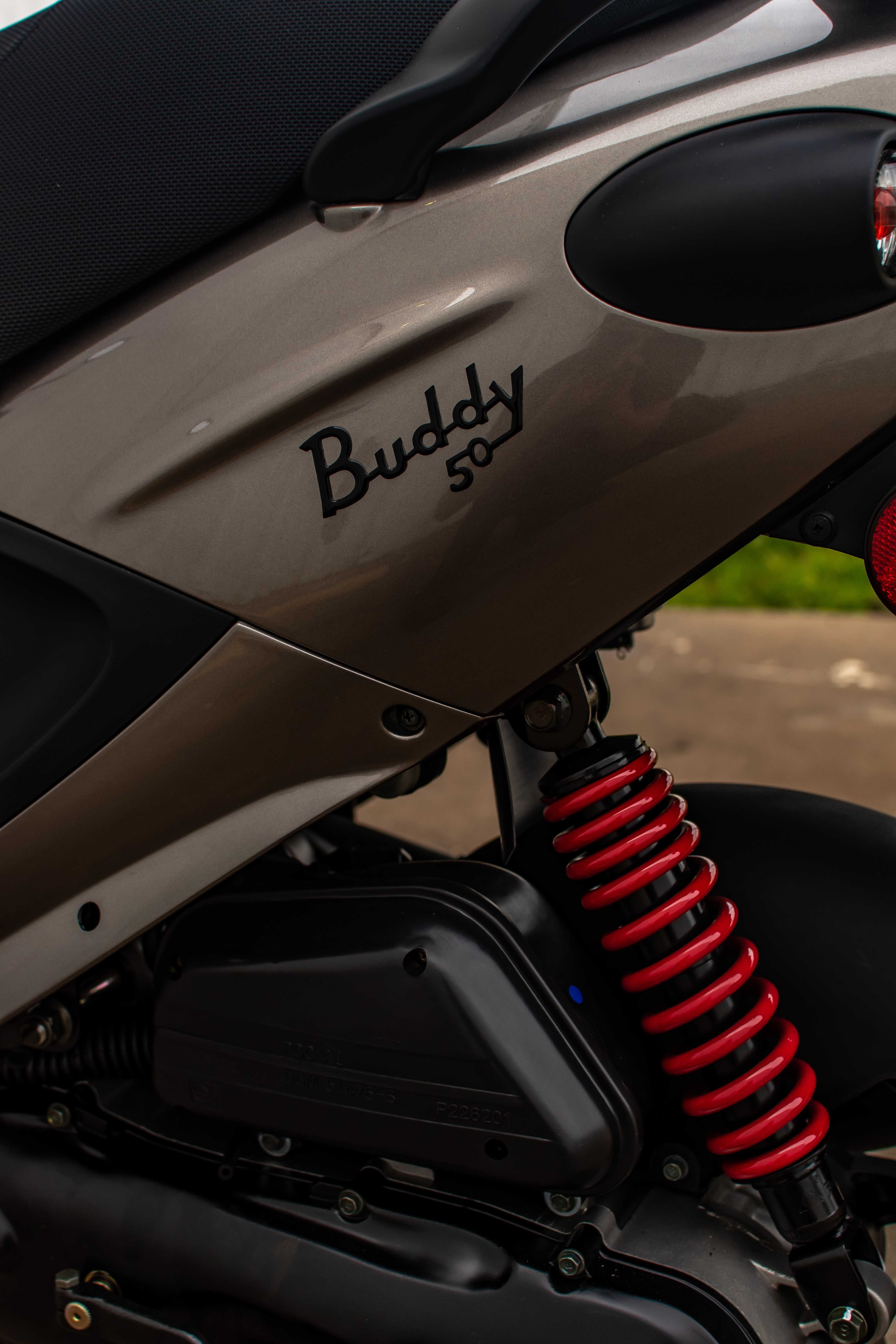
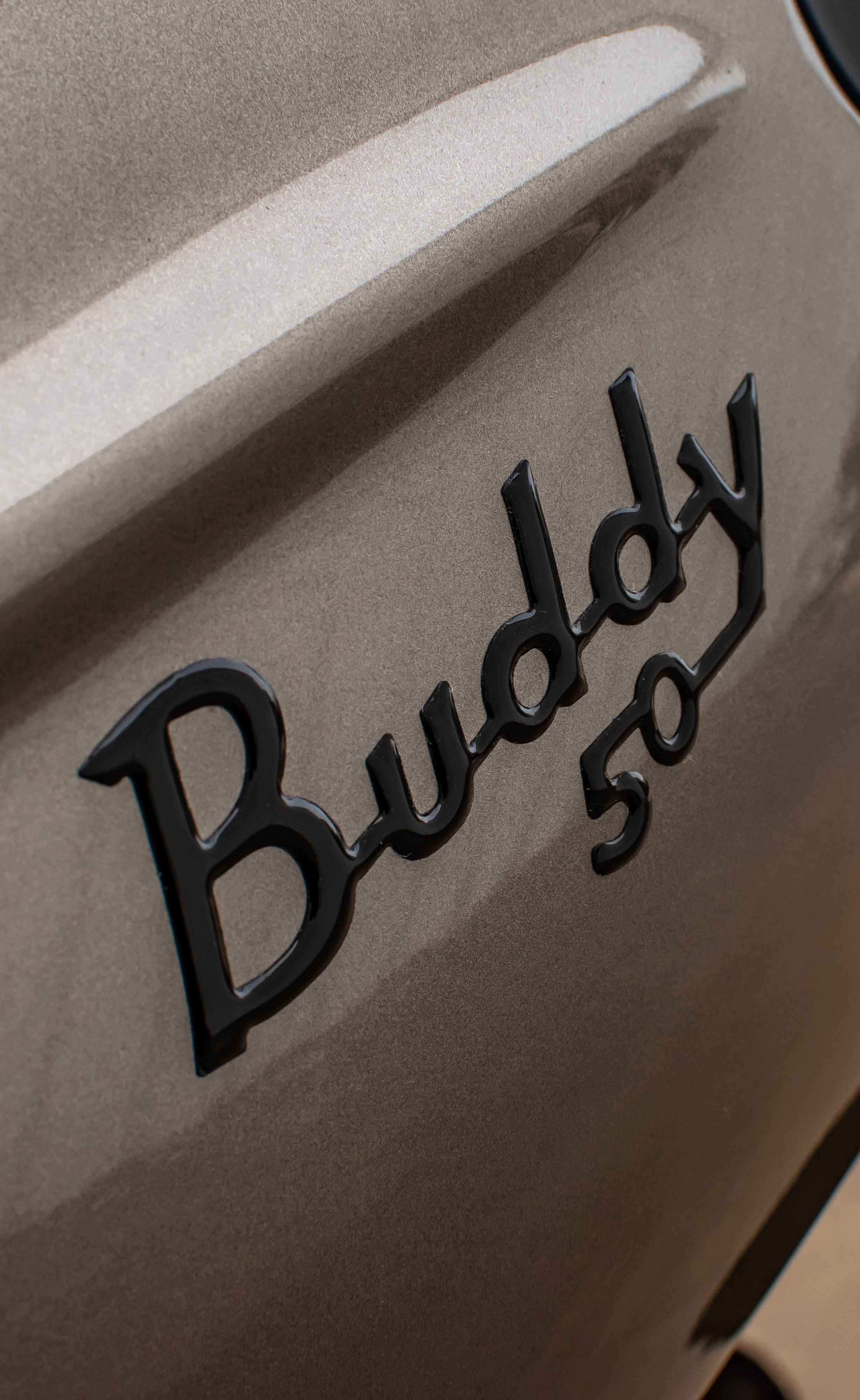
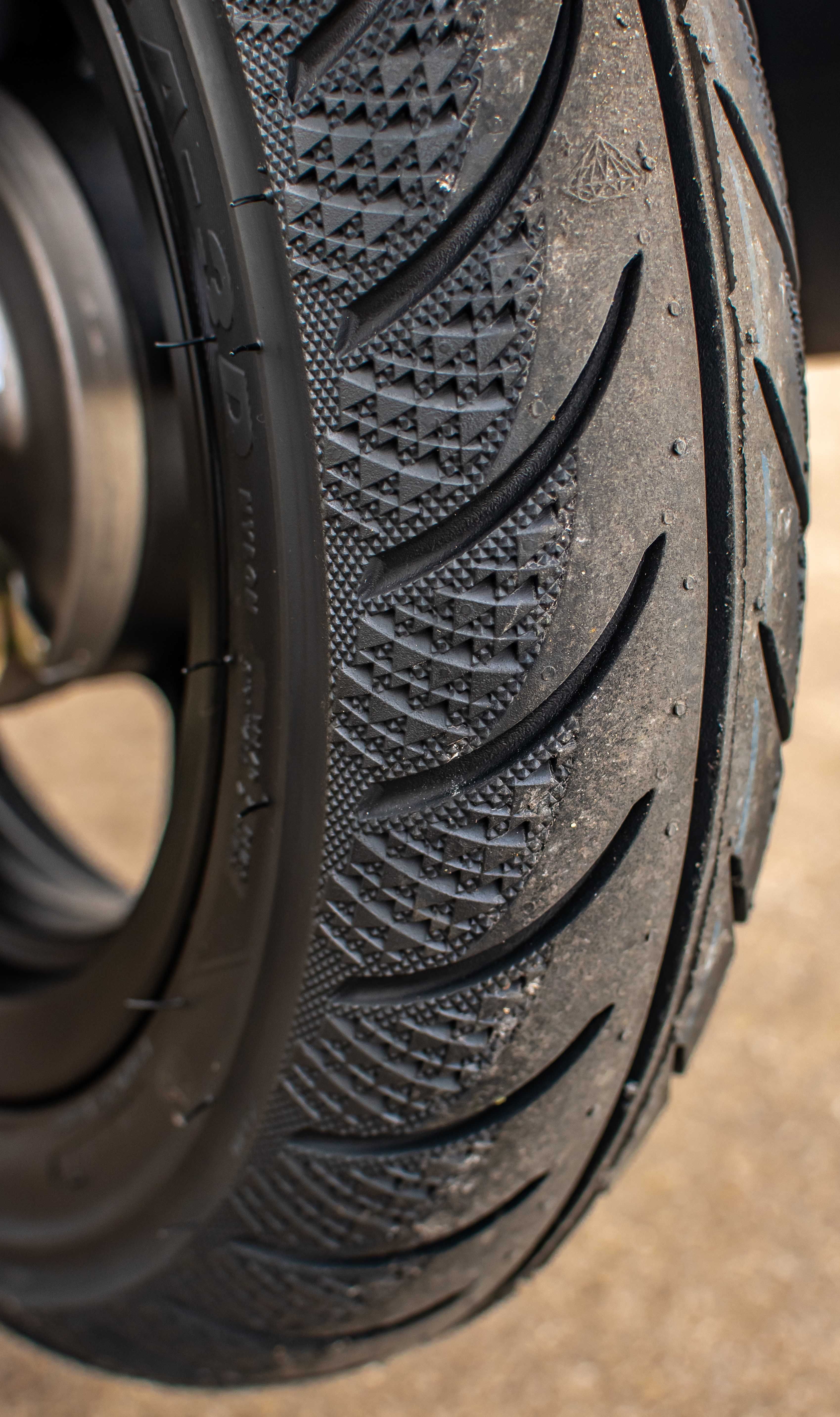
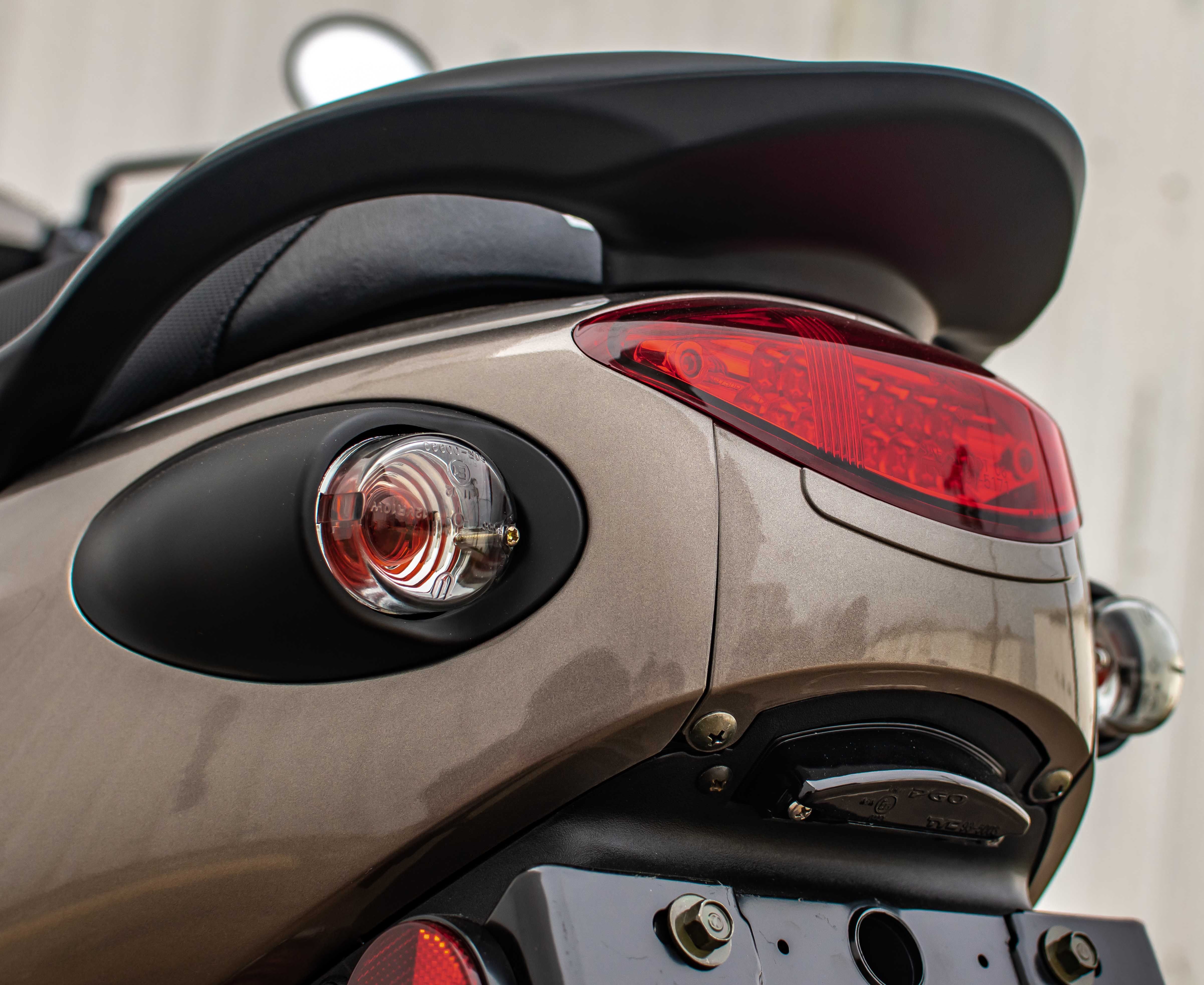
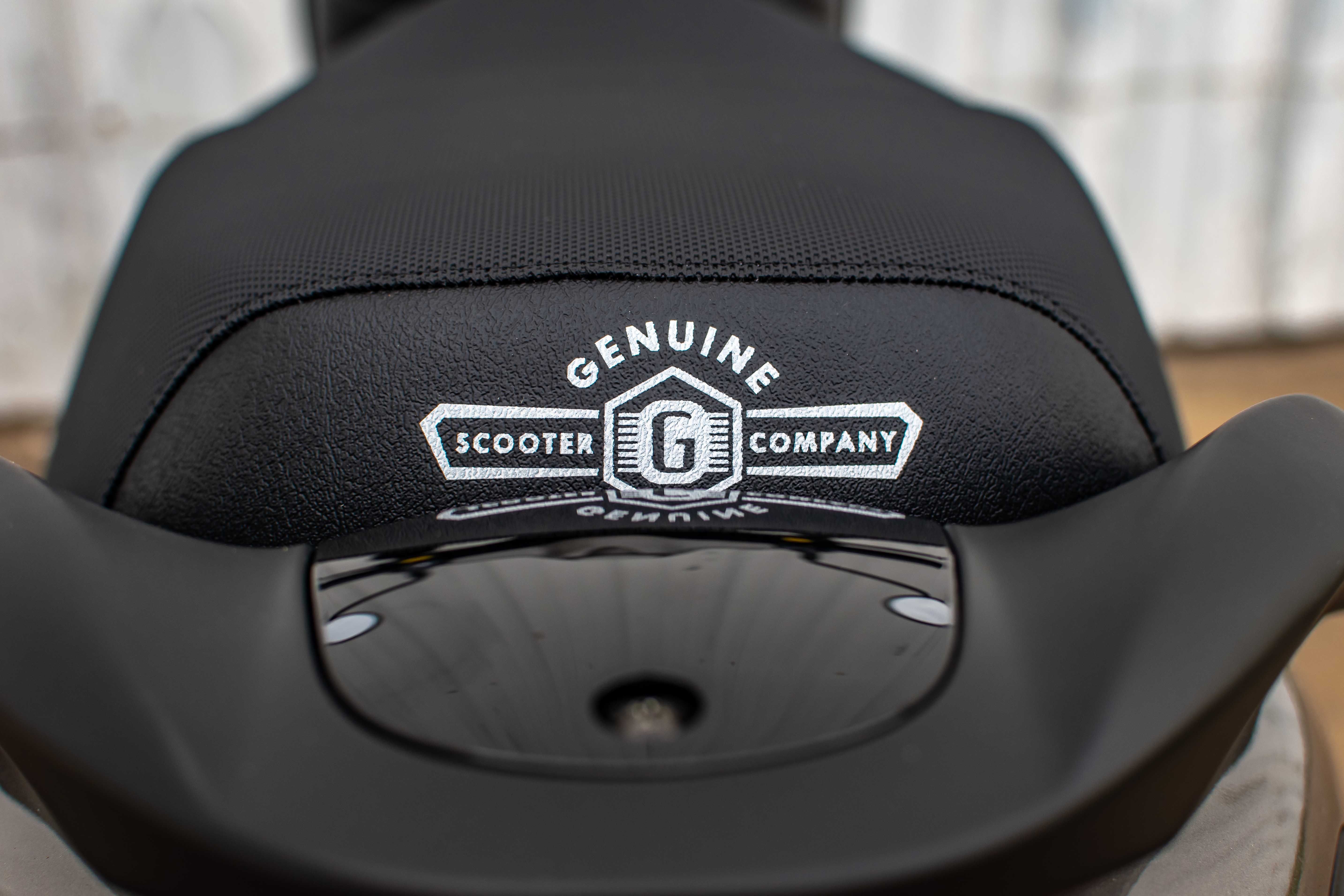
- Make: Array
- Model: 2017 Genuine Scooters Buddy 50 / 125 / 170i
- Engine/Motor: inline-1
- [do not use] Vehicle Model: Array
Design
Genuine Scooters balanced modern construction with classic style elements to give the Buddy its looks. A cut-down front fender leads the way under the smooth front fairing that bears the brand badge and family name as its only adornment. Up top we have one of the classic, old-school touches that adds so much to the looks; the enclosed handlebar fairing that also houses the headlight as well as the instrument cluster for a clean, classy look. Tall standoffs lift the chrome mirrors up and out where they are actually useful for something other than gazing at your own jacket sleeves.
At the inner fairing, a couple of storage cubbies with a USB port lets you plug in and charge your mobile device while on the go. A grocery-bag hook augments the open-air storage space created by the full step-through and flat deck. Underneath the seat we can find a chunk of dry storage large enough for a smaller full-face helmet as well as the fuel filler cap. Personally, I've never liked having cargo in the same general area where there could possibly be a fuel spill, but I recognize that many manufacturers like to arrange things this way and plenty of folks are OK with it.
The seat itself carries a little taper, but the design isn't as severe as some of the other popular models and the upper corners might bite the thighs of shorter riders. Taller riders over about 5-feet-8 or so will start to feel the compact nature of the Buddy, and folks over 6-feet-tall won't be able to tuck in behind the leg fairing very comfortably, if at all.
A narrow pillion section finishes the rear of the saddle with a chrome oh crap rail around the back that joins the chromed passenger footboards for the two-up accommodations. The rear of the scooter itself is very reminiscent of some of Vespa's->ke2257 products, and it makes for a nice clean finish over the narrow mudguard that supplements the hugger fender over the rear wheel.
Design-wise, the family is all identical until you spot the not-so-cool-looking oil cooler and filter underneath the 170i. Not only is it hard to miss and not particularly attractive, but the exposed position right behind the front wheel leaves it vulnerable to rock/debris strikes. Not sayin' I have a better idea; just sayin' that there's problems with that location, is all.
Chassis
Standard, right-side-up hydraulic forks mount the front wheel, a wheel which unfortunately runs at the small end of the spectrum with a 10-inch rim. Yeah, it fits the classic look well enough, and the Buddy 50 International models run nice, wide whitewalls, but I prefer the ride of the larger diameter hoops, myself.
A twin-pot caliper binds the front brake disc, but the rear wheel is slowed by an old-fashioned drum brake. Sure, it works well enough for such small sleds, but I still prefer all-around hydraulic discs. Both ends mount 90/90 hoops, but in spite of the small size of the wheels -- heck, the whole scooter for that matter -- the Buddy likes the corners, and will take them as hard as most reasonable people would dare.
A coil-over monoshock springs off the swing-mount drive unit to complete the suspension package, and like the front end, it's non-adjustable. Not a dealbreaker by any means, but there it is.
Drivetrain
As the ingeniously-clever model names suggest, these scoots come in three different sizes. At the bottom of the heap we have the Buddy 50 and the Buddy 50 International with a 49.7 cc mill. It's an air-cooled two-stroke that claims a 30-plus mph top speed and over 100 mpg.
In the middle, the Buddy 125 packs in a carbureted 124.9 cc mill with air cooling, but upgrades to a four-stroke engine. The beefier mill claims 50-plus mph and 90-plus mpg for a bit of an edge over its little brother.
At the top of the food chain we have the 168.9 cc Buddy 170i. We still have the air cooling, but the factory added an oil cooler for an extra layer of thermal protection, and it dropped the soup can in favor of modern electronic fuel injection to manage the induction. This leaves us with a claimed 55-plus mph at 90-plus mpg, and the only freeway-legal unit of the bunch.
Pricing
You can score a “50” for a mere $1,999 in any one of seven paint packages plus a couple of two-tone paint jobs in the $2,199 “International” line. The “125” rolls for $2,699 and the top-shelf “170i” commands a $3,299 MSRP. I gotta say, although they don't rise to the standard of the King of Paint, Genuine Scooters really offers some good-looking colors, and the two-tone paint jobs are hella-cool.
Competitors
Genuine Scooters seeks to bring a Euro flair to a slice of the U.S. market already occupied by genuine European scooters, so I figured a head-to-head against a bona fide European ride was in order. My choice; the Primavera 150->ke5591 by Vespa. Yeah, that's a pretty strong pedigree, but let's see how the Buddy fares anyway.
Naturally, the Vespa effortlessly exudes that timeless old-world vibe with just enough in the way of classic design elements to show its deep heritage, but that's to be expected after all. Small wheels (though Vespa runs 11-inch hoops) enclosed handlebars and compact layouts are constants across the board though the Primavera is a sight larger with its 52.7-inch wheelbase. Compare that to the 48-inch wheel centers on the Buddy and you start to get a sense of the scale. That said, they both will definitely be more comfortable for shorter riders than those who shop in the big-n-tall section. One thing the Vespa has going for it in the looks department is the lack of a big, honkin' oil cooler and exposed oil filter like the Buddy 170, so it comes off with a more polished and clean overall look.
As usual, Vespa runs its one-sided, arm-and-shock front suspension as opposed to the motorcycle-like hydraulic forks on the Buddy, and both run a coil-over monoshock to tame the rear. Rear drum brakes are another constant across the board, as are hydraulic front brakes, but if you want ABS protection, only Vespa has you covered. The Primavera 150 has an ABS version that rolls for a smooth $4,999; quite a jump from the $3,299 sticker on the Buddy. To be fair, name power and experience does have to count for something at the checkout.
Speaking of power, the Buddy packs in a few more cubes with a 168.9 cc mill versus the 154.8 cc plant in the Primavera. Both manufacturers use air cooling and fuel injection so neither really gain anything there, but Vespa claims 61 mph and 98 mpg while the Buddy only turns in a vague 55-plus mph top speed and 90-plus mpg. Yeah, it's a small difference, but it may be the difference between being comfortable on the highway, and hanging on for dear life, praying for the next exit and expecting to be run over any minute.
He Said
My husband and fellow motorcycle writer, TJ Hinton, says, “At the end of the day it's really just another small scooter to me, but I gotta give props to whoever handles the paint selection. Most of the single colors are pretty nice, though the lavender is a little too “My Little Pony” if you ask me, but the two-tone packages are really sharp and the seats and grip colors compliment the sheet metal quite nicely.”
She Said
"I would be quite comfortable riding a Buddy around town. I'm short and it seems like it is made for us height-challenged folks. I think taller folks are going to be a bit cramped, but as always, try before you buy to know what fits you best. The colorways are surprisingly nice. I say "surprisingly" because I wasn't expecting anything but black, white and maybe blue or red, so the color choices and the color pairings on the two-tones are actually quite nice."
Specifications
|
Model: |
50 |
125 |
170i |
|
Engine: |
49.7cc 2-Stroke, Air-Cooled |
124.9cc 4-Stroke, Air-Cooled |
168.9cc 4-Stroke Fuel Injected, Air-Cooled |
|
Transmission: |
Automatic (CVT) |
Automatic (CVT) |
Automatic (CVT) |
|
Braking: |
Front Hydraulic Disc; Rear Drum |
Front Hydraulic Disc; Rear Drum |
Front Hydraulic Disc; Rear Drum |
|
Tire Size: |
F:R: 90/90-10 |
F/R:3.5" x10" |
F/R: 100/90-10 |
|
Dry Weight: |
198 lbs |
220 lbs |
243 lbs |
|
Mileage: |
100+ MPG |
90+ MPG |
90+ MPG |
|
Top Speed: |
30+ MPH |
50+ MPH |
55+ MPH: |
|
USB Port: |
Yes |
Yes |
Yes |
|
Warranty: |
2-year / unlimited-mile |
2-year / unlimited-mile |
2-year / unlimited-mile |
|
Colors: |
Glossy Titanium, Lavender, Lime Green, Seafoam, Tangerine, Turquoise, White (Buddy 50 International: Italia, Pamplona) |
Glossy Titanium, Lavender, Lime Green, Seafoam, Tangerine, Turquoise, White |
Brit Racing Green, Glossy Titanium, Matte Black, Mocha, Seafoam, Italia, Pamplona |
|
MSRP: |
$1,999 (Buddy 50 International: $2,199) |
$2,699 |
$3,299 |

